Iceland
COMMUNITY, CULTURE, NATURE — SINCE 1963
NATURE UNSETTLED
What is the value of Iceland’s wilderness?
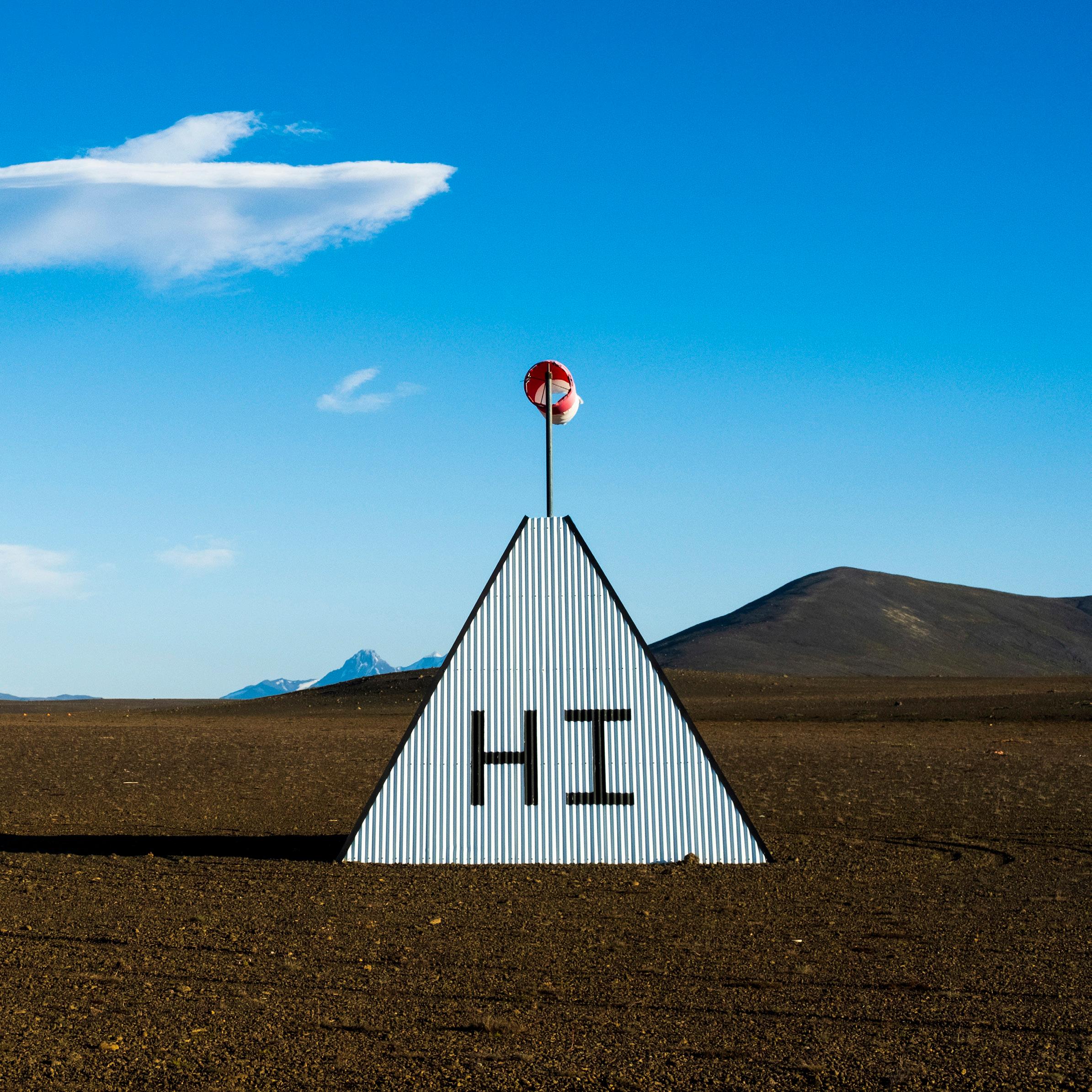
MUSIC BJÖRK HOMECOMING QUEEN
The musician on her “mushroom album” Fossora.
SOCIETY
THE RIGHT TO BEAR ARMS
The remarkable surgery that changed Guðmundur Felix’s life.
Review
G et lo s t wit h i n th e c it y
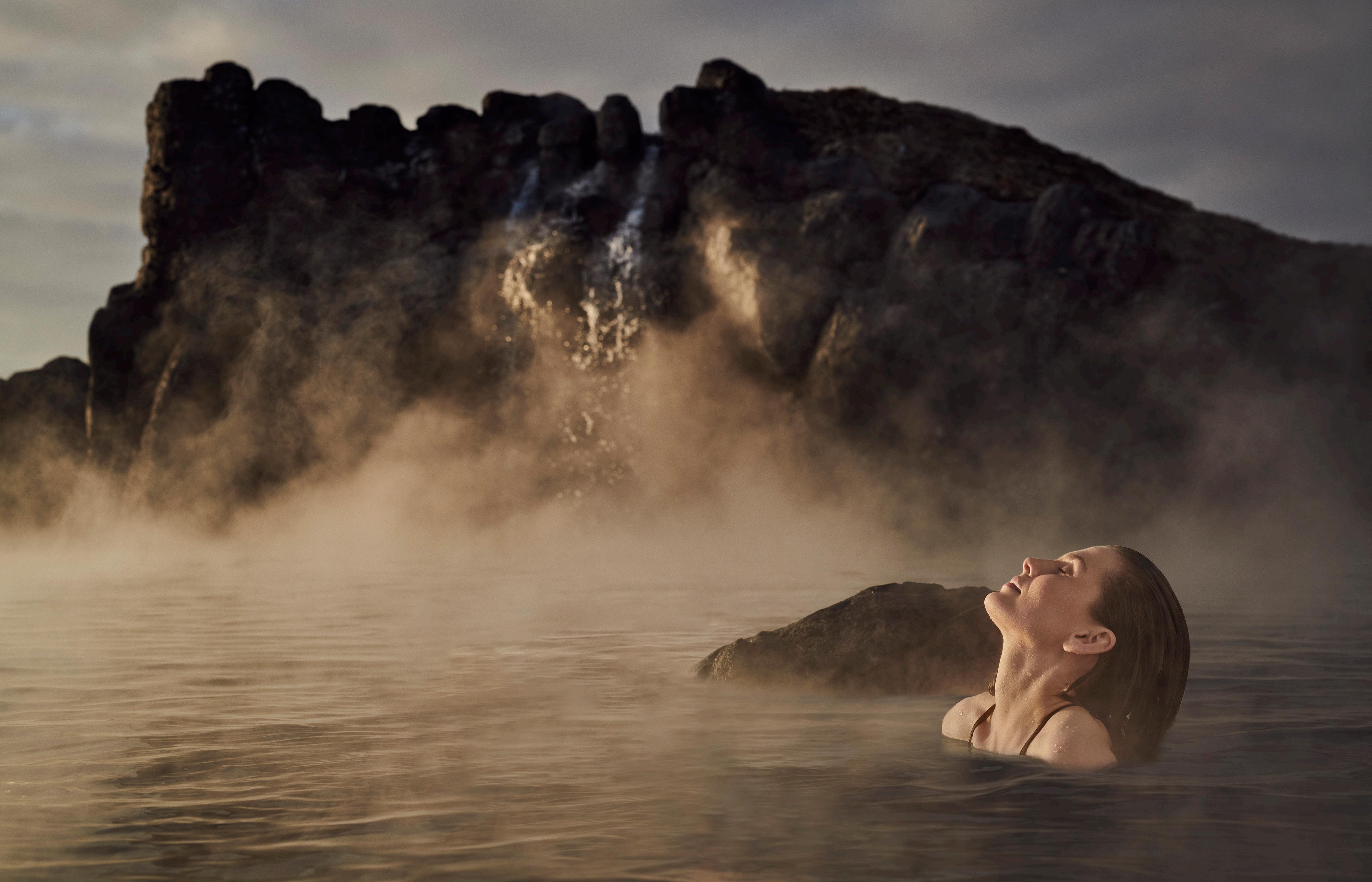

CONTENTS
NEWS IN BRIEF 6
ASK ICELAND REVIEW 8
IN FOCUS
THE PRESCHOOL SYSTEM 10
LOOKING BACK THE MIXED LEGACY OF ARCTIC EXPLORER VILHJÁLMUR STEFÁNSSON 72
FICTION
THREE MICRO STORIES BY ELÍSABET JÖKULSDÓTTIR 120
SOCIETY
IN HARM’S WAY 14 Iceland’s new addiction crisis and those battling it.
THE RIGHT TO BEAR ARMS 24
The remarkable surgery that changed Guðmundur Felix’s life.
MUSIC
HOMECOMING QUEEN 64 Björk on her “mushroom album” Fossora.
LOVE, BRÍET 32
Has rising to local fame changed the pop star?
LITERATURE
I WILL DANCE AGAIN 110
Writer Elísabet Jökulsdóttir on kidneys, creativity, and King Boredom.
FOOD HOME COOK 42
A voyage into Gísli Matthías Auðunsson’s taste of Heimaey.
COMMUNITY
GATHERING 98
Our journalist makes himself at home at a traditional sheep roundup.
NATURE
UNSETTLED 50
What is the value of Iceland’s wilderness?
WHERE THERE’S FIRE 82
The volcanic reawakening of the Reykjanes peninsula.
CONTRIBUTORS
Editor
Gréta Sigríður Einarsdóttir
Cover
Golli
Kjartan Þorbjörnsson
Design
Daníel Stefánsson
Writers
David Timmons
Erik Pomrenke
Frank Walter Sands
Jelena Ćirić
Ragnar Tómas Hallgrímsson
Golli
Viðar Logi
Dartmouth College Library
Illustrator
COVER PHOTO: Golli. By Kjölur, between two glaciers.
Elín Elísabet Einarsdóttir
Translator
Larissa Kyzer
Copy editing
Jelena Ćirić
Proofreading
Erik Pomrenke
Zachary Jordan Melton
subscriptions@icelandreview.com
Advertising sales sm@mdr.is
Ltd.
(worldwide)
For more information, go to www.icelandreview.com/subscriptions
Head office MD Reykjavík, Laugavegur 3, 101 Reykjavík, Iceland, Tel.: (+354) 537-3900. www.icelandreview@icelandreview.com
No articles in this magazine may be reproduced elsewhere, in whole or in part, without the permission of the publisher. Iceland Review (ISSN: 0019-1094) is published six times a year by MD Reykjavík in Iceland. Send address changes to Iceland Review, subscriptions@icelandreview.com .
2 | ICELAND REVIEW FEATURES TABLE OF
icelandreview.com
photo
Publisher
& production
Photographers
Subscriptions
Print Kroonpress
5041 0787 Kroonpress NORDIC SWA N ECOLAB E L Annual Subscription
€72.

whale watching húsavík eco-friendly since 1995 www.northsailing.is call +354 464 7272 or book your adventure at Pick your favourite whale watching tour!
FROM
Travellers to Iceland often remark that it must be such a privilege to grow up surrounded by Iceland’s mountains and ocean views. In many ways, it is, but the thing about growing up anywhere is that you get so used to your surroundings, they start to feel eternal. When the mountains have always been there, it feels like they’ll always be there. There’s no sense of urgency to experience them.
In the early 21st century, all of a sudden, the eternity of Iceland’s highland was under threat. Kárahnjúkar in the mountains of East Iceland was a little-explored area that many had never heard of until plans were underway to dam a river, plunging the whole area into a lagoon to feed a hydroelectric dam.
To make matters worse, the majority of the power created by these drastic measures would be used to power a single aluminium smelter.
It had happened before. In the 1930s a whole valley in North Iceland, including seven farmsteads, went underwater. At the time, the wilderness felt like an endless resource, the desolate highlands useless until we harnessed its energy to light our homes and power our factories. In the 21st century, wilderness is facing extinction and the country’s mountainous interior represents more than an empty wasteland. A turning point in the way we view Iceland’s nature was the time when we realised there was a chance it would be taken away from us. It was at that time that Björk discovered she had an interest in politics because it affected something that was close to her heart. Author Elísabet Jökulsdóttir also took part in the fight to keep Iceland’s wilderness wild.
Guðmundur Felix is an Icelandic man who lost both his arms in an accident more than 20 years ago. Just last year, he had the world’s first successful double arm transplant surgery. While that’s impressive, even more impressive is the stoic serenity that he found when he realised his misery wasn’t due to the accident, but his resistance to accepting reality. It’s not until you recognise your reality for what it is that you can begin to change it. And through the music of pop star Bríet, our journalist also remembered what’s truly important.
In this issue, we asked scientists, politicians, and environmentalists about the price of Iceland’s wilderness, and admired the fiery side of its everchanging nature when a volcano erupted about a 45-minute drive from Reykjavík. We tasted the fresh herbs growing out of volcanic sand on the Vestmannaeyjar archipelago and caroused with the farmers of North Iceland celebrating the age-old tradition of drinking a lot after bringing their sheep in for the winter.
It’s life as it’s always been, transformed.
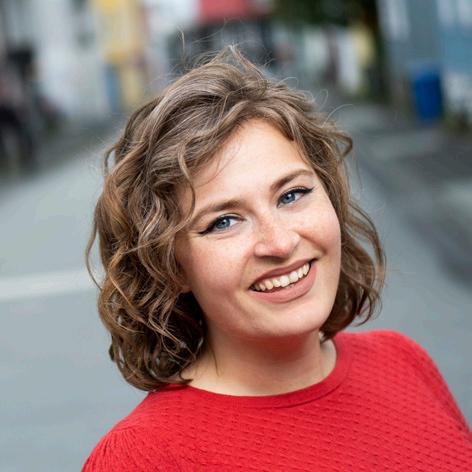 Editor Gréta Sigríður Einarsdóttir
Photography by Golli
Editor Gréta Sigríður Einarsdóttir
Photography by Golli
4 | ICELAND REVIEW
THE EDITOR ICELAND REVIEW · ISSUE 05 – 2022
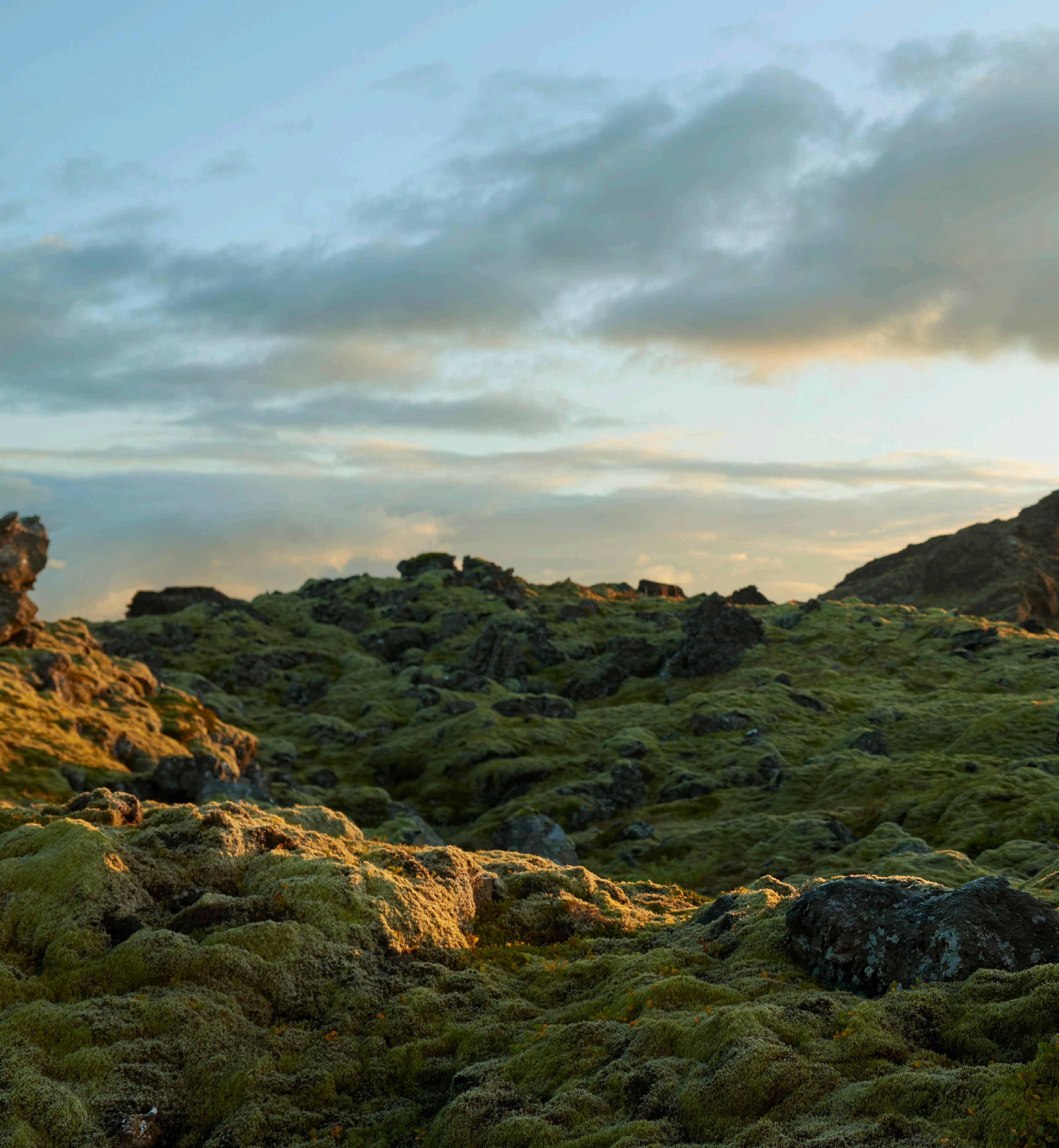


Join the largest mobile network in Iceland SIM card | 5 GB data 5 GB 50 international min. | 50 sms 2.900 ISK 2.900 ISK SIM card | 10 GB data 10 GB Only data – No calls +354 800 7000 siminn.is / topup siminn.is / prepaid siminn.is siminn siminnisland For more information:
Inflation rates dropped in August to 9.7%, suggesting that this trend is beginning to cool and that housing prices may stabilise in the coming months.

01 Blönduós shooting
Tragedy struck the small community of Blönduós in North Iceland in late August when two people died, and one was injured in a shooting. In the early morning hours of August 21, a man entered the home of his former employer with a shotgun. The perpetrator shot the homeowner and his wife before the couple’s son intervened. The shooting resulted in the death of the woman and of the shooter. The father was rushed to the hospital in serious condition. The son was initially arrested for killing the attacker but was later released.
02 Market inflation
Inflation rates in Iceland had been steadily increasing since the summer of 2021, reaching 9.9% in July of this year. This increase has particularly impacted the housing market in Reykjavík. Supply already falling well short of demand, and the inflation caused what apartments had been available to skyrocket in price. The situation has been particularly dire with the influx of not only tourists but also foreign workers coming to Iceland to fill the holes in the tourism workforce, as well as Ukrainian refugees desperately searching for housing. Thankfully, inflation rates dropped in August to 9.7%, suggesting that this trend is beginning to cool and that housing prices may stabilise in the coming months.
03 Film industry funding changes
The upcoming series of HBO Max television show True Detective will be filmed in Iceland over a 9-month period for a budget of around ISK 9 billion [$64.8 million; €63.9 million]. The project entails the largest-ever foreign investment in culture in Iceland’s history. Minister of Culture Lilja Alfreðsdóttir says the project is proof that government initiatives are helping put Iceland’s film industry on the map.
In recent years, the State Treasury has reimbursed up to 25% of the costs incurred by film and TV productions in Iceland, and recently announced that the percentage would be raised to 35% for projects that qualify. Shortly afterwards, however, the local film industry was dismayed to learn that the government also plans to cut funding to the Icelandic Film Fund by onethird. Industry experts say the decision erases an ambitious 10-year policy for the local film industry drafted just last year, and argue there is room in the budget to support both international and local projects.
Photography by Golli
Words by Zachary Jordan Melton and Jelena Ćirić
6 | ICELAND REVIEW NEWS IN BRIEF

ISSUE 05 – 2022 | 7 MÝ VAT N N ATURE B ATH S pre-book online at m y v at nn a tureb at hs . i s R E LA X E N J OY EXP E RI E NC E
As you may have noticed from driving around Iceland’s countryside, there are many sheep. Historically, sheep were put to pasture in the highlands during the summer and then, as the weather turned for the worse, they were gathered up to be housed in sheds on the farmstead.

Farmers still live by this seasonal pattern in Iceland, letting their sheep roam the countryside and then rounding them up in the middle of September, the end of Iceland’s summer.
These roundups, or réttir, will vary depending on the community,
Q2 What can you tell me about North Iceland?
Traditionally, Iceland was divided into four quarters: North, South, East, and West. This was of course a geographical division, but it also had important implications for the legal system in medieval Iceland. Each district had its own legal assemblies where local matters would be solved. More important matters, and issues of unclear jurisdiction, would be brought before Alþingi, the national assembly.
Today, Iceland is organised differently, but when people talk of “going North” or to other regions, the modern usage still conforms largely to the historical boundaries of these districts.
The largest settlement in North Iceland is by far Akureyri, with some 20,000 inhabitants. In fact, Akureyri is the largest settlement outside of the capital region. Akureyri is a charming town with a

but they all generally happen in early September. Your best bet is to check the agricultural and farmers’ newspaper, Bændablaðið.
Réttir are a time when an entire community comes together to pitch in. It’s a lot of hard work to collect and wrangle all of the livestock, but many communities will also have a big party afterwards, called a Réttarball. There tends to be plenty of singing, dancing, and drinking at these celebrations since it’s the last gasp of summer fun before the winter!
bustling but modest walking district. We recommend seeing the church, botanical gardens, and harbour. For winter visitors, Akureyri also has some excellent ski slopes.
Húsavík is also another small but important settlement. A historical fishing and whaling village, it remains an excellent place to go whale watching and is a very popular summer destination. North Iceland also has numerous natural features, such as Dettioss and Goðafoss waterfalls, lake Mývatn, the Dimmuborgir lava fields, and Ásbyrgi, an impressive horse-shoe shaped canyon near Húsavík.
Besides that, North Iceland is also known rather surprisingly for its summers, which are often warmer and clearer than in the capital region.
Q1 When and where are the September sheep roundups scheduled?
ASK ICELAND REVIEW
Photography by Golli Words by Erik Pomrenke
8 | ICELAND REVIEW
HIGH QUALITY HOUSES IN THE NORTH OF ICELAND
FNJÓSKÁ NOLLUR
A loft apartment with incredible views of the fjord.
1 bedroom, 1 bathroom, sleeps 2 (4)
HRAFNABJÖRG AKUREYRI

A very well situated, exclusive villa opposite Akureyri.

bedrooms, 3 bathrooms, sleeps 6
LEIFSSTADIR AKUREYRI
Exclusive villa in the vicinity of Akureyri.
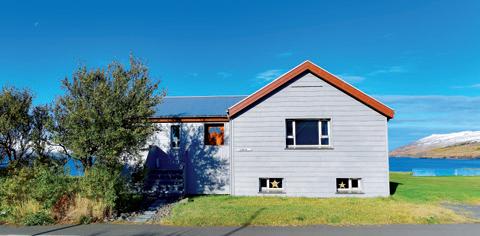



bedrooms, 2 bathrooms, sleeps 8
VALLHOLT GRENIVIK
A spacious, luxurious house at the shore.
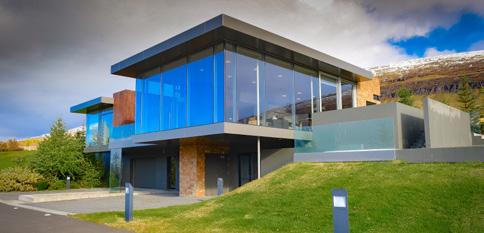
3 bedrooms, 2 bathrooms, sleeps 6
SÚLUR NOLLUR
A wonderful holiday house with an elegant interior.
1 bedroom, 1 bathroom, sleeps 4
KRÝSUVÍK NOLLUR
A convenient loft apartment on the Nollur farm in Eyjafjörður.
bedrooms, 1 bathroom, sleeps 4
and booking www.nollur.is
Photo: Thomas Seiz
ISSUE 05 – 2022 | 9
4
3
2
Details
NOLLUR Húsavík AKUREYRI Vík Höfn Eskifjörður REYKJAVÍK
A rocky start
An announcement on the City of Reykjavík website advertises employment at the city’s many preschools. In addition to the rewarding work of childcare, benefits such as free lunch, a shortened work week, a swim pass, and prioritised placement for one’s own children on preschool waitlists are all enumerated. On paper, this sounds like an excellent offer, and one can imagine a parallel world in which working in Iceland’s preschool system is highly sought after.
However, this fall has been a chaotic one for preschools throughout Iceland. Teacher shortages, long waitlists, and inadequate facilities have combined to cause something of a crisis in childcare. At the time of writing, some 70 vacancies exist for positions in the preschool system, and 700 children aged 12 months and older remain on preschool waitlists in Reykjavík alone.
In August, parents brought their children to stage a “sit-in daycare” at Reykjavík’s City Hall in protest. Their statement was simple and forceful: if Iceland’s parents are to continue participating in the economy, then the city council must fulfill its promise of preschool placements for all children one year and older.
Preschools in Iceland
The preschool system in Iceland is the first level of public education, intended for children up to six years of age before they start their compulsory education. The current framework for preschools was laid out and reformed in the 2008 Preschool Act, which outlined the social role that the preschool system must play, in addition to the skills and values that must be taught to children in Iceland.
Icelandic preschools are also a very important source of employment throughout the nation, with around 5,500 full-time employees. Working in Icelandic preschools is common among
young people and recent immigrants, with many saying that one of the best ways to learn the language is by interacting with children. There are, however, problems with the current system.
Although preschool teachers must undergo a 5-year course of study, much of the work in many preschools is still performed by nonpedagogical staff. During a time of extreme staff shortages, many are wondering if a 5-year degree is necessary, or even if proficient Icelandic ought to be a requirement. Preschool positions also pay relatively low wages, providing little motivation to pursue a master’s degree. An obvious solution to the staffing shortage is, of course, to increase the wage and therefore make work in the preschool system more attractive. But given the large number of Icelanders and immigrants employed in preschools, even modest wage increases could lead to budget crises for municipalities.
Bridging the gap
Although the breaking point reached this year has raised particularly strong critique, the lack of preschool places has been a known problem for some time. In the last decade, the capital region of Iceland has seen tremendous population growth and infrastructure has struggled to keep pace. This growth is not only due to immigration, but to a steady increase in the birth rate, due in part to a COVID baby boom. From just 2020 to 2021 alone, the birth rate increased by 8%. Clearly, the current wave of children has not emerged from nowhere.
Since 2018, the city initiative Bridging the Gap (Brúum bilið) has aimed at a city-wide expansion of preschool capacity. The problem was arguably worsened when, in the last election campaign for Reykjavík City Council, promises were made that children would be guaranteed a spot in preschool from the age of 12 months.

The age at which children are guaranteed a spot in preschool
 Photography by
Photography by
10 | ICELAND REVIEW
IN FOCUS The Preschool Dilemma
Golli Words by Erik Pomrenke 18,852 CHILDRENENROLLEDIN PRESCHOOLS 5,523 FULL-TIMEEMPLOYEES
Adventure Ground
ON THE SOUTH COAST
All in one place
From Reykjavík the Adventure Bus is the easiest way to an unforgettable adventure. Need a ride?

Adventure Ground Offered by: Mountain Guides & Arcanum
An exciting selection of outdoor activities in the beautiful south coast of Iceland. With regular departures from two dedicated Base Camps, less than 10 minutes driving distance from each other, you can fill your day with adventure.
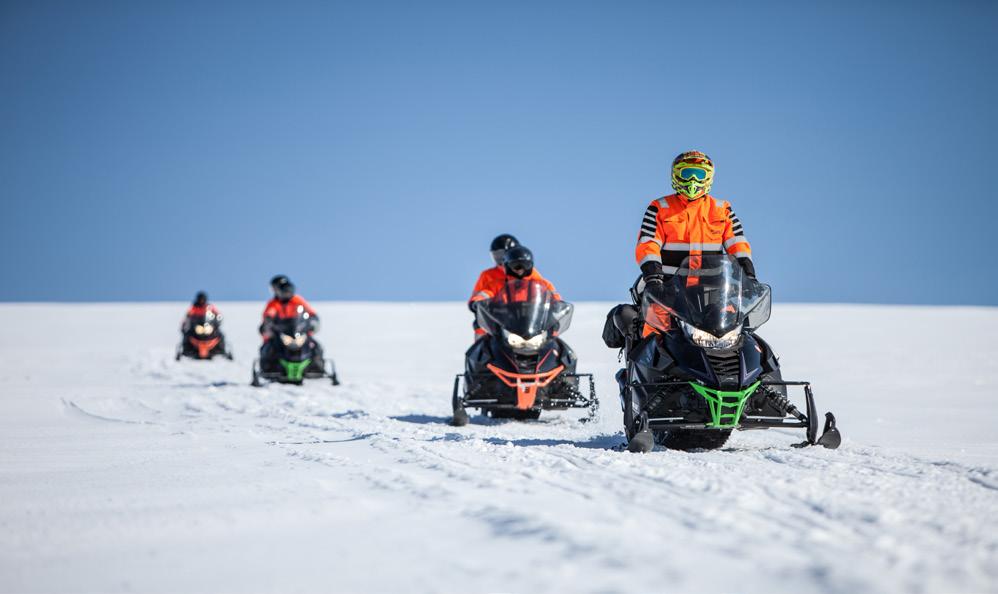
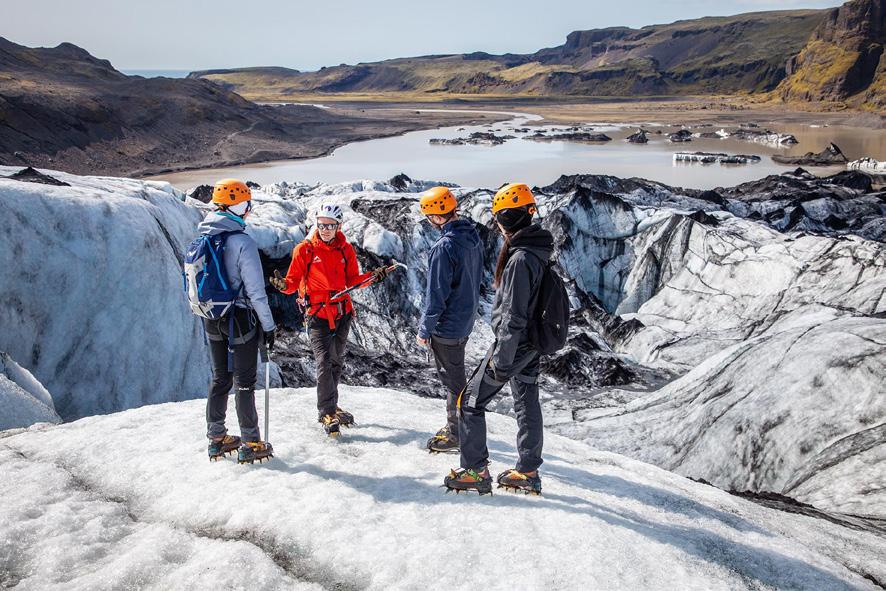

Book your adventure now AdventureGround.is or call us +354 587 9999
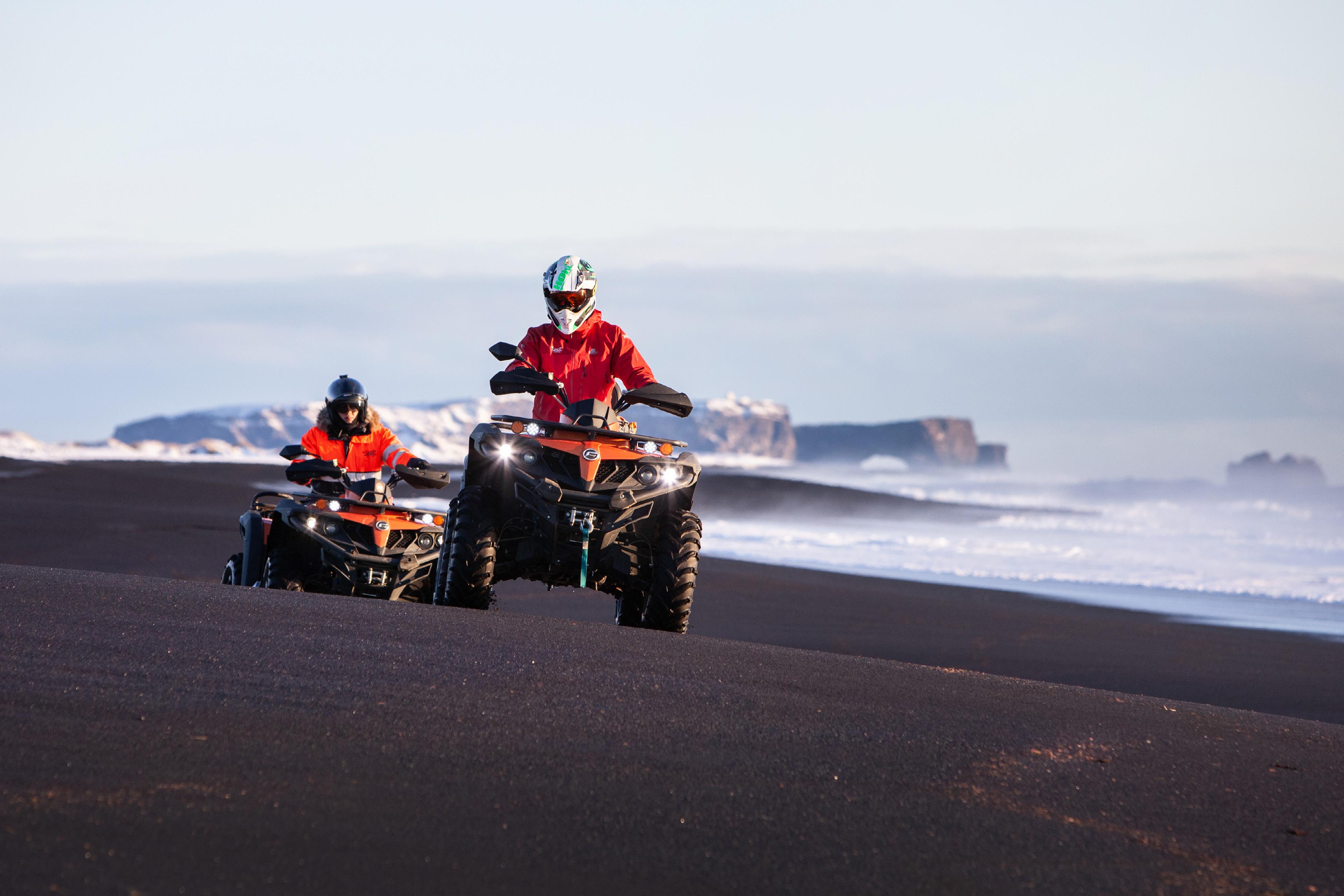
ISSUE 05 – 2022 | 11 Adventure Ground Sólheimajökull Mýrdalsjökull Skaftafell
Three
In the
of
Fríkirkjuvegur

Safnahúsið

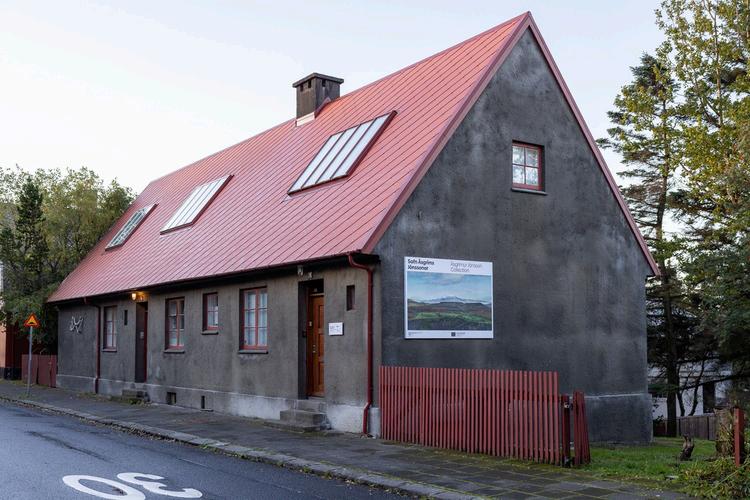
12 | ICELAND REVIEW
Center
Reykjavík
Locations www.listasafn.is+354 515 9600 Listasafn Íslands National Gallery of Iceland Hús Ásgríms Jónssonar Home of an Artist
The House of Collections Bergstaðastræti 74 101 Reykjavík Hverfisgata 15 101 Reykjavík
7 101 Reykjavík
varies between municipalities, with many setting the age at two years, others at 18 months. Ideally, the age at which children are eligible for preschool will correspond to the end of the caregivers’ parental leave, but this is not often the case. Most Icelanders receive 6 months’ paid parental leave, meaning a couple raising a child will have up to 12 months of total leave, with 6 weeks of that total being transferable between the two.

With most preschools only beginning to accept children at 18 to 24 months, these final 6 to 12 months are a gap left in the childcare system. Solutions so far have proved to be a patchwork. Some parents will extend their leave, meaning they receive the same total pay stretched out over a longer period of time. Others rely on paid daycare services or the help of their wider family network to bridge the gap. Both of these solutions, however, favour higher-income natives with social support to raise their children, leaving many lower-income Icelanders and immigrants out in the cold. This gap between parental leave and preschool is the major reason the preschool system became a hot-button issue this last election cycle in the City of Reykjavík.
Increasing capacity
By 2025, the Bridging the Gap initiative plans to increase preschool capacity by at least 2,000, including opening ten new preschools in addition to numerous other expansions of existing preschools. However, the drive to expand capacity is only one part of the solution, and critics would say that it is unfeasible when enough qualified staff cannot be hired for the system as it currently is. Nor will the next graduating class of preschool teachers do much to meet demand, as the majority of pedagogy students pursuing degrees in child development and education are already employed in the preschool system.
Is the solution to simply shorten the training period for preschool teachers to produce new generations of educators more quickly?
Most educators would say no, and most parents would prefer their children being cared for by an educated and trained individual. And yet the question remains; what to do with all these children whose parents want to – or have to – return to work?
Consequences and fallout
In addition to the critical role played by preschools in the education and development of children in Iceland, the preschool system has also played an important role in furthering gender equity. No longer confined to the role of caregivers, Icelandic women have been free to pursue their careers, and, as the preschool system reaches a crisis point, many wonder whether it will force women back into domestic roles.

It is not clear what the solution is, and every proposal seems like a chess move countered with unforeseen consequences. Some new preschools have already opened this year, and some have been expedited into service to meet demand. Nevertheless, the staffing and facility shortage remains. What is clear, however, is that solutions to the preschool crisis will require long-term planning, not short-term reactions.
If preschool pedagogy is to require a 5-year degree, then it ought to be a wellremunerated position, securing a middle class standard of living. Both teachers’ wages and general social attitudes towards teaching as a profession need to be reconsidered. At the same time, authorities and municipalities need to plan ahead more carefully, taking demographic trends into account and making decisions at larger timescales than election cycles. Icelandic children – and children everywhere for that matter – deserve to be raised in safe environments rich in developmental, pedagogical, and psychological resources.
Of course, all of this will cost money. Where will it come from? Your guess is as good as ours.
Photography by Golli
by Erik Pomrenke
ISSUE 05 – 2022 | 13
IN FOCUS The Preschool Dilemma
Words
ISK58.1BILLION TOTALCOSTOFPRESCHOOLS INICELAND ISK2.7MILLION COSTPERCHILD

In Harm’s Way
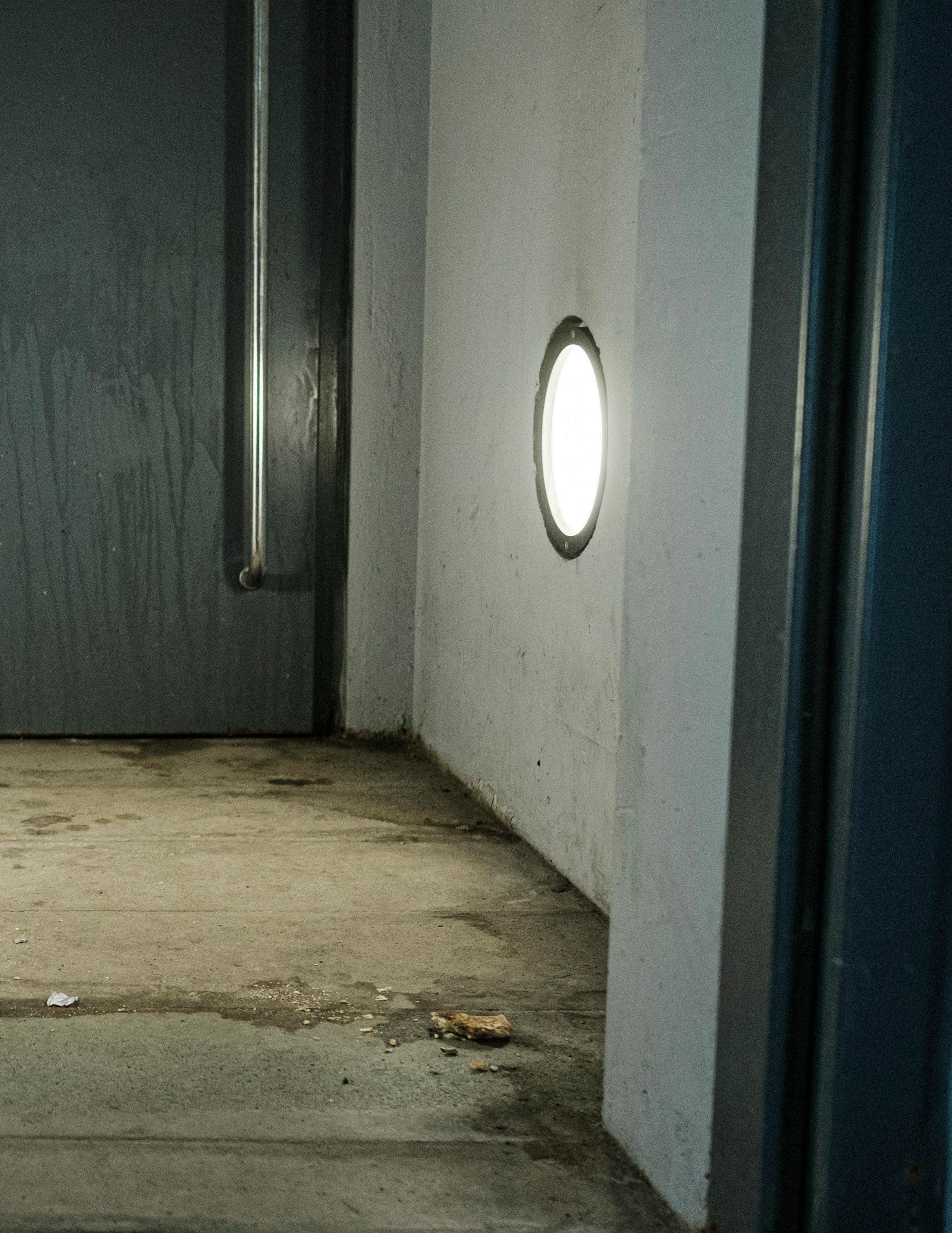 Words by Ragnar Tómas Hallgrímsson
Photography by Golli
Words by Ragnar Tómas Hallgrímsson
Photography by Golli
GUNNI MARÍS
On Thursday, November 25, 2021, I left a COVID testing clinic near the Kringlan shopping centre in Reykjavík. Stepping into my car, the phone rang and an unknown number appeared on the screen. I listened as the voice of an old acquaintance, meek but quietly upbeat, worked its way through the speaker. We had known each other through music, and as we exchanged pleasantries, my mind – always guessing at uncertainties –wondered whether he had some kind of a collaboration in mind. That notion was quickly dispelled.
Gunni Marís needed money.
He was getting back on his feet after rehab but because he was unvaccinated, the charity organisation Mæðrastyrksnefnd (Subvention for Mothers) was refusing him and his mother help. I assumed he was lying, and as we talked, tried to invent an excuse for being unable to help (while evangelising on the importance of vaccines). But he wasn’t asking for much: two or three-thousand króna. The modesty of the request so surprised me that I said “yes” almost immediately and was left thinking that he was clever; as opposed to asking a handful of people for generous donations – and being frequently rebuffed – he was, I conjectured, asking everyone he knew for small amounts.
I hung up and transferred the money.
A few weeks passed before Gunni Marís called again. Answering the phone and recognising his voice, I found myself wishing I had saved his number – so that I could have screened his call. Again, he asked for a meagre amount of money, to which I replied that I’d “consider it,” caveating this consideration with the sentence, “I can’t make a habit of this.” This time, I saved his number on my phone and, after some deliberation, transferred 3,500 króna into his account.
The final time that he called, sometime in spring, I did not answer. By August, he was dead.
A NEW OPIOID CRISIS
When asked if talk of a “new opioid crisis” in Iceland is an exaggeration, Dr. Valgerður Rúnarsdóttir, the Medical Director of SÁÁ (National Centre of Addiction Medicine), refers to the data: between 2010 and 2022, the percentage of patients being treated for opioid addiction at the Vogur detox centre and rehabilitation hospital rose (from 10.3% to ca. 30% of the clinic’s patients). These patients are twice as likely to relapse than others, and thirty-five of those who have sought treatment over the past five years have died.
“We know what’s happening because we see such a broad range of people. So, no – it’s not an exaggeration to say that a new opioid crisis is upon us.”

16 | ICELAND REVIEW
This does not necessarily mean, however, that the number of people struggling with substance-use disorder is on the rise, but rather that opioids are becoming more common among that subset.
“Often when people read a news article,” Valgerður explains, “citing statistics on drug-related deaths, for example, they think that these people are dying on the street. But that’s not the complete picture. Drug-related deaths can mean overdoses and suicides – but it can also mean that someone died in an accident and happened to be taking codeine tablets.”
According to the investigative journalism programme Kompás), 21,000 people are categorised as “long-term users of addictive drugs” in Iceland. Five-hundred people were prescribed Oxycontin in 2011. In 2021, that number had increased sevenfold, or 3,500.
As Valgerður notes, opioids relieve pain but they also produce a high, which is problematic for individuals who struggle with addiction: “Opioids are extremely useful in treating acute illnesses,” she says, “in palliative care, or surgeries, but when people are using opioids to treat chronic back pain, for example – you can say that the pendulum has swung too far in the wrong direction. In that case, almost every other form of treatment is preferable, whether exercise, physiotherapy, etc.”

“NO – IT’S NOT AN EXAGGERATION TO SAY THAT A NEW OPIOID CRISIS IS UPON US.”
ISSUE 05 – 2022 | 17
Iceland is currently undergoing its second opioid crisis, sponsored, at least in part, by increased prescriptions. The first opioid crisis began at the turn of the last century; in the late 1990s, the directors of Vogur – seeing an increase in opioid use and opioid injections among patients – responded by establishing medication-assisted treatment in 1999.
While most people are familiar with Vogur’s detox and rehab facilities, which has beds for 60 patients and admits approximately 600 new patients annually, fewer will have heard of the clinic’s medication-assisted treatment (MAT for short). But it was this treatment, Valgerður maintains, alongside the adoption of a prescription database by the Directorate of Health, which helped stabilise the first crisis during the early aughts.
Since then, Vogur’s MAT has gradually expanded and currently treats 250 patients (most of whom have injected opioids or have suffered serious consequences as a result of their addiction). These patients receive methadone, buprenorphine pills, or injections, reducing their withdrawal symptoms and cravings for opioids.
“It’s an evidence-based approach, and there’s a low threshold for participation. We’d be seeing a much higher overdose rate if it weren’t for this programme. We also collaborate with other healthcare and social services to help people become sober. If we want to improve the lives of these people, these factors must be entwined.”

Although most of the patients in Vogur’s MAT are either sober or aspiring toward abstinence, there are also some who are not ready to quit. It is important to provide services to these individuals, and the City of Reykjavík, according to Valgerður, has greatly improved access to housing for this group of people over the past years. “Things are much better today compared to ten years ago,” she states, adding that besides offering treatment and other services, removing stigma is also vital.
“We’ve certainly seen a change in attitudes over the past 20 or 30 years – and especially in Iceland. If you’re employing someone who has a substance-use disorder, you tell that person to go to rehab. This isn’t necessarily the case in other countries.”
When asked if the rumour was true: that the only two offices in Iceland that have not had a representative at Vogur are the office of the President of Iceland and the Bishop of Iceland, Valgerður seems to insinuate that even those venerable offices have not been unaffected by addiction:
“I don’t want to generalise,” Valgerður says, and lets out a hearty laugh.
MADAME RAGNHEIÐUR
There are 1,000 intravenous drug users in Iceland, 600 of whom are clients of Frú Ragnheiður: a specially-equipped medical reception vehicle that cruises the capital area six evenings a week and operates according to the philosophy of “harm
18 | ICELAND REVIEW

“IT’S AS IF HE DOESN’T UNDERSTAND THAT TAKING DRUGS AWAY FROM THIS VULNERABLE GROUP OF PEOPLE IS A FORM OF PUNISHMENT. THE EFFECTS OF WITHDRAWAL ARE EXCRUCIATING.”
ISSUE 05 – 2022 | 19
reduction;” focusing on the consequences and risks of drug abuse over abstinence. Frú Ragnheiður provides clean injection equipment, condoms, and advice on safe injection methods to prevent bloodborne diseases such as HIV and Hepatitis C –offering succour to Iceland’s most vulnerable habitual users.
“We’re seeing an increase,” Kristín Davíðsdóttir, Director of Frú Ragnheiður, observes, “both in terms of the number of individuals and the number of annual visits. I can’t say whether there’s an increase in actual users, but overdose deaths are definitely on the rise.”
Last year, drug-related deaths reached an all time high in Iceland (46), and to Kristín, our inability to prevent these deaths has something to do with the fact that we’ve adopted a one-size-fits-all approach to addiction treatment. “We need to improve access and offer a greater variety of options,” Kristín explains. “This is not a uniform group of people.”
As Kristín notes, Vogur is the only institution that offers withdrawal treatment in Iceland – and the waiting period for admission is overly long. According to data from the clinic, for those attending their first treatment, or if a long time has elapsed since their last treatment, the average waiting time is 2-4 weeks. For everyone else, it’s 2-4 months.
“And when you’re injecting yourself with opioids, every single day matters,” Kristín explains.
Besides offering a greater variety of treatment, another key to reversing the trend in overdose deaths is, as Valgerður
Rúnarsdóttir noted, removing the stigma placed on drug users – who are often reluctant to call the police for fear of the consequences. In this regard, the legislator can be of use.
This summer, a bill to decriminalise drug possession for personal use was shelved (ostensibly owing to lack of popular support, which was also the case in 2015), but as a compromise, the Minister of Health announced that a new bill would be submitted this winter. The new bill would repeal punishment for the “most vulnerable” people – but only in special instances and for a specific quantity. While the words sound reassuring, they appear to belie the minister’s lack of awareness regarding the realities of addiction, with the bill having raised several questions about implementation. Kristín, an advisor on the Minister’s work group, is critical of the entire process.
“We haven’t finished our work nor reached any conclusion. It’s hardly a fully formed piece of legislation. Nonetheless, the Minister of Health has appeared in the media stating that it’s not about ‘decriminalisation’ but about ‘removing punishment.’ But it’s as if he doesn’t understand that taking drugs away from this vulnerable group of people is a form of punishment. The effects of withdrawal are excruciating.”
Kristín believes that we’re pushing these people further to the extremes, which is the opposite of what we should be doing. Whenever the police are dispatched to intervene with people struggling with an opioid addiction, they often seize their drugs, taking it for granted that they’ve been obtained illegally.
“It would be like the cops barging into our homes and taking our prescription medicine,” Kristín explains. “No one judges these people as harshly as these people themselves. When they seek help from our institutions, they often become defensive. They’re afraid and insecure. Most have a history of trauma.”
Kristín maintains that we need to integrate various institutions within the system, the healthcare and the social system, for example, to make sure that we’re adopting a more holistic approach:
“To quote our clients: ‘you can’t sleep on the street without using drugs,’ so how are you supposed to stay sober when you don’t have a place of refuge?”
MENTAL HEALTH AND ADDICTION
Erna Hinriksdóttir is a psychiatric resident employed at the outpatient clinic at the National University Hospital of Iceland who also works shifts at the hospital’s psychiatric emergency department. Having initially planned on studying paediatrics, Erna was led into the field of psychiatric medicine by dint of chance and curiosity.
“I began working at the psychiatric ward as a medical student – and sort of got sucked in; it was fascinating, interacting with people dealing with these serious conditions, whether schizophrenia or bipolar disorder.”
As a former volunteer who used to ride along with Frú Ragnheiður (she still works on call), Erna was introduced to the practical benefits of “harm reduction” and has been a proponent of the approach since. Although still very much on the fringes, harm reduction is gradually making inroads into healthcare institutions in Iceland (the Laufey project within the

20 | ICELAND REVIEW
National University Hospital, for example.)
“The approach differs from that of rehab clinics and addiction wards where the message has usually been ‘Stay sober or get out,’ whereas harm reduction measures success along a different metric: helping an individual to stop using opioids intravenously, for example, or substituting opioids for something else,” Erna explains.
Given that there is a high rate of comorbidity between addiction and other mental illnesses, many of the individuals who seek help at the psychiatric emergency department are also struggling with substance abuse.

“The two often go hand in hand,” Erna observes. “Substance abuse is often conducive to mental illness. Likewise, those who are diagnosed with mental illnesses tend to seek relief by self medicating. When people are far gone, it affects their income, social network, housing, etc.”
For the system to better assist individuals struggling with opioid addiction, Erna believes that there needs to be acceptance of the fact that not everyone is prepared to quit.
“We need to help people unwilling to seek help at the hospital or other treatment centres or who are not yet ready to become sober. Ensuring that those who are using these drugs are not deprived of important resources – such as housing, interviews with social workers, etc. – because experience has taught us that if these resources are provided, these people are more likely to recover. I think we’re lacking this middle stage of
treatment for people who aren’t ready to quit but would like to curb their consumption.”
As far as more practical matters are concerned, Erna agrees that there needs to be a greater investment on behalf of the government. As has been widely reported, the mental health facilities in Iceland are greatly lacking, and there’s a shortage of psychiatrists and nurses. “Which is not something that you just pull out of your sleeve,” Erna admits.
Listening to Erna and other health professionals who are “on the ground,” so to speak, I get the feeling that the traditional view of addiction, that people who struggle with addiction are morally reprehensible agents responsible for their own travails, has been supplanted with the notion that they are a product of their circumstances (whether personal circumstances: genetics, physiology, trauma, etc. or societal ones), and that we, as a society, share some responsibility for those circumstances; no one willingly chooses to become addicted.
As far as recent developments are concerned, Erna, like most of her colleagues, is reluctant to generalise on the rise of opioid abuse in Iceland. She agrees, however, that we’re probably seeing similar trends to the mental health crisis among adolescents in the US.
“And it’s not just adolescents. The breakneck speed of our society, and new technology, which sets us up for constant comparison, appears to adversely affect our moods, leading to increased anxiety and depression.
ISSUE 05 – 2022 | 21
“REST IN PEACE, FRIEND.”












































































































































































THE FINAL TIME THAT HE CALLED, SOMETIME IN SPRING, I DID NOT ANSWER. BY AUGUST, HE WAS DEAD.
THE EULOGY
Gunnar Marís was, as his friend Jóhann Dagur Þorleifsson (Jói Dagur to his friends) observes, an outsized character and a “great friend to Icelandic hip hop.”

The two met in 2007, through rapper Gísli Pálmi, and quickly became close collaborators. “Gunnar Marís had this effortless talent for rapping, with many of the lyrics he recorded over my beats being improvised on the spot,” Jói Dagur recalls.
During those 15 years between their first meeting and Gunnar Marís’ untimely death, the latter was “in and out of the psych ward” and waged a long battle against addiction. Along with making music, he enrolled in the Icelandic Film School in 2013, subsequently landing minor roles in TV shows and independent films, while spiralling ever deeper into substanceabuse.
The two friends entered rehab separately in 2018, which was when Gunnar Marís finally managed a spell of sobriety. During that time, he seemed to have regained a sense of purpose and peace, which was why his relapse 18 months later – came “like a bolt out of the blue.”
“He returned to Vogur but walked out,” Jói Dagur explains. “He went to the psych ward. He tried detoxing a few times. All of it, to no avail … it’s difficult to help someone who doesn’t want help.”
On Friday, August 12, Jói Dagur bade his friend a final farewell. The funeral also marked the first time in 12 years that all nine members of their rap collective, 3. Hæðin, were convened beneath the same roof. The church was filled with friends and collaborators, among them rapper Erpur Eyvindarson (a.k.a. BlazRoca).
In his eulogy, Erpur recalled that he had met Gunnar Marís just over fifteen years ago, that he had been passionate about music, full of dedication and industry. Many would have written him off as “a dreamer,” but at the time, Gunni Marís had already won the Rímnaflæði rap competition, released a handful of well-regarded songs, and collaborated with big names from the Icelandic rap scene, including Helgi Sæmundur (Úlfur Úlfur), Forgotten Lores, Dóri DNA, and slew of other talented rappers who were gathered in the church on that day. Erpur noted that, time allowing, he probably would have belonged to that list of collaborators but that those plans faded in the past two or three years – like most all of the good things in Gunnar Marís’ life.
After recalling the deceased’s memorable brush with the law, Erpur shed light on the character of his late friend and the poison that had claimed his life.
“Gunnar Marís worried about more than his own skin. He wanted to reach people – even as a preacher. He found Jesus everyone now and then. But his Jesus was the one who overturned the tables of the money changers in the temples; the tables of those who believed that the sole purpose of living things is to sate the greed of those who own everything;
of those who start wars to sell weapons; and of those who manufacture addiction to sell us a vaporous key to a cage in which they’ve locked us …. who marketed much stronger opioids than had been previously seen here in this country – but that now are delivered in legal and more impressive packaging. You don’t have to be Jesus to want to overturn the tables of these money changers.”
Suggesting the high mortality rate of substance abuse among rappers, Erpur concluded his eulogy with a nod to those fighting to stay sober:
“To you, who remain, despite everything, alive. Jói Dagur and the rest of you, who manage to stay sober – we stand with you. You, who loved him dearest, and carry his memory – and keep his name alive – you have to live! Like they say in the Westfjords, ‘don’t you dare to die on me. If you die, I’ll kill you!’ You, who’ve plumbed the deepest valleys, now possess the greatest insight into an existence that other people don’t understand – unless they’ve dived off the cliff themselves. If pastor Þór hadn’t hidden the communion wine, I would raise a glass and toast to Gunni Marís, to some crazy stories, fine memories, and for all that he’s left behind: in lyrics, music, and expression. Cheers to the spirit, a different spirit than that which drowned you.
Rest in peace, friend.”
ISSUE 05 – 2022 | 23
I’m sitting in a hotel lobby, scribbling some last-minute notes in my notebook before the interview. I look up and notice Guðmundur Felix Grétarsson entering so I raise a hand to let him know I’m here. He waves back, and I get up to greet him. He shakes my hand, and I introduce myself before he points to a small room where we can chat undisturbed. Nothing about this exchange feels remarkable to me, but Guðmundur Felix has a different perspective.

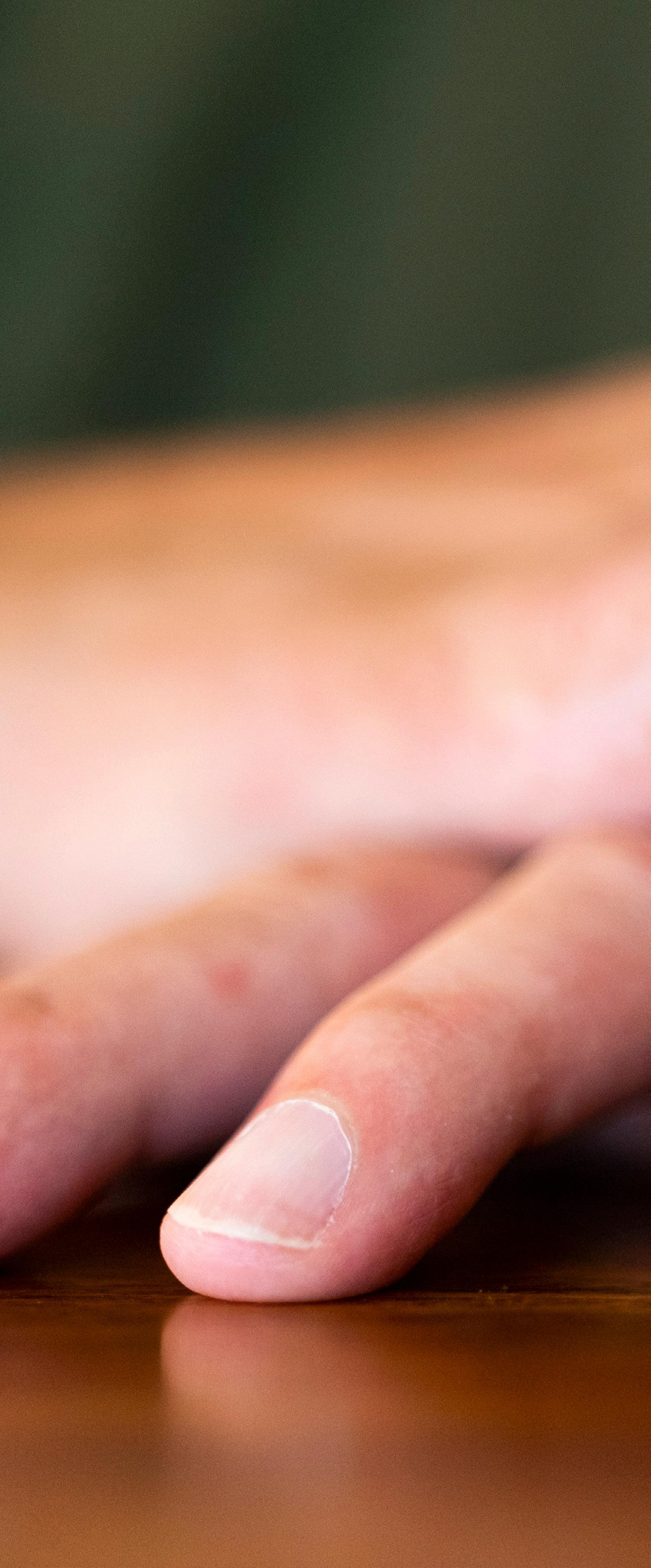
1998
Guðmundur Felix was working as an electronics engineer. He had two daughters, a four-year-old and another only three months. On January 12, he set out to do some work on a high-voltage transmission line. The line he was supposed to be working on was powered off, but on that fateful day, Felix reached out and touched a line that was very much powered on. Shocked by 11,000 volts, he fell 8 metres [26 feet]. He broke his back, fractured his neck, his ribs came loose, and his arms were set on fire. When he woke up, both his arms had been amputated at the shoulder.
Words by Gréta Sigríður Einarsdóttir Photography by Golli
24 | ICELAND REVIEW
The to 2013

Right Bear Arms
Drinking and using drugs to numb the pain was the destructive path Felix walked after his accident. “All of a sudden, I was faced with a life that I didn’t want to live,” he says. “Everything was gone. My relationship ended soon after the accident. Everyone around me was exhausted. I went from being this guy with a good job and his life ahead of him to being a helpless loser overnight. There came a point when I had to have a liver transplant to save my life, but I wasn’t eligible because of my addiction.”
“There’s no such thing as a short version,” Felix says when asked
straw. Then, a French culture festival in Reykjavík invited Dr. JeanMichel Dubernard to give a lecture at the University of Iceland. “I saw him on TV. I just started making phone calls all over town to find the guy. I called every hotel in the city until I found him at Hotel Holt and he agreed to see me.”
While Dubernard had the same misgivings about Felix’s case as the other doctors who had rebuffed him, he didn’t say no. “When everyone else had said ‘this isn’t possible,’ he said ‘I don’t know if this is possible. But whatever the answer is, I want to be able to give arguments to support it.’” So, in 2007, Felix dove head first into gathering his medical files. The next step was to translate everything into French. “I found some certified translators but they wanted to charge me an arm and a leg, so I went to the Ministry of Health. They said this wasn’t in their jurisdiction: they didn’t help with experimental procedures in other countries. Every door was closed until an acquaintance reminded me that Vigdís Finnbogadóttir used to be a French teacher before she became President. So I knocked on her door.” Vigdís connected Felix with a French paediatrician living in Iceland who was willing to help. With all the data sent to France, Felix waited for an answer.
2011
how he ended up in France two decades later, before launching into his tale. “I lost my arms in January 1998 but already in September, the team at the Lyon hospital performed the first successful double hand transplant. When you lose your arms, you keep an eye out for this kind of news.” Dr. Jean-Michel Dubernard was a pioneer in his field and the operation made headlines all over the world, but Felix didn’t speak any French. Later, one such operation was performed in China as well, “but I didn’t speak any Chinese either,” Guðmundur chuckles. “So when they perform a similar surgery in the US, a hand transplant, I reach out to the team who performed the surgery. That was in 2001.”

2001
A hand transplant is as complicated a process as it gets. The operation itself, where a horde of surgeons carefully stitch together skin, muscles, tendons, veins, and nerves, is only the first step. A potent drug cocktail of immunosuppressants is administered so the body doesn’t reject the new body parts, and the recovery means that nerves start to regrow, from the stitches and into the new limb, at glacial speed: only 1 mm per day. While waiting for the nerves to reach the muscles they should control, there’s the risk of atrophy due to inactivity. What Felix was asking the American doctors to do meant waiting for the nerves to regrow the full length of an arm. The likelihood of success was slim.
“I wanted the surgery so bad,” Felix tells me, “but nobody was doing anything of that scale at the time. Hands, sure there is such a short distance that the nerves need to grow, but a whole arm –forget about it. In the two years it would take, there wouldn’t be any muscle left in the hands.” So the American doctors politely brushed him off.
2007
Six years went by. Felix beat his addiction and had his liver replaced. He went about his life, learning to operate a car using his feet, to scratch his face by rubbing it against something, and drink from a

Felix is asked to come to France for further research. By that time, Dubernard was no longer the head of the team: he had retired and been replaced by Dr. Lionel Badet. Felix jumped on a plane for his first visit to Lyon, spending a week in the hospital where, he says: “They checked everything.” The results were promising, and next spring, Felix went for another week to be poked and prodded. By this point, the trips and hospital stays are taking a financial toll. When interviewed about his foot-operated car, the journalist presents a
solution. She would start a charity in his name. “I decided to run 10k in the Reykavík marathon. About 200 people ran with me to raise funds, it was an amazing experience.” While the credit card debt was now paid off, Felix was still waiting for an answer on whether or not the French doctors would perform the operation. “In September, I get an answer: ‘We’re ready to try this.’”
The doctors weren’t promising a miracle cure. They were describing a complicated surgery with a long recovery time and an intense rehabilitation process, for a slim chance of success. “Much like all other doctors, they didn’t know if the operation would work or if the nerves would grow, or if I would be able to do anything with the hands afterwards.” But there was a plan B. “There’s a muscle called the latissimus dorsi, on the sides of your back. When I first lost my arms, I had a stump and the doctors could use part of that muscle in
26 | ICELAND REVIEW
2013

“I look like a person again.”
Special sightseeing taxi tours



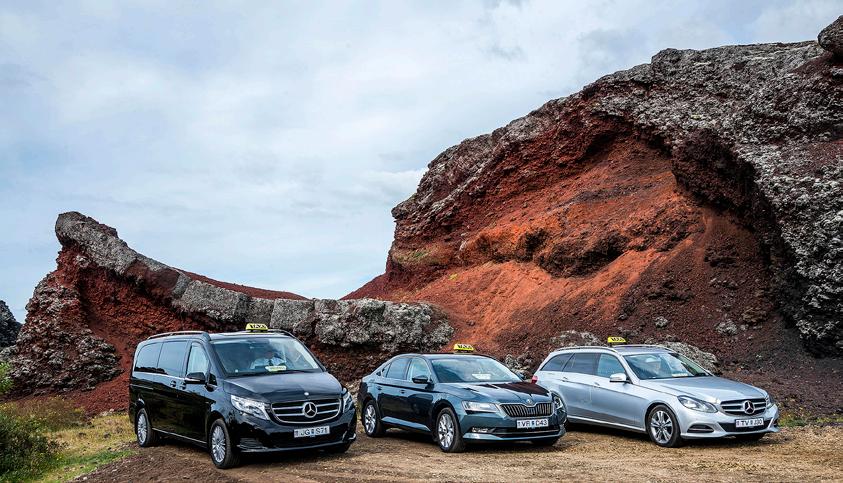
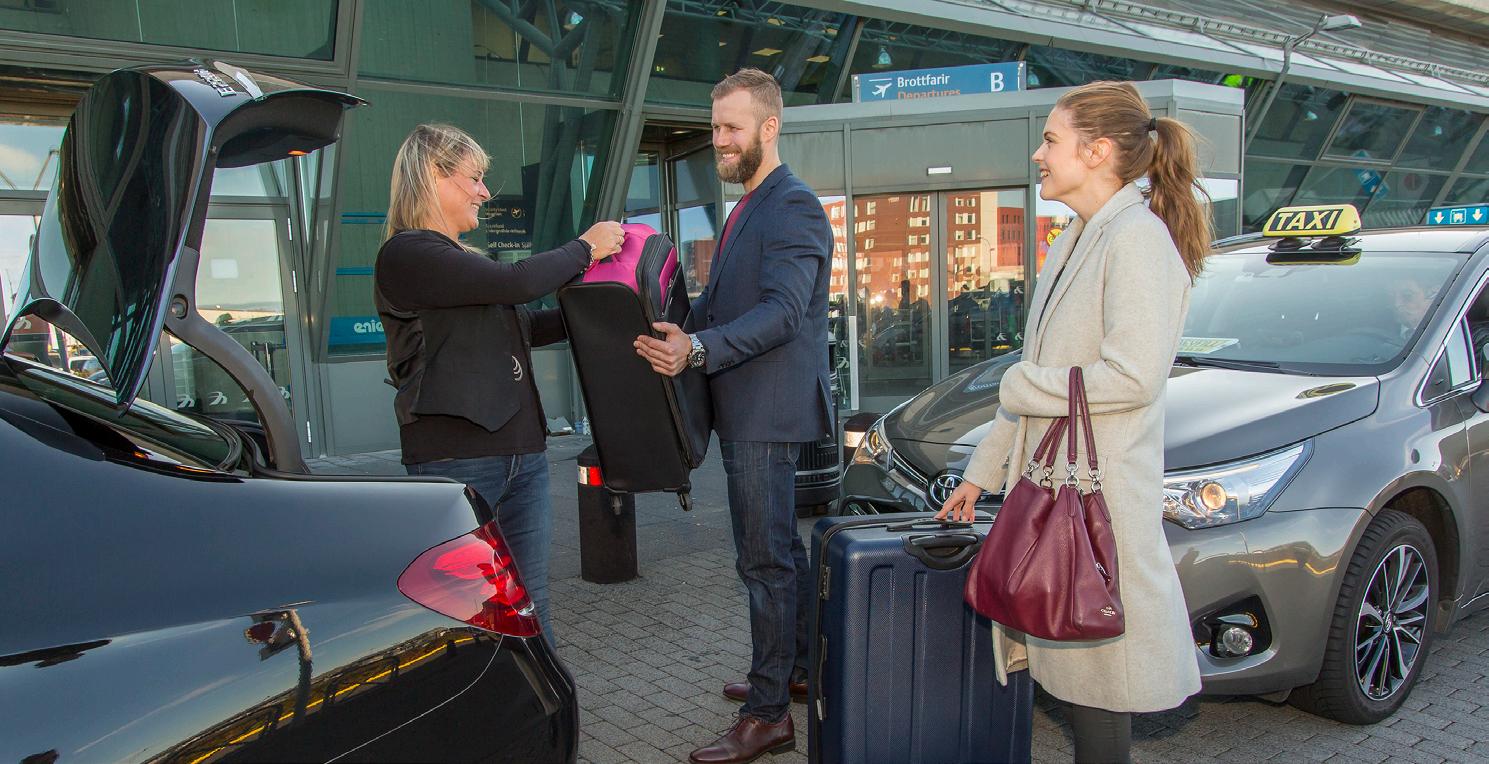
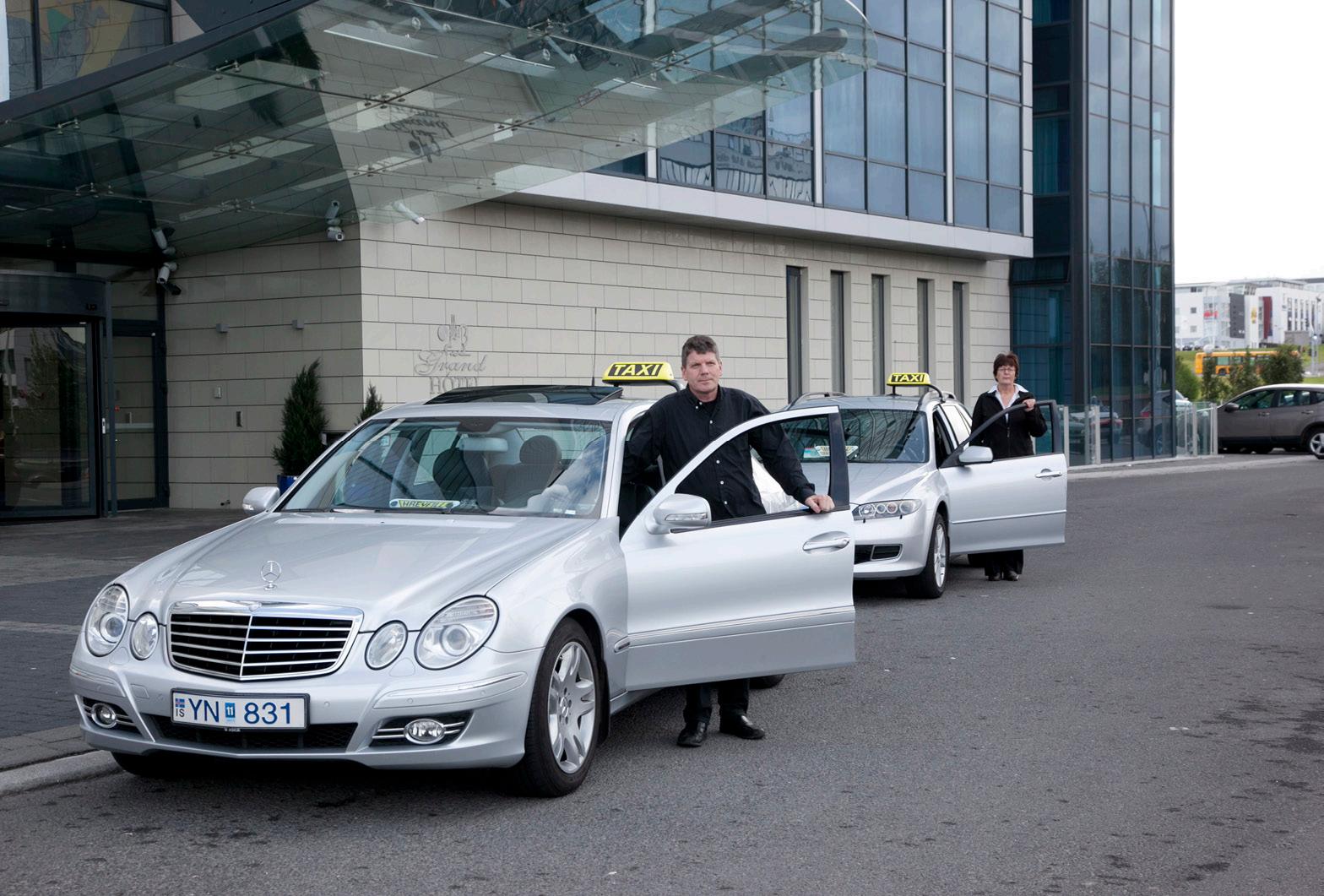
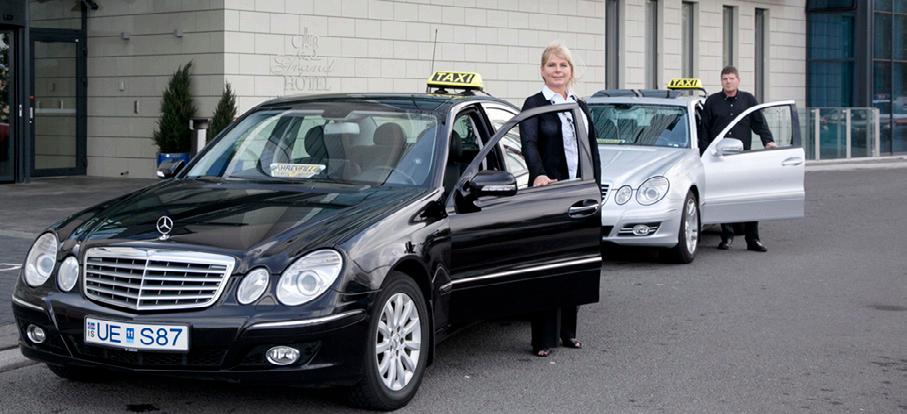

www.hreyfill.is



28 | ICELAND REVIEW At your service- Anywhere- Anytime
We specialize in personalized sightseeing day trips to the natural wonders of Iceland – for small groups of 4-8 persons We´ll make you a Comfortable Price offer! To book in advance: tel:+354 588 5522 or on
E-mail: tour@hreyfill.is All major credit cards accepted by the driver. Download the Hreyfill Taxi App The taxi app is FREE and available in iOS and Android. Book a taxi with ease 2013
place of a bicep, so I could move my elbow.” The doctors told Felix that if worst came to worst and the nerves wouldn’t grow, they had the option of repeating that operation on the right so he could at least bend the elbow and give him an option of better prosthetics. “Prosthetics need something to attach to. As it was, I couldn’t really use any.” With that option on the table, to Felix, the gamble was worth it.
For the doctors, one event from Felix’s medical history helped convince them. “An operation of this scale is dangerous and one huge risk factor is that all transplant patients, be it organ or limb replacements, need to take immunosuppressant medication for the rest of their lives. This drug, is, well, it’s poison, really. It keeps your immune system down, making it harder for your body to fight off infections and diseases. But I was already taking them because of my liver transplant.” Putting someone on immunosuppressants for life is not something you do lightly when the chances of success are so slim, but now, that wasn’t an issue. “As much as I felt sorry for myself when I was going through that liver transplant, it turned out to be a blessing in disguise.”
2012
Around Christmas, Felix gets told that in a few months’ time, he might get put on the transplant list. So he moved to Lyon. “The doctors warned me it might be a little premature but I wanted to find a place to live and get settled.” The next autumn, preparations began. “They needed to custom build an operation table and braces, prepare the whole team, and so on. But then everything grinds to a halt due to bureaucracy. “Such a surgery had never been done before, and the French authorities are super strict on regulations and procedures. They needed to rewrite tissue transplant regulations, taking my case into account. Every time they made changes, the institutions have six months to review the data before they approve
organ donor unless they specify otherwise, the same doesn’t apply to limbs. You always need special permission from the loved ones.” Even for Felix, that’s understandable. “The worst day of people’s lives isn’t the time to wrap their heads around something like an operation that’s never been done before. Of course, if you don’t get an organ transplant, you die, it’s a life-saving operation. You can survive without a limb, but your quality of life isn’t the same, and the effect an operation like this can have, there’s no way to describe it. It’s the difference between being alive and having a life.”
The first time he got the call, he was elated. “I thought it was finally happening. Then I got another phone call telling me ‘Sorry, family said no.’ The next time it happened, my hopes were a little more muted. I thought ‘here we go again.’” By this point, it had been 23 years since Felix lost his arms and he’d been living in France for eight years. He’d met his wife Sylwia, they’d gotten married and gotten some dogs, and moved into a small apartment in a renovated 18th-century mansion on the outskirts of Lyon. “The thing about waiting is that time passes, whether you’re waiting for something or not. France is a great place to live and waiting is a lot easier that way, even if it’s always at the back of your mind.”
2021
At 9:00 PM on a January night, Felix gets the long-awaited call again, telling him the hospital would know more the next morning. “And on the morning of January 12, 23 years to the day of my accident, I get the call telling me to get to the hospital and get ready,” Felix tells me. It was happening. “Then on the morning of January 13, a team of 50 people screwed on my new arms.”
2013
them. If it’s not completely accurate, you need to go through the same process again and wait another six months.” In the autumn of 2016, all i’s dotted and t’s crossed, Felix was put on the transplant list. Now the waiting begins.

2016
“I’m waiting for a phone call around the clock, always careful to keep my phone on me. I don’t take a vacation or travel too far from Lyon.” This is the case year-round except for six weeks in summer, when Felix is taken off the transplant list so his team of doctors can take a vacation. Then he gets a call. “At least three times, I got the call that they’d found a match. But in France, while everyone’s an
It was a 15-hour operation. And just like he had been promised and prepared for, that was only the start of it. “I’ve gained so much already and feel thankful every day but my God, it’s been hard. When I got my liver transplant, I was very sick. But as soon as I got the transplant, I felt so much better. This time, the surgery was just the beginning.” The pain is greater than he had imagined. “The first seven months were almost unbearable. The doctors connected nerves and veins, muscles, tendons, and skin. And this is all hanging from your sutures. Then when the nerves start to grow, they’re inside some sheaths. And that hurts like a m*****f****r because as they grow, they rub up against the walls.”
The doctors cautiously estimated that the nerves could take up to two years to regrow. In nine months, however, Felix could feel his hands. “We’re seeing much better results than people were even hoping for. They were keeping their expectations low, of course, making sure I didn’t have sky-high hopes. But the success is incredible.”

ISSUE 05 – 2022 | 29
Felix is careful not to take the credit for everything on his journey, praising and thanking all the people who helped him and cared for him along the way. “I owe them so much, this isn’t something you do on your own.” His mother moved to France with him to take care of him, his wife and his father have shown immense support. “I’m so lucky in my friends and family. No matter how crazy my dreams were, they were with me all the way. Now that I can do more, my mom doesn’t need to take care of me as much. My father died this January, and they lived apart for 8 years because of this. But before he passed away, he saw me get my arms.” He also shares his success now with others. “I’ve been receiving message from all over the world, from every continent. From people who have lost limbs, or have loved ones who’ve lost limbs. All of a sudden, there’s hope. And that’s incredible to me, because I know what hope can do. All I had was one tiny note from a doctor who didn’t say no and that kept me going for years.”
2022
So how have new arms changed Felix’s life? “What you don’t realise is that when you lose your hands, you don’t touch anything and no one touches you. It’s like you’re living in a bubble.” Parent to an infant and a toddler at the time of his accident, hugging his children is what he missed the most. “All of a sudden, all that was gone. You just stand there and can’t do anything. And being able to touch things, hug my children and grandchildren again, this is just…” Felix trails off.
Then there’s his independence in everyday life. “I can take care of my own hygiene, brush my teeth, and go to the bathroom on my own. I can dress and undress myself, take a drink from a glass without a straw. I can eat with a fork or a spoon. When you’ve had to rely on other people for every little for years, these small things aren’t so small.” Finally, it’s a matter of self image. “I look like a person again. I can move my hands when I talk. I can scratch if I feel an itch. I can wear a watch!” Felix now enjoys using a smartphone without having to operate it with the tip of his nose or his tongue, making it very difficult to see the screen. “I can use things that are a matter of course and normal to most people, that up until a few months ago, I wasn’t sure I would ever be able to again.”
NOW
While he’s had remarkable success, there’s still a long way to go. “There are so many muscles in a hand that we never give much thought. Bending a finger takes one set of muscles but straightening it again means using a whole another set. At this point, I can’t straighten my fingers unless I push on the other side to support the muscle in the wrist.” Every week, Felix discovers new things he can do. “I held my dogs, that’s the most recent thing. I can clean the house: I put on a washcloth and pick up a brush and clean the house like a whirlwind. I tried drinking from a glass for the first time at the airport on my way here. When you haven’t been able to do it for years, it’s very different. Most people don’t think about scratching when they have an itch. You don’t know how many times you’ve scratched your face today. But not being able to do it and then being able to do it again, there’s nothing like it.”
My mind is still stuck on all the waiting. I ask Felix what he would have done if he had known how long the whole process would take. He answers without hesitation: “Just what I did when the accident happened, dive head first into addiction. We all learn as we grow older, but I had to learn a lot faster. Either I stopped feeling sorry for myself and shoulder some responsibility or I was staring into the bottom of a coffin.” When Felix was at the point when he needed a new liver, he’d been, in his own words, wallowing in self-pity for about three years. “I wasn’t really suffering from the results of the accident anymore, I was suffering because I didn’t want to come to terms with what had happened to me. All my misery was self-made. When I realised that, I also realised that I could change it. I could do plenty of things but I was laser focused on the things I couldn’t do. Life is easier this way. You see so much clearer. I didn’t want to get a liver transplant but if I hadn’t, I wouldn’t have arms.”
As I say goodbye to Felix and walk out into the sunlight, I lift my hand to block the glare, then catch myself absent-midedly scratching my nose as I walk down the street.

“What you don’t realise is that when you lose your hands, you don’t touch anything and no one touches you. It’s like you’re living in a bubble.”
30 | ICELAND REVIEW
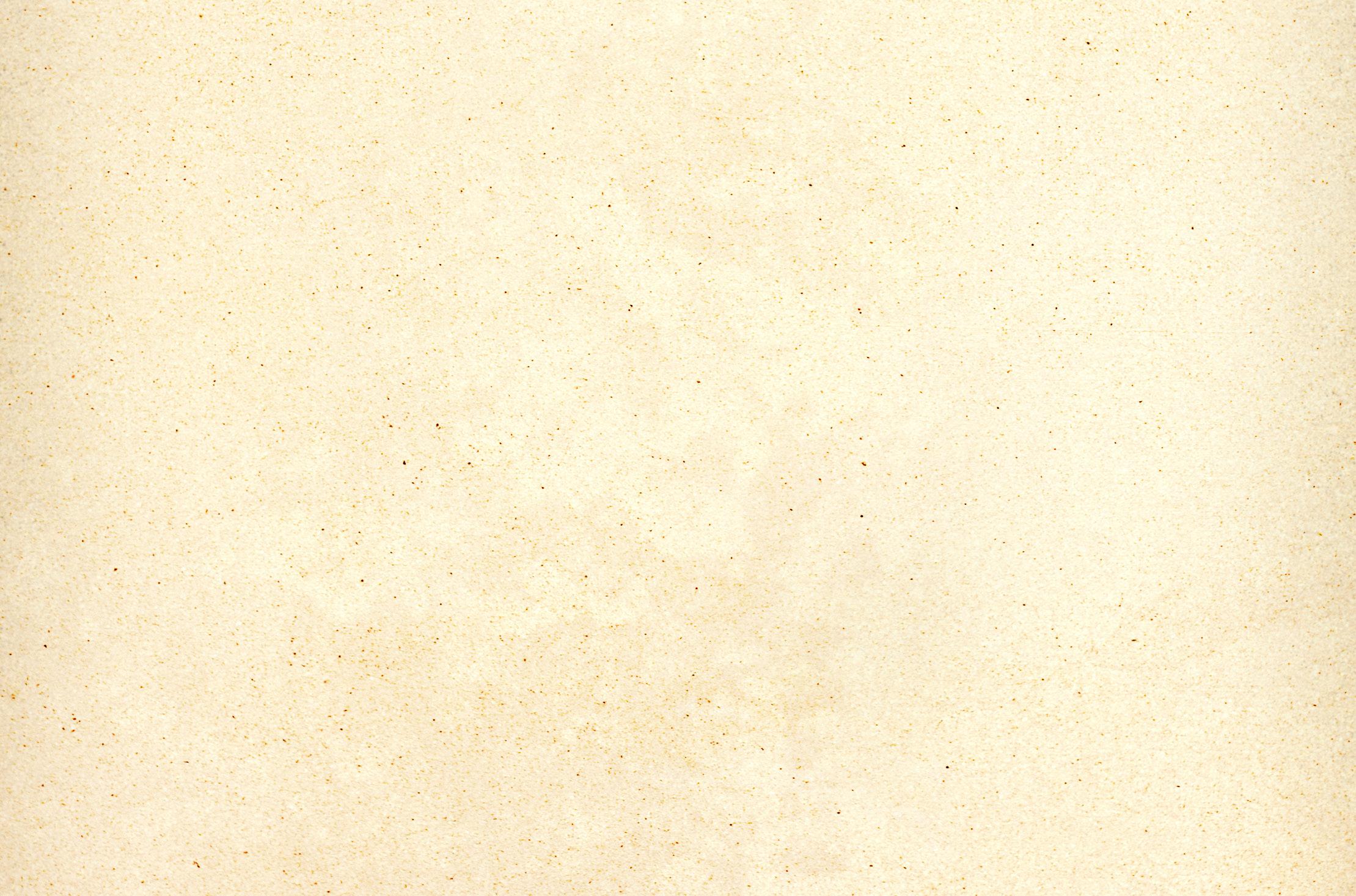


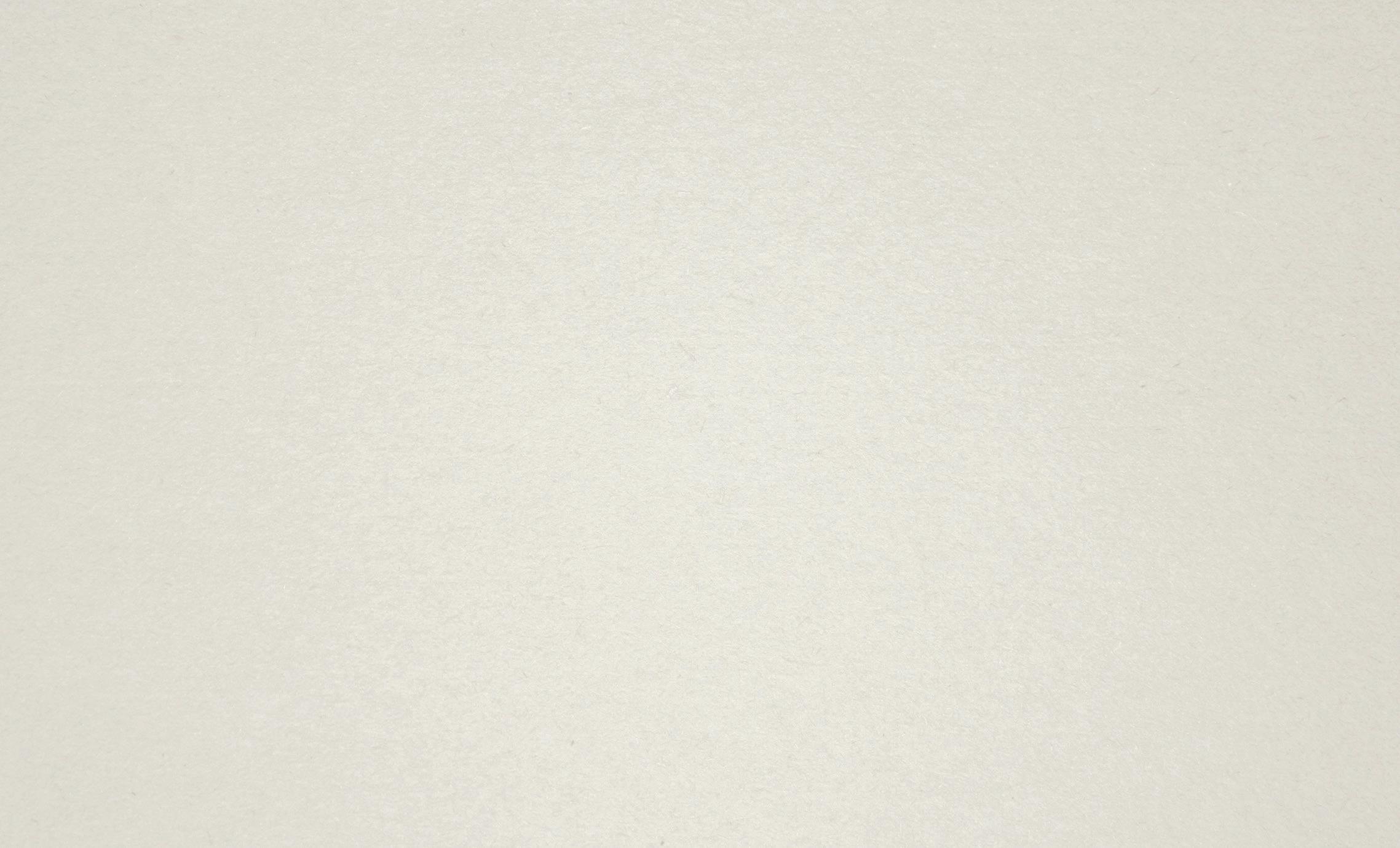
ISSUE 05 – 2022 | 31 LIVE MUSIC EVERY NIGHT HAPPY HOUR 4-7PM EVERY DAY Ingólfsstræti 3, 101 Reykjavík | Tel: 552-0070 | danski.is IcelandReview_182x120_DenDanskeKro.indd 1 5/7/2019 5:40:40 PM
LOVE,
WORDS BY RAGNAR TÓMAS HALLGRÍMSSON PHOTOGRAPHY BY GOLLI

BRÍET ON THE POWER OF MUSIC

THE BUS RIDE
For the first time in what felt like a long time, I was free. No obligation to stay inside, to put the kids to bed, to return home before some vaguely appointed hour – for it was understood that I was working, and I could not be held accountable for that work coinciding with an evening associated with good spirit and debauchery: it was Culture Night, and I was a man of culture.
But as more and more people piled onto the bus, I found that my excitement was supplanted by a sense of ruefulness. I felt low. Put off. Disinterested. And the thought arose that “none of it meant anything without her.” To be clear, this ruefulness was not the product of some unprovoked shift in brain chemistry but derived from the music in my ears; Bríet, a composer, chiefly of love songs, had two years ago released an album dedicated to the emotion of love (Kveðja, Bríet), which was now playing in my headphones
I had never listened to the album in its entirety and had not realised that all of it was dedicated, or so it seemed, to a single person, a single relationship – a single Daedalian feeling; for 36 minutes and 21 seconds, Bríet walks into that “subtlest maze of all” (i.e. love) and explores all the pathways and passages and high hedges and looming minotaurs, transporting the receptive listener alongside her – whose world then becomes the maze. And so it was that in spite of the fine weather and people and licence and anticipation, I felt incomplete. Destitute. Alone.
As the bus wound its way through the labyrinth of the city, I lost myself in that other maze and began to think my way through a recent epiphany, namely that music existed as an antithesis of stoicism: a philosophy availing itself of the insight that cognition is an integral component of emotion, and that by reframing strong and unwanted feelings, a person may succeed in mitigating them. By contrast, music – sitting at the opposite end of this peculiar spectrum – had the power to strengthen subdued but desired emotions.
And as I thought all of this, I began to feel that Bríet’s kind, for lack of a better word, must rank among humanity’s greatest benefactors. Moved by this feeling, I resolved to call my soon-to-be-wife and persuade her to accept her mother’s offer to babysit tonight. Because without her, none of it meant anything.
LAILA’S DAUGHTER
I first heard of Bríet in early 2017.
Her mother, who shared an office with me on Laugavegur, told me that her elder daughter was releasing her debut single. Gearing up for some polite insincerity, I smiled and feigned interest and, to my surprise – discovered that Laila’s daughter really could sing: that there was some there there
In the coming months, I interviewed Bríet a handful of times; stood in the audience as she performed live; and watched, alongside the rest of the country, as she won over an increasingly larger audience. This brought awards and record deals and a burgeoning sense of local celebrity, but through it all, she seemed warm and personable and never quite so down to earth as when she sat cross-legged in her mother’s sweat lodge in East Iceland and serenaded all the sweaty, overworked souls that had gathered there in the steaming tent.
And then I met her again that morning, before my bus ride.
Bríet was scheduled to soundcheck at Culture Night’s “big stage” (the one sponsored by national broadcaster RÚV) in front of Arnarhóll hill at 12:30 PM. Magnús Jóhann, one of Iceland’s most ubiquitous young session players, was sitting at his keyboard on the far side of the stage and killing time as the sound crew lugged equipment and electrical cords.
“Yes, speaking of Bríet,” Magnús remarked, “I don’t know… wait, what time is it?” He glanced down at his phone. “Yes, our soundcheck began two minutes ago.”
Fifteen minutes later, Bríet arrived with her agent, Soffía, who explained that they had walked almost all the way from the University of Iceland because the streets were closed for the day’s celebrations. Bríet, relaxed and in good cheer, hugged her fellow musicians and sauntered onto the stage.
She began by expressing frustration that a requested “side stage” had yet to be erected. Turning to Soffía, she asked: “Is this the smallest stage in the world? Who’s trying to save money here?”
Last year, Bríet booked the Eldborg auditorium at the Harpa Concert Hall – one of the grandest stages in the country – and put on, according to those who attended, a series of the most spectacular shows in Icelandic music: rumour has it that she made almost no money from the concert, preferring to recycle any foreseeable profit back into the spectacle itself.
As preparations continued and various people buzzed
“Is this the smallest stage in the world? Who’s trying to save money here?”
34 | ICELAND REVIEW
about the stage, Bríet – wearing jeans, thick-soled white sneakers, and a colourful sweater reminiscent of Biggie’s famous Coogi – leaned momentarily on her right leg, shifted her weight, and looked down at her feet. Her short, bleached curls protruded mane-like from beneath her bespoke black cap and her left hand dangled – like she was a hippie floating on a cloud of marijuana.


It was almost 1:30 PM by the time she actually started sound checking. I had taken my place at the bottom of the hill across from the stage and listened as she performed Fimm, a popular single from Kveðja, Bríet. Bystanders, their hair blowing in the cool wind, stopped to look on, some of them mistakenly believing that she was about to perform.
“I’d like a lot of reverb on the vocals. That’s like my input for you,” she said to the sound engineer across the stage. I wondered if she had changed.
FÁLKAGATA
Standing in a backyard on Fálkagata, I speculated which of the three doors led to Bríet’s apartment. I walked back and forth and tried peering through the windows – when the door
ISSUE 05 – 2022 | 35
farthest from the street popped open, and a black-and-white collie came running toward the low picket fence. A man in a green Adidas hoodie followed suit.
“Does Bríet live here?” I asked, petting the collie on its head.
I knocked on Bríet’s door, and a voice called for me to “come inside.” The apartment was bohemian and snug, filled with flowers and knick-knacks, and an old blues record was spinning in the background. Rubin Pollock – guitarist of the Grammy-nominated band Kaleo and Bríet’s boyfriend – stood up from the sofa, introduced himself, and shook my hand. Bríet, who was sitting at the kitchen table getting her hair done, got up and gave me a hug. Her three colleagues – a makeup artist, a stylist, and a designer – said hello.
I told Bríet and Rubin that I had met their neighbour and that he had nothing but kind words, and they said that his name was Andri and that he was “great.” I suggested to Bríet a “quick chat now” before sitting down again somewhere more private next week. She replied that that “sounded fine” although it would be fun to talk now since so many of her
trusted colleagues were there. “That way all of us could talk,” she explained.
“OK, I’m outta here,” Ísak, the make-up artist, declared from the sofa, as everyone laughed.

Whatever suspicion I had harboured that Bríet's humility had been compromised by her success was quickly dispelled. It occurred to me that any gap between Bríet-then and Bríet-now was not a matter of personal devolution in the direction of haughtiness or entitlement but rather the formation of two separate identities, disparate but seemingly non-overlapping: the person and the persona. This insight owed not only to Bríet’s warm demeanour but also to my own experience as a musician, where the disparity of an exaggerated stage persona, whose charms would linger before and after performances (while I was still drunk), would serve to underscore the inadequacies of my private self in more quotidian contexts – and cause me not a small amount of mental anguish.
Bríet still visits her mother’s sweat lodge in the east as often as possible, and Laila continues to employ the
36 | ICELAND REVIEW
“I have more hands, more minds, more eyes, which is priceless – for there’s only so much you can do alone.”
same innocent subterfuge whenever her daughter’s there. Addressing the participants, Laila will say, “Now, I haven’t asked my daughter to sing,” and then, turning to Bríet, “but suppose you’d indulge us?”
I ask Bríet how her day began, and she redirects the question to Rubin.
“I prepared some oatmeal and tuna toast and made you eat,” he remarks.
“I have this tendency not to eat before shows,” Bríet explains, suggesting somehow the inequitable demands of women artists in music. “Which never fails to inspire this feeling of responsibility within Rubin; he wouldn’t let me leave the house without eating.”
The preparations for tonight’s big show have proved less than ideal. RÚV requested that Bríet close the evening by putting on a similar show as the one in Harpa, and Bríet agreed. But then that venerable institution’s organisers proceeded to veto all of her ideas. She had suggested, for example, beginning her performance with a theatrical entrance from the top of Arnarhóll: walking down through
the throng of people while singing. But that, the organisers replied – though not in so many words – was “too much of a hassle.”

“They weren’t trying to find any solutions,” Bríet explains while sipping her tea. “So I’ve been a little annoyed going into it. When I showed up today, and they hadn’t erected the side stage, I was frustrated; I just struggle when I’m asked to do something and then no one’s prepared to do the work.”
“Has anything changed since the start of your career?”
“No, I wouldn’t say so,” Bríet remarks. “The crowd’s gotten bigger, and there are more people around me. I have more hands, more minds, more eyes, which is priceless – for there’s only so much you can do alone. But I, sort of, know more … what I want. And where I’m going. The path is always becoming clearer. I can do new things, bigger things …”
“So you have a clearer vision and the courage to pursue that vision?”
“Well…” Bríet pauses, before saying rather emphatically: “No: I’ve always had a clear vision and the courage to follow through, but what’s changed is that people have begun to take
ISSUE 05 – 2022 | 37

“I’ve always had a clear vision and the courage to follow through, but what’s changed is that people have begun to take me seriously.”
38 | ICELAND REVIEW
me seriously.” She chuckles. “‘Yes, perhaps you do know what you’re doing,’” Bríet remarks, imitating the once-sceptical members of her industry.
“You’re still sober?”
“Yes, not a sip of alcohol to this day.”
Her mother’s sobriety has probably played a part, although Bríet clarifies that alcohol has never really appealed to her.

“All that interests me is that which serves to broaden my horizons – and I don’t think there are many things that can do that besides oneself. But I don’t know. I’m not saying ‘never,’ either, just that other things offer so much. Like going to sweat ceremonies – and being on stage. That’s probably my way of getting high.”
We talk music briefly before segueing into writing. At last year’s Iceland Music Awards, Bríet was chosen Best Lyricist. In a somewhat controversial moment, while accepting the award, she turned to the camera, put up a middle finger, and declared: “That’s for everyone who asked me ‘Who writes your lyrics?’”
“Do you read a lot?”
“My friend does – and she offers plenty of recommendations. I just read Where the Crawdads Sing. It’s so good. Every word is just perfect. I’m currently reading Sápufuglinn and The Power of Now. But I don’t read much. I like to talk. That’s how I write.”
Bríet keeps a diary and often allows her consciousness to
stream through the typewriter. But there’s no fixed regimen. “It’s more when it comes to me,” she says. “Or when I have time. I usually don’t write a lot. Just a matter of jotting down emotions. And then when I’m in the studio, I’ll read it over and find some fragments that I like. I’ll discuss them with Pálmi, my producer, who’s very good at picking out good ideas.”
“Are you working on a new record?”
“Hmmmm… yes… well, I think so… just that – I don’t have anything to say.”
“What do you mean by that – that you don’t have anything to say?”
“There’s just no one overarching feeling. Which means that there’s no focus. I don’t have anything to say because I’m all over the place. It’s just this hodgepodge of songs. But I don’t know… we’ll have to wait and see…”
“So you’ve got songs?”
“No, not really. I’ve just been performing so much. Whenever I’m in the studio – I just fall asleep.”
“Does the thought of following Kveðja, Bríet strike you as overwhelming?”
“No, more that I’d like to write in English, but transitioning is hard. Because it’s hard to think in English when you’ve been thinking in Icelandic your whole life. My first songs were written in English, but everything is somehow a little less personal.”
ISSUE 05 – 2022 | 39





40 | ICELAND REVIEW
THREADS
Walking down Fálkagata, struggling against the wind, I button up my coat and make that phone call that I had resolved to make. Speaking sincerely and sentimentally – I successfully coax my fiancée into joining me downtown.

The evening is a whirling carousel of people and music and vivid impressions. When Bríet finally takes the stage at just past 10:00 PM, we stand midway up the hill on Arnarhóll, agreeing that her entrance would have been greatly improved if she had gotten her way: if she had been allowed to descend from the statue of the old Viking through that impressive throng, like a vast colony of ants, gathered there on the hill. The concert is enjoyable and wellreceived and befitting the moment – but nonetheless, we imagine, still a far cry from her show in Harpa.
As the show slowly winds down, we –not wanting to get caught in the crowd – leave for our car before the fireworks begin, and I’m left with the impression that the evening would have meant so much less had I not listened to Bríet’s album on the bus ride to town; engaging with some emotionally abortive podcast, I would have convinced myself that my fiancée’s reluctance to join me for a concert downtown was understandable and advisable and probably more conducive to my getting work done.
Life is a maze, filled with dead-ends and anxieties and quotidian worry, which dull the senses and distract from what’s important. But there are threads lying unnoticed among its passageways. Woven together by the great benefactors of mankind.

“Because without her, none of it meant anything.”
ISSUE 05 – 2022 | 41
HOME COOK

A voyage into Gísli Matthías Auðunsson’s taste of Heimaey
Words by Gréta Sigríður Einarsdóttir Photography by Golli

Up. Down. Up again. A fleeting moment of calm at the highest point. Down again, tourists whooping as the boat rolls in the waves. I, on the other hand, wasn’t enjoying that lurching feeling in my stomach as the boat dipped with the green-tinged waters. My face was turning a similar hue, and even when we reached solid ground, it took me a moment to recover. The ground in question is part of Heimaey, the largest island of the Vestmannaeyjar archipelago just off Iceland’s south coast, and I was here to talk about food.
The ferry ride is only about half an hour on most days and is generally a perfectly pleasant experience. Even the rough weather this morning hadn’t deterred a full boat of day trippers on their way to visit the islands, see the puffins, hear about the 1973 eruption, and, most importantly, taste the food. Vestmannaeyjar have been lauded as the country’s most exciting culinary destination outside the Reykjavík city centre, even though the volcanic island isn’t home to any agriculture. The islands are home to a high percentage of fishermen, though, and a chef called Gísli Matthías Auðunsson.
A FAMILY AFFAIR
“It’s way too big, I don’t know what we were thinking,” Gísli tells me as we look over the dining hall of Slippurinn, the popular restaurant he runs with his parents and his sister. This year marks the tenth anniversary of the spacious eatery. “It was really my mother’s dream, to start a restaurant in this building. She always thought the
building looked so grand and that it was sad it wasn’t in use,” Gísli explains as we look around the workshop-turned-industrial-chic restaurant. A family gathering turned into a business meeting and overnight, the family became restaurateurs, with Slippurinn opening its doors for the first time less than a year later. “We didn’t really have any capital to speak of and no investors. Each nail and every pipe were hammered and laid by my dad Auðunn and my sister Indíana. She has a master’s degree in visual art, as well as being a carpenter. He’s a jack of all trades, having spent more than 50 years at sea. My mother, Kata, had worked in restaurants before but I was just graduating as a chef.”
On the occasion of the place’s tenth anniversary, Gísli discovered a social media post he wrote on opening the restaurant. Despite all the changes, the ups and the downs, he was surprised at how well the original concept held up. “We wanted to make the locals proud, celebrate ingredients from around here, fully utilise our resources and work with the local flora. From day one, we’ve been using herbs and kelp from the island, and berries, when they’re in season.” His mom still grows the herbs they can’t pick wild in pots on her windowsill. The only thing that has changed, according to Gísli, is that each year, they try to do what they do a little bit better.
 “
WE SERVE COD SKIN AS SNACKS. THE COD SKIN IS SALTED, DRIED, AND POPPED, SPRINKLED WITH ANGELICA.”
“
WE SERVE COD SKIN AS SNACKS. THE COD SKIN IS SALTED, DRIED, AND POPPED, SPRINKLED WITH ANGELICA.”
44 | ICELAND REVIEW
AMATEUR BOTANY

Slippurinn is very much a Vestmannaeyjar restaurant in the sense that the food they make couldn’t be made anywhere else. It’s only open during the summer season, when the chefs can rely on the fresh bounty of plants growing on the island. Even on a rainy afternoon, the island’s bounty looks luscious, green plants providing a striking contrast to the black sand from the 1973 eruption. “The feeling I want people to leave with is that this is the only place in the world where they can taste exactly this kind of food. We won’t offer a filet mignon with truffles and caviar, we don’t see that as unique.” Instead, Slippurinn focuses on seeing the value of the ingredients that are underutilised. “To me, that’s a real luxury,” Gísli says. “By now, we use over 80 herbs and plants from the islands in the kitchen and the food we make has developed based on the ingredients available.”
When they started out, Gísli really didn’t know too much about herbs. “Mostly we were using angelica, sorrel, and arctic thyme when it was in season. Maybe crowberries in the fall.” For the past decade, Gísli and his team of chefs have studied the plants that grow on the island, tasting them and figuring out which ones they can use. Take angelica, for example. “Early in the season, you can only use its leaves. As it grows, the stalks can be used, pickled and so forth. When the seeds appear, we gather those and make a sort of version of capers, use it for tea, and more. By the end of the
season, the root becomes, edible but at that point, the stalks have become too woody.” Gísli doesn’t claim to know every plant on the island. “But we’ve learned a lot. And we’ve had help, we’ve had botanists with us, and an expert in kelp. So we try to gather more knowledge as we go along.”
GOING LOCAL
This kind of cooking is relatively new to Iceland, no doubt spurred on by advances in new Nordic cuisine. Older cooking traditions were victims of the rapid urbanisation of the 20th century and much of the old ways of using nature’s resources were lost. “I think Icelanders are only just beginning to scratch the surface of what we could be doing. Restaurants could take another look around and find the value in things that others don’t see. There was a massive awakening when NOMA started, with their new Nordic cuisine. We’re influenced by that, 100%, and people, not only restaurateurs but also customers now see value in local cuisine. People are realising just how huge a part food is of each country’s culture and history.”
PARADISE LOST
Gísli has done his part to raise awareness of traditional cooking methods. “When I was involved in [Reykjavík restaurant] Matur og drykkur, we went deep in discovering old references to lost cooking


ISSUE 05 – 2022 | 45
methods, and reawakening them with a modern twist.” With so much knowledge lost, the island’s flora is a constant spring of new discoveries. “So many things have surprised me along the way. There’s a herb known as pineapple weed. It’s a herb that closely resembles sweet chamomile, a plant that’s used for teas and such. When it’s fresh, it smells and tastes like pineapple.” Gísli plucks a fresh bud, crushing it to release the fruity aroma, and I’m surprised to discover that the exotic-tasting plant is familiar, although I’ve only ever viewed it as an intrusive weed. “It’s amazing to taste these exotic flavours in the middle of a lava field in Vestmannaeyjar,” Gísli continues. “This summer, a friend of mine had a cocktail popup with us, he used a type of grass known as bison grass. He made a syrup from it that tastes like vanilla.” Apparently, bison grass is rarely found in Europe, though it’s prized for its aroma, but grows abundantly in Iceland. “And no one realises!” Gísli exclaims.

HIDDEN IN PLAIN SIGHT
“I’ve told this story before, but one time, I was an intern at Eleven Madison Park in New York,” Gísli tells me. “On my first day there, I got an assignment that I hear is set for every new chef in their kitchen. You’re given a timer and told to have a dish ready in 20 minutes. You can use any ingredient in any cooler or cupboard except for foie gras, truffles, and oyster leaves. I knew what foie
gras and truffles were but what were oyster leaves? I finished the assignment, it was terrifying and all that, but afterwards, I got curious about the leaves. I looked into it to see what the fuss was about. In the walk-in was a small box of leaves, and I realised, after running Slippurinn for three summer seasons, these leaves grew wild all over Iceland’s coastline.” He hands me a thick blue-ish leaf that tastes fresh and ocean-like. “I was told that they were importing it from Alaska, paying one dollar per leaf. By now, they have figured out ways to cultivate it and the price has gone down, but it was wild, being there, and realising what treasures we have in our backyards.”
In Gísli’s kitchen, they keep the hazing at a minimum. “We decided from the get-go to keep a healthy work environment. We stop all such nonsense that has permeated this industry. It’s a dying culture, luckily. Arrogance isn’t tolerated. It doesn’t lead to good results in the long run.”
WASTE NOT, WANT NOT Another thing they decided from the start and has stuck with them is a sustainable approach to making food. “Although I’ve come to dislike that word, sustainability. It’s so easy to throw around these days,” Gísli scoffs. “The same with ‘local food.’ I like to tell people we’re simply trying to make good food.” In the Slippurinn kitchen, there’s no such thing as food waste. “We buy all fish whole, for
THIS KIND OF KELP HAS A REALLY INTERESTING FLAVOUR. WHEN IT’S COOKED, IT TASTES METALLIC, ALMOST LIKE BLOOD. WE CAN’T USE IT FOR ANYTHING, BUT IT’S INTERESTING.”
46 | ICELAND REVIEW
example. We use the heads and the skin and the collar bone.” So many restaurants these days aren’t just going local, but also zerowaste. “We’re always trying to do better, working on fermentation and preservation methods for byproducts, trying to plan for it to get back on the menu. We use the heads of the fish and make stock. And everything that’s leftover, we’ll ferment and use to make our own fish sauce. That’s 100% utilisation. We also use vegetable peels, making all sorts of stock. We’re working with the local brewery, using leftover beer grain to make spent beer grain crackers. We’re not perfect but we’re always getting better.” This is what Gísli means by tweaking their methods a little bit each summer: adding a new herb to their roster, filleting their fish in a chilled environment to ensure maximum freshness, and using fans to improve air circulation when curing fish.
THE PRICE OF PRESTIGE
Gísli is making a name for himself in Iceland’s culinary scene for his homegrown expertise, so much so that he is the guy that the President calls when he hosts dinners at the Bessastaðir presidential residence (“His wife is a real foodie, and very interested in serving great local food.”) With a book on Slippurinn out by distinguished publisher Phaidon, and media coverage all over the world, including a recent appearance on the BBC, Vestmannaeyjar

has become a food destination. “There’s a lot of people that travel all the way to Iceland to be able to visit Vestmannaeyjar, just to have some good food.” Some days, Gísli can feel the pressure. “You want to be able to give people the perfect experience. And with such a large place, that can be hard work sometimes. We’re pretty much booked full every night. The restaurant opens at 5:00 PM and by that time, we have to be done filleting 120 kg [285 lbs] of fish and picking all the herbs we need. Picking fresh herbs sounds romantic, but the reality is that we have maybe an hour to pick sufficient quantities of the seven herbs we need that day. We want everyone who visits us to have a wonderful memory of spending a summer evening in Vestmannaeyjar.”
PLAYING IT UNSAFE
While business hasn’t always been easy, the lack of external investors does allow Gísli and his family full creative control. “We used to have a burger on the menu,” Gísli gives as an example. “But in the second or third summer, we realised we weren’t getting our message of the local food experience across. It was so easy to point to the burger, order something familiar.” So they took their most popular dish off the menu. “When you’re struggling financially, that’s a hard decision.” Another such dilemma occurred the following year. “By that point, the most popular menu item was the minke
ISSUE 05 – 2022 | 47
steak. We bought that from whalers who only caught minke whales. But when they quit, we could only source minke from one other company, one we didn’t have as much trust in. That was another hard decision, we used to have groups come here just to order the whale. But we knew that if we wanted to stick to our ethics, we had to.” Staying true to his principles, Gísli didn’t hesitate to stop serving chicken when the country’s only sustainable poultry farm went out of business and replace it with seafood plates he can serve with a good conscience. “The only meat dish currently on the menu is lamb from a farm just across the water.” There hasn’t been livestock in Vestmannaeyjar since the eruption. “In the eyes of the locals, we might be becoming weirder and weirder as we keep pulling the safe choices off the menu, but in order to strengthen Slippurinn as a restaurant, we have to.”
GETTING POLITICAL
While Gísli’s food has been successful, it’s hard to run a restaurant, source quality sustainable ingredients, and feel good about those choices under these conditions. “Everyone is always trying to cut costs. There are fewer and fewer organic farmers. This may be
getting a bit too political but food is culture. We need to provide incentives for people to create a healthy food community. It doesn’t happen in a vacuum.” And it’s not just farmers, but food production as a whole. “As we’re seeing the resources in the seafood industry gather in fewer and larger companies, it means cutting costs, and it means killing diversity.” In recent years, the government has started taking steps to incentivise food production in Iceland, establishing a fund intended to encourage small producers. “But then there are so many rules and regulations counteracting these initiatives and small producers. They just published the government’s food production policy for the next fifteen years and they didn’t include one chef in the process. And no farmers.” In the ten years Gísli has been cooking in Vestmannaeyjar, he’s seen how things can change. “At this point, the large companies here want to cooperate with us. We get our fish directly from the fish market and cooperate with smaller start-ups on the islands and farmers on the other side of the water.”
Preparing myself for the ferry ride back, the taste of halibut, birch, and angelica lingers on my taste buds as I breathe in the fresh scent of the ocean, a summer day in Vestmannaeyjar filling up all my senses. I really wouldn’t want to lose this lunch.

“ WE USE PINEAPPLE WEED, AN ANGELICA LIQUEUR, AND CREAM TO MAKE A SORT OF NORDIC PINA COLADA.”
48 | ICELAND REVIEW


ISSUE 05 – 2022 | 49
UNSETTLED
 VALUE
Photography by Golli
VALUE
Photography by Golli
THE
UNSETTLED
WILDERNESS
 Words by Erik Pomrenke
Words by Erik Pomrenke
OF
Around the turn of the 10th century, a man named Þórólfur Mostrarskegg sailed from Norway to escape the tyranny of King Haraldur Fairhair, establishing his new farm on Þórsnes, a spit of land on the north coast of the Snæfellsnes peninsula. Þórólfur came ashore, and having surveyed the lay of the land, he walked along his new settlement with fire, marking the boundaries between his byggð (dwelling) and óbyggð (wilderness).
This distinction between the secure, built-up world of civilisation and the chaotic, unsettled realm of nature is the key to understanding Icelanders’ view of the world and their land. In fact, the relationship between the human community and nature lies at the heart of many myths, religions, and art traditions throughout civilisations around the world. Despite this universal concern, the case of Iceland remains unique; the settlement of Iceland is the only historically documented colonisation of genuinely empty land.
These conditions also account for much of Iceland’s popularity as a tourist destination – in a world in which urban sprawl has developed entire landscapes and pushed wilderness out to the edges of the map, the very distinction between wilderness and settlement seems to be collapsing. In Iceland, however, the wilderness is still there – the land where no one lives. Right?
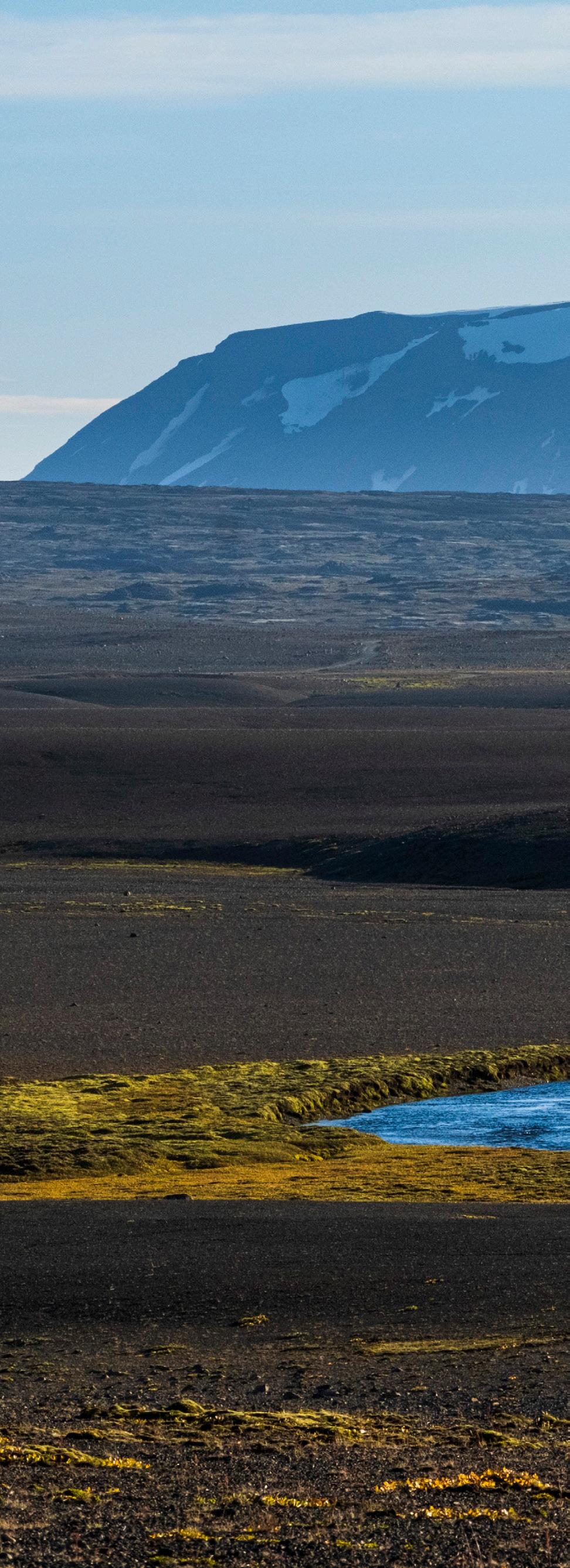
WILDERNESS AS CAPITAL
In the years leading up to the banking collapse of 2007-2008, Iceland went through a period of unprecedented growth. Unlike the petro-fueled greed of other countries, the expansion of Icelandic capital went hand-in-hand with green technologies like geothermal and hydroelectric power. Iceland has become internationally recognised for its commitment to environmentalism, and the current administration’s goal to reach carbon neutrality and complete the energy transition by 2040 is one of the most ambitious climate policies in the world.
It may come as a surprise to outsiders that Iceland’s green expansion has been a subject of controversy, with environmentalists saying that Icelanders treat green energy like others treat fossil fuels – a source of infinite expansion in a finite world. According to some, the goal of such “green capitalists” is to make sure every drop of water powers a turbine before it reaches the sea. Such a worldview sees the powerful currents of Gullfoss not as a confrontation with the sublime but as a failed investment, a faucet left running.
These tensions came to a head during the planning and construction of the Fljótsdalsstöð hydroelectric dam in Kárahnjúkar, an area within Vatnajökull National Park. Completed in 2009, the reservoir required an area of formerly pristine wilderness about the size of Manhattan island to be flooded. The project was highly controversial and polarised Icelandic society to an unheard-of degree. The Kárahnjúkar controversy was a defining event for the political consciousness of modern Icelanders and can likewise be considered to represent a sea change in Icelandic attitudes towards wilderness. According to the developers, the land to be flooded was empty; a wasteland. Ecologists disagreed, pointing out that where construction crews saw empty space, the scientist saw a delicate, precious ecosystem.
Nevertheless, the developers were, in some sense, correct. Vatnajökull’s highland is about as sparse and desolate as it gets in our sublunary sphere.
Kárahnjúkar forced Icelanders to confront a very basic question: what is the value of empty land?
52 | ICELAND REVIEW
KÁRAHNJÚKAR FORCED ICELANDERS TO CONFRONT A VERY BASIC QUESTION: WHAT IS THE VALUE OF EMPTY LAND?

ISSUE 05 – 2022 | 53

“HAVE YOU EVER CAMPED UNDER THE NORTHERN LIGHTS? JUMPED OFF OF A WATERFALL? HIKED TO A VOLCANO?”

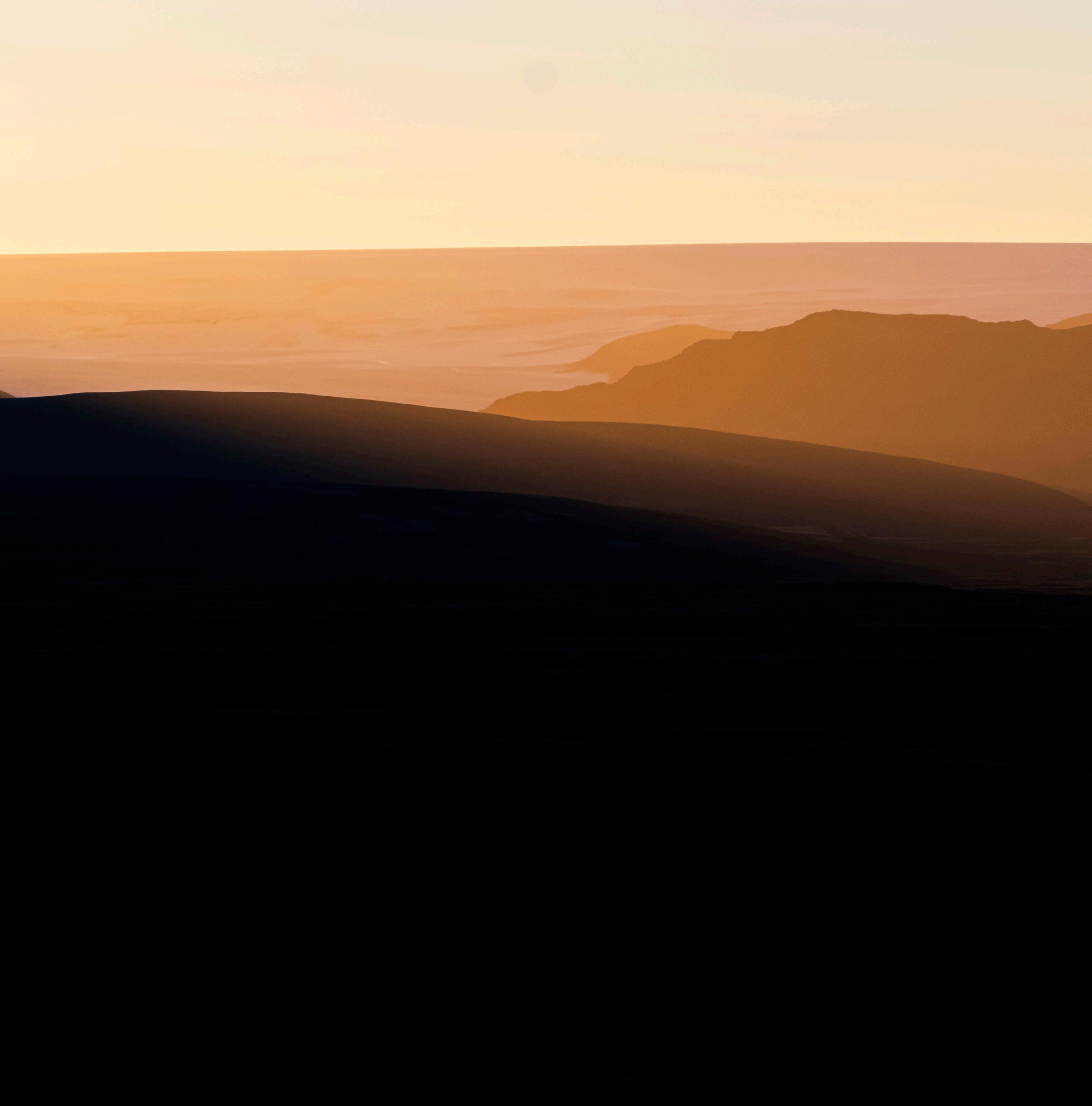
“NOBODY LIVES THERE. BUT THE HIGHLAND ISN’T EMPTY.”
56 | ICELAND REVIEW
EUROPE’S LAST FRONTIER
In December 2020, Iceland’s parliament debated a bill to designate 40,000km² [7,700mi²] of Iceland’s interior as a national park. The proposed legislation, debated by parliament until midnight, would have united several nature areas, including Vatnajökull National Park and popular hiking destination Landmannalaugar, under one administrative framework, establishing it as Europe’s largest protected wilderness. Despite having been touted as a keystone of the current administration’s environmental policy and a major part of the coalition agreement between the LeftGreens, Independence Party, and the Progressive Party, the bill floundered in debate and is not expected to pass.
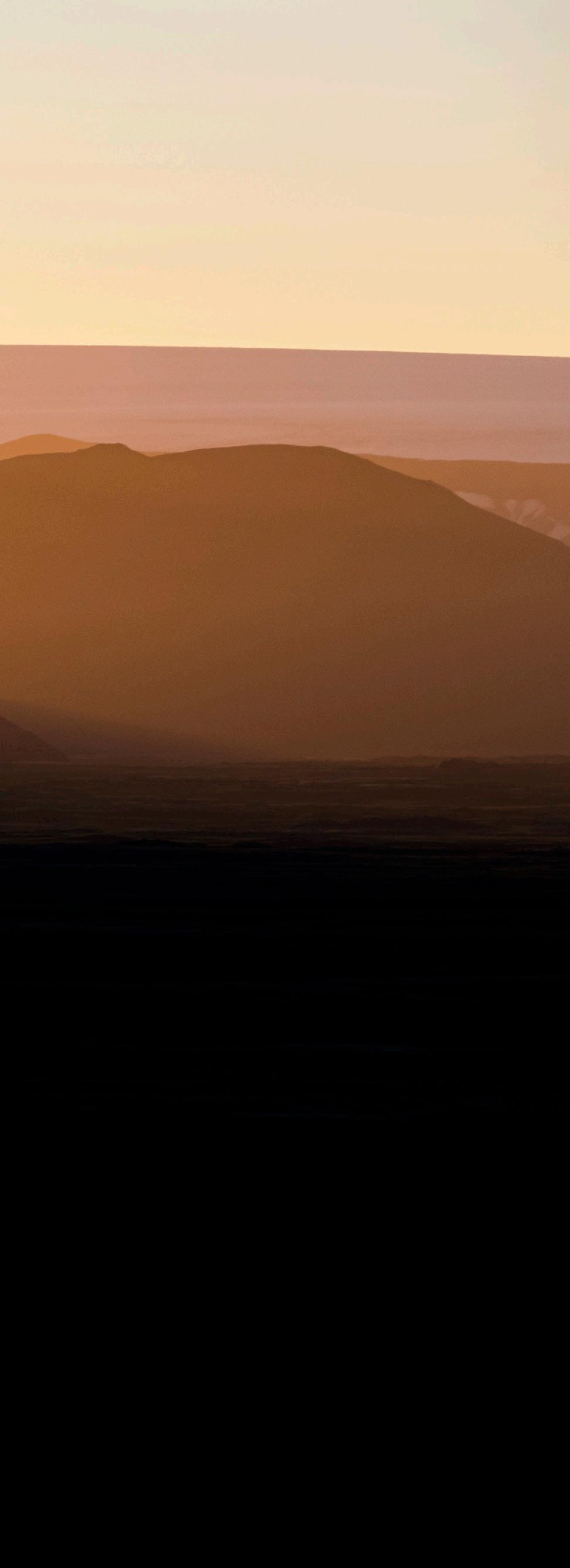
Guðlaugur Þór Þórðarson, Independence Party MP and current Minister of Environment, Energy, and Climate, has the Icelandic highland in his bones. In fact, he tells me he doesn’t even know the first time he was in the highland, as he was too young to remember. All that remains with him is a story his mother told him about a leaky jeep, a river crossing, and an infant Guðlaugur who was made a little too wet for his liking.
The Highland National Park and resistance to it has often been framed as a classic case of urban vs rural: environmentalist bureaucrats in Reykjavík imposing their plans on the municipalities, who want nothing more than the autonomy to live their lives and use their land as they see fit. “Unfortunately, or rather, fortunately,” Guðlaugur says, “it’s not as simple as that.” Guðlaugur points to the case of Snæfellsnes National Park. Established in 2001, this park has proved tremendously successful, not just from a conservation perspective but also for the locals. “They have been supportive of the park since day one,” Guðlaugur says. “It’s a great example of the municipalities and state working together. No one there would ever want to return to how things used to be.” The only way forward, according to Guðlaugur, is if all parties benefit from conservation and that the municipalities are taken into consideration as well.
The Highland National Park may have failed, he tells me, but this is far from the total story of land conservation in Iceland. Iceland has a total of 113 protected areas, giving it one of the highest percentages of legally protected land in the world. “Some 30% of Iceland is already protected,” he explains. “But we haven’t worked out a plan for these protected areas.” Currently, there is no national framework for protected wilderness areas in Iceland. Notably, this means that different regulations and laws apply to Iceland’s three national parks: Vatnajökull, Snæfellsjökull, and Þingvellir. Þingvellir, in particular, rests in a special position, its unique historical and political importance placing it under the administrative umbrella of parliament.
For Guðlaugur, the next frontier in Icelandic wilderness conservation is the working group recently commissioned by the government which is compiling a “green book” on wilderness, land use, and biodiversity in Iceland, to be submitted this autumn. Debates around conservation often devolve into conflicts around deeply entrenched ideological positions – on the one hand, the environmentalists who oppose any and all encroachment on undeveloped land, and on the other, those who see Iceland’s wilderness as something merely to be exploited. “So far, there’s been no basis to discuss these things,” the Minister states. “It’s important to know what we disagree on.”
PARKS AND IDENTITY
Yellowstone was established in 1872 by an act of the United States Congress and is widely regarded as the first national park in the world. As American urban centres expanded and as other natural wonders of the Americas, like Niagara Falls, became increasingly developed and commercialised, Yellowstone was set aside for
ISSUE 05 – 2022 | 57
conservation and recreation. Western Europe largely lacked comparable national parks, but in recently unified or liberated colonial states, the establishment of national parks became a point of pride.
Iceland, also a colonial nation at the time, established its first national park at Þingvellir in 1928. In Iceland’s case, the connection between the establishment of parks and a growing national identity is even stronger than elsewhere, Þingvellir being the traditional assembly site for Alþingi, Iceland’s parliament. Though Þingvellir is by no means a wilderness, it shows us that when we choose to set aside land as a park, in addition to whatever good intentions we have, we are also saying something about ourselves.
Wilderness only exists in comparison with settled land. To call something a wilderness is a choice we make, to designate it outside our little world of settlement. And if we make it, isn’t it our prerogative to unmake it as well? Are wilderness areas simply there for recreation, oversized mountain bike trails, and beaches? Is Iceland’s highland a form of capital, a resource that ought
to be invested in and developed? Maybe wilderness is a vital link in the global ecosystem – a precious store of biodiversity? Or does the highland have nothing to do with us, standing remote at the edge of our maps, the silent negation of our built-up settlements?
SEEING GREEN
In 2017, then-graduate student and now-researcher Jukka Siltanen published findings in his M.S. thesis that confirmed what many suspected: national parks in Iceland were big business. Jukka’s thesis sought to dispel an attitude often heard in government administration – that parks simply incur costs with no tangible benefits. When Jukka sat down and crunched the numbers, he found something remarkable: the economic impact, essentially the return on investment, of Snæfellsjökull National Park was figured to be a staggering 58 to 1.
The study compared the economic impact of Snæfellsjökull National Park to the National Parks system in Finland. In the Finnish context, the parks were found to return a “mere” 10 to 1 economic impact, including direct

spending at the sites, hotel and hostel accommodations, meals at restaurants, travel expenses, jobs created, and other secondary effects. In comparison, Snæfellsjökull was a goldmine, with every króna invested yielding 58 in return.
However, Jukka’s study also provided a warning: unmanaged tourism would ultimately decrease the profitability of the national parks, as decreasing quality of experience would lead to less time in the park, less money spent, and ultimately fewer trips to the region and to Iceland. Some 70-80% of tourists that come to Iceland cite nature as the primary reason for their visit, and should that feeling of solitude, authenticity, and purity diminish, it is unclear whether tourists would still choose to come.
Such findings gave an empirical basis for what might be called a “third way” in conservation, dissolving the old distinction between fussy environmentalists and unsentimental investors. National parks, it seems, can satisfy both.
A proponent of such an approach is Minister Guðlaugur, who has
“ICELAND CANNOT SIMPLY DEVELOP FOR THE SAKE OF ENDLESS GROWTH.”
58 | ICELAND REVIEW

ISSUE 05 – 2022 | 59

60 |
advocated for profitable climate solutions throughout his political career. Embedded within Guðlaugur’s job title as Minister of Environment, Energy, and Climate is a tension; some might say that the environment and energy stand at odds with one another in a zero-sum game. Any concession to one is a loss to the other. Perhaps the recently renamed Ministry is a statement of optimism that these elements might be brought into harmony.
NATURE FOR ITSELF, BY ITSELF
Climate solutions can be profitable, and conservation can certainly benefit a community. And yet, is there perhaps bad faith behind this optimistic moderation? Can we really have it all?
Some environmentalists might say that a powerline running through the highland changes the nature of the highland. A hydroelectric dam across a river is not merely a construct of steel and concrete, a pit stop for the river on its way down the land. In harnessing the river for power, for us, we change it, not just in the course of its flow, but at a more fundamental level. The dammed river has become a storehouse, a reserve
of energy that stands at the ready, for us, for our use. The dam kills the river that once flowed from time immemorial and replaces it with a battery. As the settler Þórólfur might think of it, to dam a river is to turn even the wilderness into byggð, another part of the farmstead.
One environmentalist sympathetic to such a view is Auður Önnu Magnúsdóttir, managing director of Landvernd, or the Icelandic Environment Association, the oldest and largest such organisation in Iceland. Given this pedigree, it is fitting that Landvernd was the birthplace of the Highland National Park bill.
With the Highland National Park on hold, I ask Auður what’s on the horizon for Landvernd. “I know it sounds really boring,” she begins. I lean in: little does Auður realise my interest in wellwrought policy. “But the most important thing right now is that we make sure that the decisions we make are professional, and they’re taken with the interest of nature and the general public in mind.” The tourism industry has exploded over the last decade in Iceland, and with no general framework for development and conservation, it is all too easy for
decisions to be made largely in reaction to problems as they arise. “Iceland cannot simply develop for the sake of endless growth,” Auður tells me.
Already producing more energy per citizen than any other nation, Iceland must consider instead how to use its energy resources more efficiently. The constant growth mindset, Auður says, runs up against a fundamental problem: we live in a finite world.

Still, some development is inevitable. Playing devil’s advocate, I mention the lava fields between Keflavík and Reykjavík. These fields are not idyllic woodlands, and the words that come first to most visitors are “wasteland,” “martian,” and “desolate.” And the highland contains many such places, stretching for miles and miles. What, exactly, is lost when we develop empty land?
No such thing as wilderness
“I don’t know what empty land is,” Auður responds. “Nobody lives there. But the highland isn’t empty.” It turns out, unsettled doesn’t equate to untouched. “We have a lot of desert in the highland, but it wasn’t always like that. As a result
ISSUE 05 – 2022 | 61

“IT’S IMPORTANT TO KNOW WHAT WE DISAGREE ON.”
62 | ICELAND REVIEW
of sheep grazing and climate change, it has become more desertified.”
She holds up Þjórsárver, a region between Hofsjökull glacier and the Sprengisandur desert, as a jewel of conservation. This region is unique in Icelandic ecology, separated from the rest of the highland by glacial rivers.
“The region is over 600 metres [1,970 feet] above sea level,” Auður explains. “Fifty per cent of all the plants that are found in Iceland are found there. And there are so many flowers, so many different flowers.” Besides beautiful and diverse plant life, Þjórsárver also plays an important role in the global ecosystem, as it serves as a vital breeding ground for many migratory bird species that summer in Iceland. One-third of the entire world population of the pink-footed goose, for example, has its breeding grounds in this little corner of the highland.
The highland certainly serves an important role, and there are very good reasons why we should conserve it, both for our own future interests and for the ecosystem more generally.
Nevertheless, when it comes down to it, I notice that both Auður
the environmentalist and Guðlaugur the practical realist hit a wall when discussing the highland. All of these explanations, justifications, and policies seem to be beside the point. When pressed on the importance of the highland, both hesitate for a moment and wax spiritual in their own ways. The highland is worth money, but also something more.
For Guðlaugur, it is expressed as a swell of patriotism, bearing a “high price in the heart of all Icelanders.”

For Auður, it surfaces as something mystical, a connection to a source of power bigger than humanity. “You see nobody, and you see no roads, and you see no power lines, you see nothing constructed by the hand of man,” she says. “And you feel very small, but at the same time a part of something extremely big. You just know that something is right there.”
Yoga in the highland
When travellers sit down on an Icelandair flight, they will watch a two-and-half-minute safety video starring a young backpacker with a Macbook. Images of aeroplane safety are
juxtaposed with romantic experiences of the landscape: as she fastens her life vest onboard the plane, the scene is transfigured into a kayak adventure tour.
The safety video could be said to present the “tourist ideology,” a glimpse into the ideal Icelandic experience. The video description on Youtube asks us: “Have you ever camped under the northern lights? Jumped off of a waterfall? Hiked to a volcano?” The ideal Icelandic experience, according to the video, consists of an individual, alone, having an encounter with nature.
The video, seen by nearly every visitor to Iceland, trains us to see the landscape in a certain way. Implicit in it is a set of values, not necessarily wrong, and also a theory of what the wilderness is. One theory of many.
Locale for recreation, bioreserve, profit centre, spiritual sanctuary – the highland is all of these things and none.
As I spoke with Auður, she paused, apologising: “But I’m a scientist after all. Björk is much better at talking about these things than me.”
ISSUE 05 – 2022 | 63

64 | ICELAND REVIEW
 Words by Gréta Sigríður Einarsdóttir
Photography by Viðar Logi
Words by Gréta Sigríður Einarsdóttir
Photography by Viðar Logi
ISSUE 05 – 2022 | 65 Queen HomecominG
What do you when you’re forced to spend time at home for three years? When your social circle shrinks to ten of your closest family and friends and you spend your time shifting from your makeshift at-home office to your kitchen, before closing the night out in your living room. Some people hated it. Others relished in the release from bourgeoisie constraints. International pop star, musical wunderkind, rare mononymic celebrity, and Iceland’s proudest export Björk? She loved it.
HOME
“I felt lucky really, that I could spend some time at home,” Björk says, looking out at the ocean view by Grótta lighthouse. “I haven’t been this much at home since I was sixteen.” Björk has always kept one foot in Reykjavík. “Even the years I spent in London, I still spent like 60% of the time in Iceland. The same for New York. I was only there for like 40% of the time. I’ve always been an Icelandic citizen and spent most of my time here.” The difference this time was that a few years ago, she had packed up her home in New York and shipped all her belongings to Iceland, gathering herself in one place. “These past few years have been about coming home and staying at home, due to COVID but also taking all my boxes of stuff home. Everything I own is in Iceland right now.” This isn’t really new to her, though, Iceland has always been home. “Whenever I talk to a taxi driver or someone at the swimming pool, they assume that I’m always somewhere abroad. It’s because when I’m at home, I don’t really go out to exhibition openings or have my photo in the gossip magazines. I stay undercover. People don’t really know I’m here. And I’m glad. It means I can just walk to the store and live my life.”
This is the environment that inspired her latest album, Fossora. She calls it her mushroom album, a visual shorthand representing the thematic and musical feel, a physical, grounded sound that feels, somehow, biological. “It’s hard for me to describe my records, what makes them different and what makes them the same. I’m blind to my own music,” Björk says in the way of explanation. “Take my last album, Utopia. That was my science fiction album, my island in the sky. It wasn’t just a personal utopia for me. It had a grander scale. When we performed it live, we had a manifesto from Greta Thunberg attached to it, outlining our dreams for the environment. Musically speaking, I used a lot of flutes. Even the synthesisers sounded flute-like.” Five years later, her new album is the exact opposite. “It’s about coming down from the cloud and landing on the ground. Both in terms of the soundscape – we have bass and clarinets and sounds coming from down in the ground – but also in terms of the lyrics. All the songs I’ve written for the past five years have been about leaving this digital dream and landing on the ground, trying to realise the dream, carry out the manifesto and put it into action.” It’s this feeling of groundedness that makes Fossora fungal.
“I’ve noticed this pattern before,” Björk adds, explaining that the three albums she made around the turn of the century followed a similar pattern as her three latest. “In 1997, I made
Homogenic, which was all about heartbreak and the end of an era, not just in love, but also a certain chapter in my life.” In 2001, she made Vespertine, which represented a new beginning. “Every time you start something new, you set yourself some ethereal goals. ‘This time everything is going to be perfect. I’ll do it this way and never do the other thing again.’ So, these albums are about Paradise. I’m conscious of the fact that I’m talking about the way I want my life to be, not the way it is.” The albums that close each trilogy represent reality in a way the others don’t. “With records like Medulla and this new one, they take the manifesto from the previous album and live that life. You know, staying at home, doing normal things. Going to the store, going for a walk, meeting some friends.” Each album is connected to a chapter in her life, a span of a few years, and Fossora is the album Björk made at home. “For that time, your home was where everything happened. Both literally, but also in terms of the soundscape. I started listening to more music that was grounded and solid.”
MOM
For Björk, this was overall a happy time. But in the course of five years there are always ups and downs, and during this period Björk lost her mother. “These years were great, but you know how life is. Things happen, and we need to deal with them. Most of us, unfortunately, have to at some point deal with losing a parent.” Two of the songs on Fossora are written for her mother, Hildur Rúna Hauksdóttir. She wrote her both an epitaph and a eulogy. “I have one song I wrote about a year before she passed away. It was when my brother and I were starting to understand that this would be the last chapter. Still, we didn’t know how long it would be.” For Björk, the song she wrote while her mother was still living was the one containing more sadness. “I’m grieving this realisation.”
Looking back, Björk says she was influenced by Grafskrift, an 18th-century elegy to the life and death of Sæmundur Klemensson, noting biographical details such as his birth, marriage, and god-fearing actions. “It’s one of those old songs some people still know and might start singing after a drink or two. Most such songs are dramatic and romantic, but this one is such a simple list of biographical details. It feels like information from Statistics Iceland. Born this year, named this, got married, passed away. I thought: wow, this is such an expression of the patriarchy.” In her epitaph to her mother, Björk wanted to write the exact opposite. “It’s her story in biological terms, not cold statistics, and it’s emotional. So, in Sorrowful Soil, I say: All women are born with 400 eggs, but each woman will only make 2 or 3 nests. So, it’s a biological epitaph of a woman. And to me, that’s more important than detailing her career or listing her birth and death dates.”
The eulogy is written after she passed away, containing a narrative of her and Björk’s relationship. “After writing this song, I understand better when people say that a funeral is about celebrating people’s lives. There’s more joy there. There’s sorrow, of course, but it’s a time to reminisce and remember the person’s good qualities. It’s a chronological
66 | ICELAND REVIEW

“This is my mushroom album.”
ISSUE 05 – 2022 | 67

“Most of us, unfortunately, have to at some point deal with losing a parent.”
68 | ICELAND REVIEW
story starting with my childhood, and each of the seven stanzas tells a story before I say goodbye to her in the end.”
While working on the album, Björk was also experimenting with Icelandic folk songs, something she is considering exploring further. Following the songs about her mother is an arrangement of a 17th-century poem by Látra-Björg, a female poet known for her wit and intellect, extolling the virtues of a place in Iceland when the sun is shining, ending on a line denouncing that very same place once the weather turns. “When I was deciding the order of the songs on the album, I thought it was important for this song to follow the songs about my mother, sort of as a palette cleanser. It’s a joke as well as a consideration of optimism and pessimism. That was sort of a theme in our relationship, me and my mom, so I thought it was very fitting.”
Initially, Björk wasn’t sure she would include the songs about her mother at all, pondering whether she should release them separately. “I didn’t want it to look like I was dining out on this for my record. I felt very defensive about them for the four years since her death. I didn’t know where to put them. I wanted to find them a good place and at the same time be respectful to my brother and everyone who cared about her.” In the end, it made sense to her to include them on the record. “The songs reflect who I am, what kind of musician I am. Each record represents a chapter in my life and being of my age, being a musician, this is part of life: saying goodbye to a parent. It would be weird if I tried to compartmentalise that and push it aside.”
When asked if the experience and the creative process changed her view on her relationship with her mother, she paused. “That’s a good question. You know what happens when people say it’s a good question? It means they don’t have an answer.” She went on: “Look, it’s not the music I made that changed me. I’ve been making music since I was a kid, that’s where I feel the most at home. I make all kinds of songs, I make sad songs, happy songs, party songs, and hopefully funny songs. Every emotion is represented in my music. When it comes to having to deal with the death of a parent, writing a song about it is my comfort zone.” For her, rediscovering her mother came not in the big moments, but in the little ones along the way. “A tiny thing might happen on a random Tuesday, and you think: ‘Oh, that’s why my mom did it this way when I was a kid. And the following Sunday, I’ll have another tiny epiphany.” That isn’t limited to this period in her life either. “It will keep happening when I reach her age, I think. I’ll have another perspective by then. So it’s a whole lifetime of rediscovery.”
POLITICS
In an interview with Iceland Review from two decades ago, she mentioned that she was beginning to find an interest in politics. “I remember I hadn’t been very interested until then. I preferred putting all my effort into making more music. I would leave the politics to the politicians. But I’ve always cared about the environment, that’s what got me to start talking about it.” Björk realised that she had a voice people were
willing to listen to, and that she had to use it. “For the past 25 years, I’ve tried to regularly bring a fresh perspective, looking at things from a different angle than others might. I try to get people thinking about what we can change.”
Björk doesn’t have any allegiance to a political party, not on the left or the right. “You know, I’ve never voted, not ever. I think that helps me.” From her neutral position, she found she could engage both avid environmentalists and industry leaders, challenging them to find new solutions. “At the time, they were planning to build more and more aluminium smelters, damming rivers for hydroelectric power across the highlands, until there would be no untouched nature left.” There was a national awakening, where Björk and several others fought against further development in Iceland’s wilderness. “There were all sorts of things that we couldn’t stop, but there were plenty of things that we managed to. What has happened since then is a new appreciation for what the land has to offer. It’s hard to imagine now, but fifteen years ago, the only thing you could buy in smaller towns was a burger in the local gas station. There were no hot spring baths in every town, fresh trout, or local craft beer. Not for the tourists or the rest of us. We were lucky that the tourists came, in that regard. There are disadvantages too, maybe, but it had the effect of halting the heavy industrialisation that was happening. The tourism industry was more lucrative than the aluminium smelters.”
Björk travelled all over the country with other artists and environmentalists, engaging locals in discussion of the future of the land. “We invited them to talk, from the left as well as the right side, tech people, green people. Everyone was invited because we wanted more ideas. Ninety per cent of the towns thought that the only thing that could save them was an aluminium smelter. Either we get one, or we all have to move to Reykjavík. Now, that’s no longer the case.” Globally speaking, Björk also feels a shift in people’s mindset. “We used to be in such a denial. Fifteen years ago, it felt like 90% of people were in denial and 10% were seen as crazy hippies. At this point, 90% of people realise that global warming is happening and 10% are in denial. You don’t have to convince people anymore; we can talk about what we can do to react.” As for the solution, it may be on its way, but the way is excruciatingly slow. “It’s not just one thing, we all have to change in a million different ways. And it is happening. Every day, there’s some positive change in the news. I have extremely high hopes for the next generation. But it’s happening way too slowly, of course.”
MUSHROOMS
Despite her interest in politics, Björk’s main focus is her music. She has always presented her sonic creations in interesting visual ways: pioneering music videos, VR exhibitions, and imaginative artwork and stage performances. “You know, I was in bands for about ten years, and I love collaboration and teamwork. I was pretty late to the game as a solo artist. I made my first solo album at 27,” she says, by way of explaining her philosophy of visual expression. “What I would do is take
ISSUE 05 – 2022 | 69
full control of the music on my albums. There’s no teamwork there; I call the shots. There’s collaboration, of course, but it’s my album. For the visual aspect, I do teamwork.” She presents her ideas and her vision for the music, “because it’s my responsibility to make sure there’s a bridge between the music and the visual aspect.” Björk says she got burnt a few times during her first years with the Sugarcubes when there wasn’t any connection between the music and the visuals: “Back in the days when I was in a band with Einar Örn [Benediktsson] and Sigtryggur [Baldursson], they handled the communication with the outside world and booked the gigs. At that time, you know, we couldn’t do it online or through email. Sigtryggur sat there writing letters to Berlin and some punk bands abroad. ‘Dear punk band, may we please come play in your basement.’ And we’d get a reply a month later. That was their department. I was the one in contact with photographers and the ones making the videos. I learned by doing. Sometimes, I’d see that yes, this is what I imagined that song would look like. And at other times, I’d see a photo and think, no, that’s not it.”
After a decade of learning by doing, Björk was well versed in connecting the musical to the visual. “I realised what it was that connects them. It’s colours, it's texture, it’s a feeling. But I still think I’ll spend the next 30 years on trying to solve that riddle.” These days, when Björk makes an album, she has a strict plan. “I say, ‘These are the colours; this is the texture.’ That’s why I refer to the album directly in visual shorthand. ‘This is my mushroom album.’ And then everyone around me starts to think I’ve lost the plot,” she says with a grin. “But what I’m saying is that’s what ties it all together. The fourteen songs are very different, but they all have that in common: the underground feeling and the fungal theme.”
On her new album, Björk features artwork by a young Icelandic photographer and the voices of the Hamrahlíð Choir. “I’m very thankful to the Hamrahlíð Choir for doing this with me,” she interjects. “The conductor told me this was one of the hardest songs they had ever rehearsed. Most choir pieces have four parts, but this song had nine. I think they held something like sixteen rehearsals. They spent their summer working on this song. They had plenty of other things to do, you know.” For Icelandic artists, Björk is in a league of her own, and collaborating with her is an honour. When it comes to the opportunities she affords young artists, Björk is humble. “I decided that I belong on the edge. And I attract musicians and visual artists that are interested in that kind of work. What’s beautiful about reaching this age is that we inadvertently become teachers. People seek you out for your knowledge and experience.” While she appreciates her opportunity to share her experiences, she firmly maintains that it’s very much a two-way street. “You may say that I teach them, but I have to say, no one is as generous in collaboration as people that are just starting out. It’s so much fun, that energy and that high.”

“You know, I’ve never voted, not ever. I think that helps me.”
70 | ICELAND REVIEW
THE NATURAL CHOICE
ICELANDIC LAMB – BEYOND COMPARE
True to our tradition of 1,100 years, pure-bred Icelandic Lamb grazes freely, acquiring delicate seasonings of berries and herbs. Its premium quality, texture, and delicious flavour make it the natural choice of leading chefs. Look for the Icelandic Lamb Shield, a guarantee of excellence awarded to Icelandic restaurants.
www.icelandiclamb.is

ISSUE 05 – 2022 | 71
THE Mixed LEGACY OF Arctic Explorer


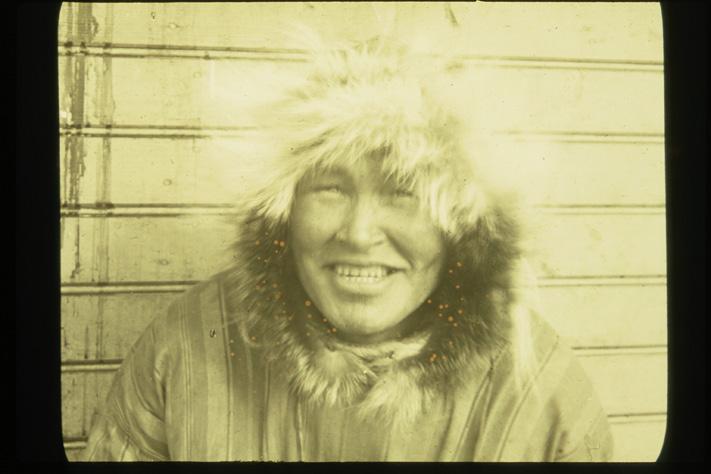

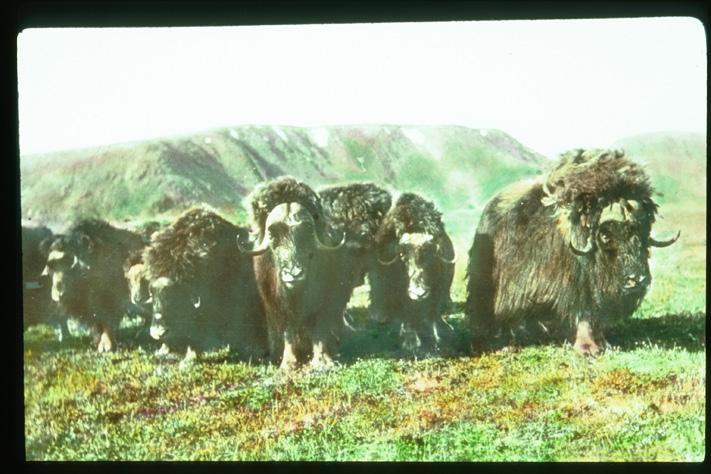





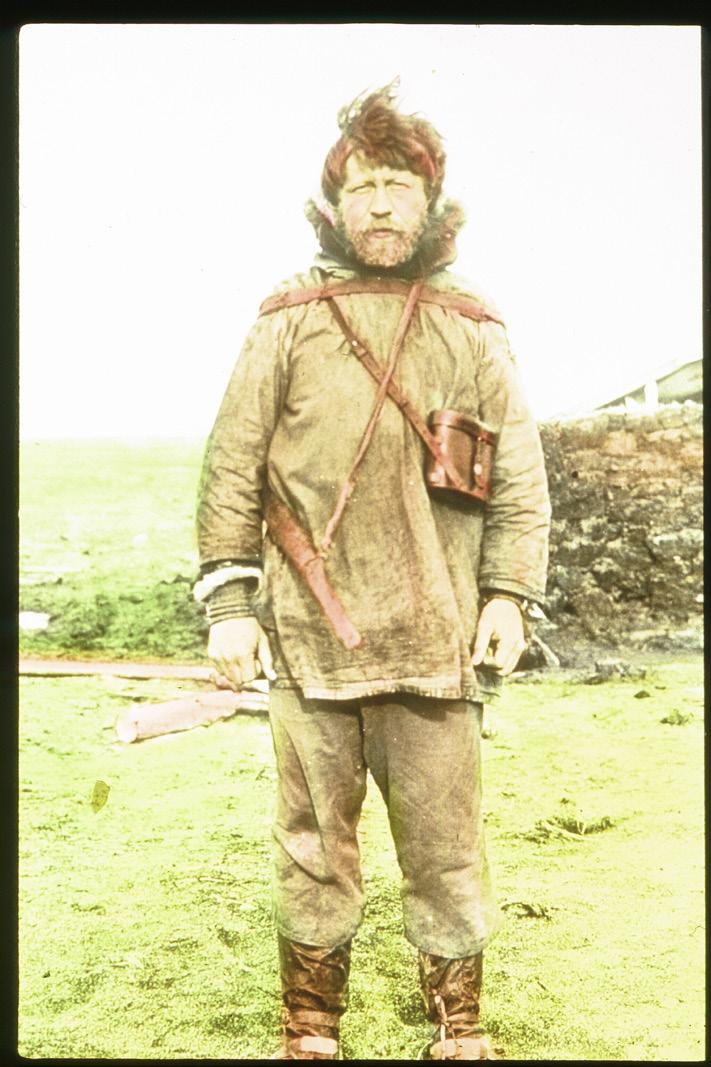
STEFÁNSSON
Words by FRANK WALTER SANDS
Photography copyright of DARTMOUTH COLLEGE LIBRARY
72 | ICELAND REVIEW
Vilhjálmur
Everyone loves a good story, especially tales of adventure featuring a dogged, tenacious and sometimes tragic hero. In our day, thanks to more objective research and unflinching writing, heroes have lost much of their shine. Where we once unquestioningly celebrated aviator Charles Lindbergh, there is no denying that he was also a Nazi sympathiser with multiple secret families. In addition to being an author of the Declaration of Independence and the third U.S. President, Thomas Jefferson is now recognised as a major slaveowner. Innovator and industrialist Henry Ford was a virulent antisemite.
While their failings and imperfections are evident and undeniable, we now have an opportunity to recognise our heroes’ essential humanity, and thus better understand and relate to them. The tale of Vilhjálmur Stefánsson, legendary North American explorer of Icelandic heritage, sheds light on both the adventuring spirit of early-20th-century scientists and their shortcomings. These men and women risked life and limb in the search of knowledge, making dramatic discoveries and challenging long-held ‘truths’ in the process, but were unable to see past their prejudices or admit any of their own weaknesses.
“I’m eager to tell you about him. … He’s done a few amazing things and everything about him is striking,
starting with his name, which is Vilhjálmur Stefánsson! Quite a mouthful! That first bit sounds like Vil-YAL-mur, but he likes to be called Stef[…] He’s a slightly more refined version of one of those Neanderthals the anthropology chaps dress up in modern clothes to show how much they look like us.”
Charles Alcott, 1919, describing in a letter his first impressions of the Arctic explorer Vilhjálmur Stefánsson.
In January 1914, the Canadian Arctic Expedition’s flagship, the HMCS Karluk, was steaming to a rendezvous with the expedition’s other two vessels at Herschel Island in the Beaufort Sea of the Arctic Ocean, five kilometres [3.1 miles] off the northern coast of Canada’s Yukon Territory. World War I had not yet begun, and world powers were vying for territorial claims on uncharted Arctic areas. The expedition was under the leadership of Canadian-American anthropologist Vilhjálmur Stefánsson.
The main objective, according to Vilhjálmur, was to explore the “area of a million or so square miles [...] lying between Alaska and the North Pole.” The Canadian government supported the mission financially and was hopeful that the trip would strengthen Canada’s claim of sovereignty over the Arctic islands.

As they neared Herschel Island, the former whaling ship slowed to a crawl as
it was caught in rapidly freezing sea ice. Although her bows and sides had recently been sheathed with Australian ironwood, Captain Robert Bartlett had doubted the ship’s fitness for the mission. The Karluk’s engineer agreed, describing the coalpowered engine as “a coffee pot [...] never intended to run more than two days at a time.”
The Karluk had no radio, and the expedition’s other ships were too distant to signal with lights or flares. With food supplies short, expedition leader Vilhjálmur announced he was leaving the ice-bound ship with three men for a ten-day hunting trip to bring back fresh caribou meat. Bearded and well-protected from the extreme cold by his Inuit-made clothes, the 35-year-old Vilhjálmur and his men struck off across the Arctic ice cap.



By the time Vilhjálmur and his team returned, the constricting ice sheet had carried off the fateful ship. It drifted westward for several months, reaching the East Siberian Sea north of the Russian mainland. Disappointed but not entirely surprised, Vilhjálmur realised there was little that could be done to help its erstwhile crew and set about busying himself with the expedition’s scientific objectives. For food, the four men lived off of whatever animals they could shoot with their rifles, mostly seals and polar bears. After 100 days, Vilhjálmur and his team were picked up by one of the other expedition vessels. As soon as he was

ISSUE 05 – 2022 | 73
resupplied, the undaunted Vilhjálmur headed north again with two companions to continue the mission in search of new lands.
No word had been heard from the Karluk, which was assumed to be drifting with the ice sheet, but Vilhjálmur was confident that Captain Bartlett would lead the crew to safety. He would not learn of the Karluk’s terrible fate until four years later.
IN EXPLORATION AND IN WAR
After a few weeks stuck in the ice, the crew of the Karluk knew that the chance of rescue was minute. To their terror, the incapacitated Karluk was carried ever farther North and gradually crushed by the remorseless ice, leaving the desperate crew shipwrecked on an unstable ice sheet. After several weeks in two rough shelters on the ice, the Captain began organising efforts to reach the nearest land mass, Wrangel Island, estimated to be some 60 km [37 mi] away. It turned out to be 130 km [81 mi].
The 17 crew members who made it there were constantly short of food and troubled by internal dissent. Six of the 17 who reached the island died before rescue finally arrived, in September 1914, including one crew member possibly
murdered for stealing food. The group arrived in Nome, Alaska, in mid-September to an enthusiastic welcome from the locals. Captain Bartlett went on to receive honours from the Royal Geographic Society for his “outstanding bravery” but was censured by the Canadian commission for taking the Karluk into ice. Privately, Bartlett was very critical of Vilhjálmur, but he never directly criticised him or anyone else.


Speaking about the expedition years later, Vilhjálmur said, “In 1914, the ship Karluk was lost, along with the lives of eleven men. Four men separated from the expedition and were never heard from again. I wasn’t there and didn’t know about it until four years later. [...] I grieve for these men, but that’s how it is in war, and in many other professions.”


GO WITH THE FLOE
Of the 25 crew and expedition staff aboard the Karluk after the departure of Vilhjálmur and his men, only 14 survived. Many criticised Vilhjálmur, the expedition leader, for lack of proper planning and preparation and for leaving the helpless crew on the doomed ship. Still, the teams’ geographical accomplishments were widely praised. Vilhjálmur’s team were the
first Europeans to see several islands in the Arctic Archipelago, including Meighen Island, Brock Island, and Mackenzie King Island. Vilhjálmur claimed that his team was the first and only ever to set foot on Borden Island, located at a latitude of 78°. He suggested that these distant islands could one day flourish as mining towns, bringing great wealth to Canada.
Vilhjálmur and his team were the first people known to survive living on drifting ice sheets, the largest of which was 40 km [25 mi] in diameter. With dog sledges and all their critical gear, he and his team would hop from one ice sheet to the next, sometimes riding the ocean currents opposite their intended direction. For this reason, their 1,000 km [621 mi] journey across the Beaufort Sea lasted 97 days, including a week’s delay at the edge of an ice sheet and a backward drift of 35 km [22 mi]. Vilhjálmur stayed in the Arctic for the next four years, travelling thousands of kilometres more and only returning to his cluttered Greenwich Village apartment in New York City after a near-fatal bout of illness in 1918.
CATTLE HERDER TO ARCTIC ANTHROPOLOGIST
Vilhjálmur Stefánsson (November 3, 1879 – August 26, 1962) was born in Manitoba,
74 | ICELAND REVIEW















EXPERIENCE NATURE from it ' s core
Visit Deildartunguhver, Europe’s most powerful hot spring and experience nature from its core by bathing in the geothermal baths at Krauma.

It is open all year around and offers five geothermal baths, a cold tub, infrared cell, steam bath and relaxation room where guests can lay or sit down, while being serenaded by soothing music and the crackling of the fireplace.
Krauma is located at Deildartunguhver, a 97 km drive from Reykjavík.
76 | ICELAND REVIEW
@kraumageothermal kraumageothermal +354 555 6066 www.krauma.is Deildartunguhver, Reykholt
Canada, in the Icelandic settlement of Arnes on the shore of Lake Winnipeg. Growing up in the Icelandic community of Mountain, North Dakota, Vilhjálmur learned English at school, proving himself an eager student. In his late teens, he worked as a herder of cattle and horses, developing skills in hunting, camping, and survival in a cold climate. He kept the cattle on the prairie through the winter, spending the season more or less alone with the animals. Later, he wrote that the scenery on Banks Island in the Arctic reminded him of the open prairies of North Dakota. “An Arctic blizzard,” he said, “wasn’t any more fearsome than the North Dakota variety.”
In 1906, when he was 27, Harvard University recommended Vilhjálmur as an anthropologist for the Anglo-American Polar Expedition. When the explorers failed to make their rendezvous with him on the Arctic coast, he used the trip as a training mission. He sought out mentors among the Inuit, studied their language, and honed his cold-weather survival skills. In his own words, “living with them was much better from an ethnological point of view than merely living amongst them, as other white men had done.” Vilhjálmur rose to the challenge of immersion, learning their native language fluently, which would be of great advantage in ensuing expeditions.


A DIET OF FISH AND FRESHWATER
Between 1906 and 1918 Vilhjálmur travelled some 32,000 km [19,900 mi] on foot and explored some 160,000 sq km [62,000 sq mi] of bleak and ever-perilous Arctic land and ice. He made three trips, spending about ten years in the far North. Enduring frequent ice and snow storms, Vilhjálmur often had to eke out a meagre existence in the darkness and isolation with the ever-looming threat of starvation. Describing one expedition, Vilhjálmur wrote: “For four and a half months I lived literally on nothing but fish and freshwater, and occasionally some polar bear blubber. At the end of these four and a half months, I was as healthy as I’d ever been before, enjoying every meal.”
When asked why he had never gone to the North Pole, Vilhjálmur would relish in comparing himself to other well-known polar explorers, such as Norwegian Roald Amundsen, American Robert Peary, and the Anglo-Irish Ernest Shackleton, by replying smugly; “I’m a scientist, not a tourist.” To those who viewed his accomplishments with wonder, Vilhjálmur would gently admonish: “Having an adventure shows that someone is incompetent, that something has gone wrong. An adventure is interesting enough in retrospect, especially to the person who didn’t have it.”
LEARNING FROM THE LOCALS
In an interview late in his career, Vilhjálmur wrestled with the fundamental question asked of explorers: why go at all? His answer: “From the point of view of an anthropologist I was primarily interested in the people who lived in the far North, their language, culture, religion and so on. And then, my interests gradually shifted into geographic channels. I became interested in discovering new lands.”
He listed the skills of Inuit hunting as essential for Arctic explorers, stating that “training a good hunter should take as much time as training a surgeon.” Once a potential explorer has proved himself as a true hunter, food need not be a major concern. “We managed to get more than 100 pounds of food for every bullet we fired. We mostly ate seal, caribou and muskox meat. Six pounds of ammunition would feed three men and six dogs for two years.” While many might baulk at a diet of mostly meat, Vilhjálmur was resolute; “Better food than wolf steak doesn’t exist.”
In 1927-28, when he was 36, he and a companion from one of his Arctic trips lived on nothing but meat and water for a year (under close medical supervision). Vilhjálmur was proud to report that specialists had afterwards deemed him fit and in perfect health. As for equipment, Vilhjálmur says, “Rifles, cameras, pencils and writing paper and, most importantly,


ISSUE 05 – 2022 | 77
really good field glasses [binoculars]. Apart from that you don’t need anything.” As for the key to becoming well-adapted to the Arctic: “A healthy body and cheerful disposition.” Adding, with a grin, “It’s not hard to be cheerful once you’ve adapted to living up there.”
Vilhjálmur was convinced that by learning the ways of the Inuit, anyone could successfully adapt to living in the Arctic. “You must learn the way of the animals, just as you learn the ways of the Eskimos.” Vilhjálmur did not believe that Inuit were physiologically better suited to Arctic conditions, saying that “... physiological adaptation to living in the Arctic [...] is negligible. But there’s great room for mental adaptation. [...] And you’ll need good clothing and good health. The Eskimos invented the best clothing that man has ever had in the North. And the best houses are the Eskimo houses.”
Many have suggested quotations such as these demonstrate that Vilhjálmur was ahead of his time in his admiration and respect for the Inuit and their way of life. He once lamented: “It is a great weakness that we go to the Eskimos to teach them rather than to learn from them.” Despite his public opinions, his treatment of Inuit was far from perfect.

A SUICIDE MISSION
In 1921, after retiring from Arctic exploration, a 42-year-old Vilhjálmur promoted the settlement of Wrangel

Island off the northern coast of Siberia, a bit of frozen land roughly the size of Crete, and the last known habitat of woolly mammoths. His ambitious plan was to transform the desolate, uninhabited place into a thriving British colony. Although Wrangel Island was generally recognised as Soviet-Russian territory, the idea garnered attention and promises of financial support. Both the risks to the colonists’ well-being and the danger of creating an international territorial incident were largely ignored by Vilhjálmur.
According to his plan, four ill-equipped and inexperienced young men and an Iñupiat woman, Ada Blackjack (née Delutuk), were sent to Wrangel Island to set up a base camp, raise the Union Jack, and formally colonise the place. The experiment predictably ended after two years of utter tragedy. Three of the men died as they struggled to hike across 1,000 kilometres [621 mi] of ice to the mainland.
Apart from a cat the men had brought with them, the only survivor was Ada, who cared for the last struggling man until his death from scurvy. Then she endured eight months on Wrangel Island alone. Her account of the tragedy was widely covered, and her condemnation of Vilhjalmur’s organisational talents contrasted sharply with his own portrayal of himself in his 1921 book The Friendly Arctic. The Wrangel Island tragedy following just a few years after the Karluk catastrophe severely tainted Vilhjálmur’s reputation. For the rest of his career,
his mixed identity as a scientist and showman was a repeated point of attack.
REJECTED FAMILY
In 1908, when Vilhjálmur was 29 years old, he was introduced to an Inuit seamstress named Fanny Pannigabluk and hired her on the spot to accompany him on his next expedition. During his second trip to the Arctic, Vilhjálmur and Pannigabluk became intimate. Although Vilhjálmur’s journals make it plain that “Pan,” as he called her, was critical to his physical survival and the success of his anthropological research, in his published writings, she is referred to merely as his seamstress and cook, albeit an accomplished assistant. The couple had a son, Alex, in 1909 and the family remained together for the next three years of the trip.



In 1915 Vilhjálmur was reunited with Pan and Alex. He developed a relationship with his son, teaching him to speak, read, and write English. At the end of his Arctic sojourning, Vilhjálmur allegedly wanted to take his 9-year-old son back to New York City, but Fanny was against it. It was the one argument she won. “He would have starved if it weren’t for me,” Fanny is reported to have said following Vilhjálmur’s departure in 1918. Vilhjálmur, on the other hand, drew on his memories of Alex for a series of children’s books that he co-wrote in the 1920s, notably Kak,

78 | ICELAND REVIEW
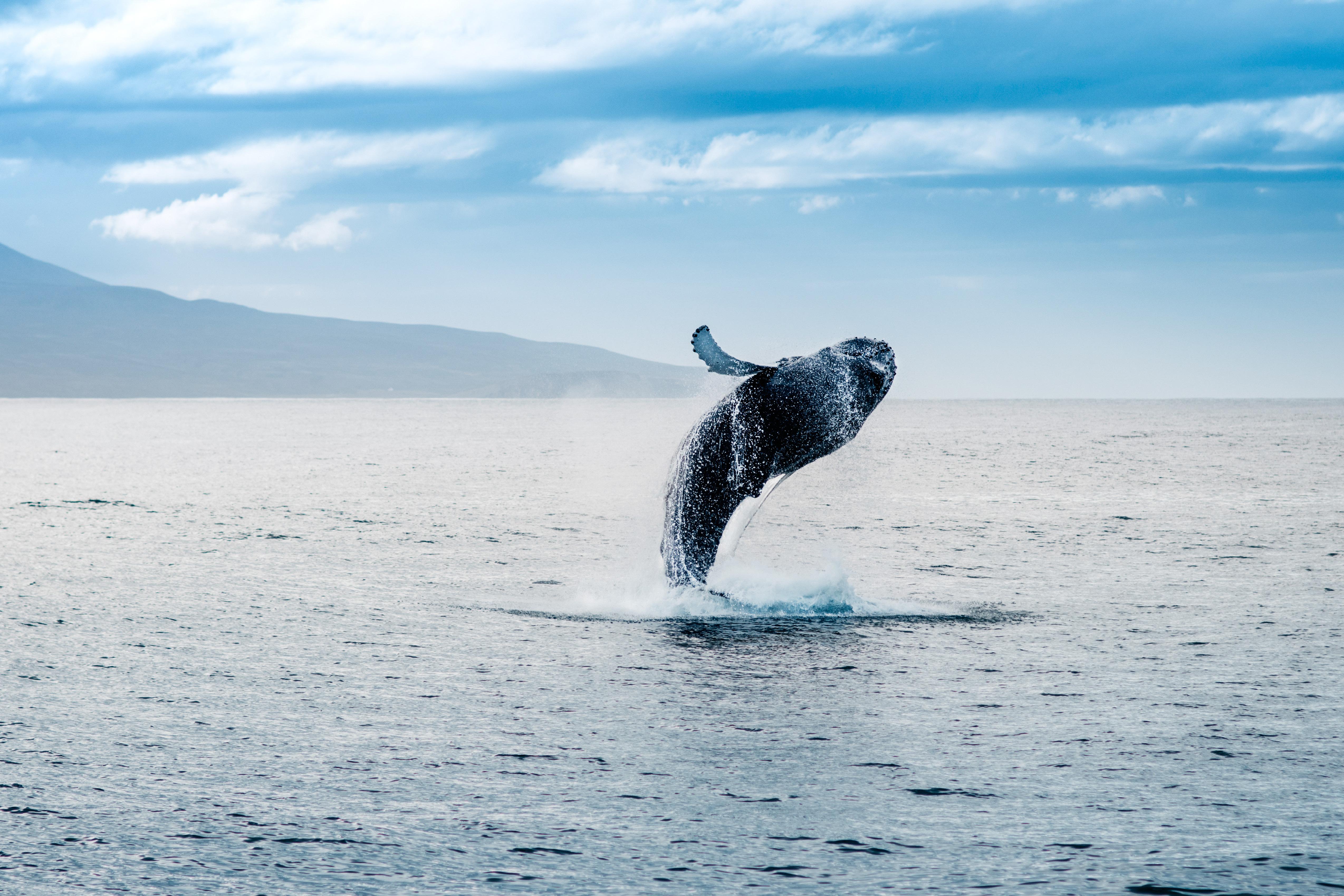





NORTHERN LIGHTS WHALE WATCHING FROM REYKJAVÍK BY BOAT 354-560-8800 specialtours.is info@specialtours.is BOOK NOW GOLD-CLA S V URKE ND ÐAÞ NU A CERTIFIED TRAVEL SERV CE WE GO THE EXTRA MILE SPECIAL T O U R S ICELAND Multilingual app
Glacier
Snowmobiling
An amazing Snowmobile ride
close to the Golden Circle
Come with us on an adventure on Langjökull, Iceland' s second largest Glacier.
Riding a snowmobile on the massive snow cap is a unique experience that you will remember for the rest of your life.

www.mountaineers.is ice@mountaineers is +354 580 9900
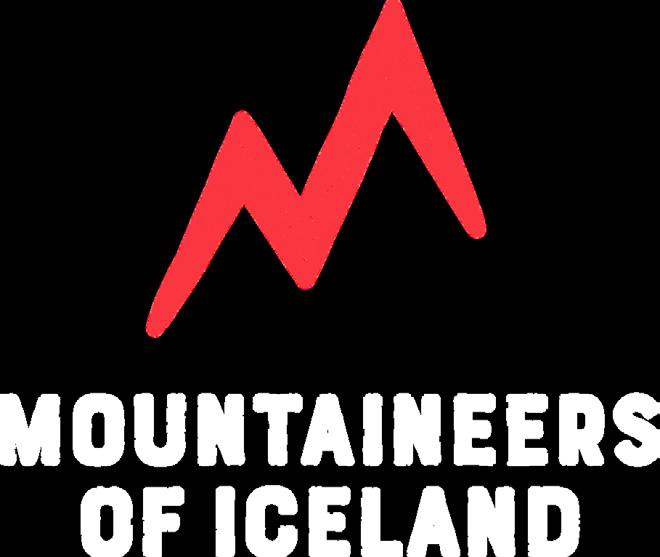
the Copper Eskimo, about the relationship between an Inuit boy and an explorer.




After Vilhjálmur left the Arctic for the last time in 1918, he completely ignored Fanny and Alex, and later in life was seen destroying documents pertaining to his Inuit family. There are indications that Vilhjálmur paid regular invoices for Pan’s account at the Hudson Bay Company store, but otherwise, he cut all contact. Vilhjálmur’s Inuit descendants consider the couple to have been married, pointing out that Vilhjálmur did not marry again until after Pan died in 1940. Along with an uneasy sense of pride, some resentment remained among his grandchildren that the famous explorer abandoned his wife and son when he was just nine years old. Alex Stefánsson, who gave Vilhjálmur Stefánsson six grandchildren that his father would never meet, died in 1966 at the age of 56.

WORDS VERSUS ACTIONS
As an explorer, Vilhjálmur was highly successful, becoming the first European to see and map several land masses. His contribution to Inuit ethnography and anthropological field methods should not be overlooked. He was one of the few anthropologists who pioneered the model of participant observation, and he spent his life as a cheerleader for the North. Vilhjálmur’s message was that the Arctic was not a peripheral frozen wasteland populated by savages, but the centre of the Earth, where America, Europe, and Asia meet. He published some 24 books and more than 400 articles on his travels and observations. He collected all manner of documents and books about the Arctic, amassing a collection of some 100,000 items, later incorporated into Dartmouth University’s library, by far the most comprehensive collection of the time.


In his diaries and publications, Vilhjálmur presents himself as the heroic image of a masculine hunter and explorer, engaged in perilous excursions in the
wild, Arctic domain of dangerous animals and exotic “natives.” This portrayal is based on fact, but ignores his egocentric inclinations. Vilhjálmur’s success as an explorer, and his own dramatic accounts of them, “have tended to obscure the fact that he was primarily an anthropologist,” as one of his biographers points out.
In his very first book, Vilhjálmur challenges the prejudice that Inuit are in any way inferior to white people.
“A land may be said to be discovered for the first time when a European, presumably an Englishman, sets foot on it.” He challenged the stereotype of the “Eskimo” as a primitive, inferior race, instead presenting them as models of successful adaptation and, notably, for those who strive to live in the Arctic, teachers from whom we have much to learn. This open-mindedness did not extend to acknowledging his Inuit family, however. While his legacy is ultimately controversial, it retains the power to challenge us.
ISSUE 05 – 2022 | 81
WHERE THERE ‘
WORDS BY DAVID TIMMONS PHOTOGRAPHY BY GOLLI

S FIRE

“THERE IS A WHOLE RANGE OF EVENTS THAT MIGHT OCCUR BEFORE, DURING, AND AFTER AN ERUPTION.”
The eruptions on the Reykanes peninsula in 2021 and 2022 once again propelled Iceland’s volcanoes into the global consciousness. The last time this happened was in 2010, when Eyjafjallajökull’s ash cloud grounded an estimated 10 million air travellers. By contrast, the latest social media-friendly eruptions, a half-hour drive from the capital, attracted even more tourists to the island’s already strained post-COVID hospitality industry.

Although at any given time there’s a 50/50 chance a volcanic eruption is ongoing in Iceland, the last time the Reykjanes peninsula witnessed an active volcano was in the
12th century. The eruptions were part of a sustained period of volcanic activity that spanned more than 200 years, known to Icelanders as the “Reykjavík Fires.” Could these latest eruptions herald a new era of volcanic activity on the peninsula, near the homes of over two-thirds of Iceland’s population?
THE EXPERT
In search of answers, I meet with scientists from the University of Iceland’s Earth Sciences Institute and visit Veðurstofa Íslands, Iceland’s Meteorological Office (IMO) home to the volcanic hazards department ten minutes outside Reykjavík.
Dr. Sara Barsotti is the co-ordinator of Volcanic Hazards and operational geophysical monitoring at the IMO. “Volcanic hazards are manifold. The most common, of course, are lava flows, tephra [ash] fallout, and gas emissions, but In Iceland we also have pyroclastic flows and jökulhlaup [glacial floods caused when ice encounters volcanic fluids] in Iceland. These are the most common volcanic hazards. We might have lightning; we might have landslides. There is a whole range of events that might occur before, during, and after an eruption.”
Sara arrived in Iceland in 2013 from the Italian Institute of Geophysics and Volcanology. The focus of her PhD research

84 | ICELAND REVIEW


86 | ICELAND REVIEW
was forecasting volcanic ash dispersal in the atmosphere. The department she heads up oversees the Danger of Eruption project (Gosvá). Set up following the disruption to aviation caused by Eyjafjallajökull in 2010, Gosvá is a collaborative research project that brings together the IMO’s Volcanic Hazards Department, the Institute of Earth Sciences at the University of Iceland, and civil protection authorities. Projects focus on specific hazards and form the basis for efforts to mitigate projected dangers. One project, for example, gathered data from soil sections to quantify the volume and distribution of tephra fallout from the eruption at Öræfajökull, Iceland’s highest peak, in 1326. The paper projected forward to calculate the impact this event would have on infrastructure if it happened again today.
THE SIGNAL AND THE NOISE
The IMO’s monitoring room is the nerve centre for a network of equipment spread across the country. Banks of monitors are watched 24/7 by rotating shifts of scientists on the lookout for anything unusual or slightly above the background noise. There are more than 30 active volcanoes in Iceland. Each is unique and behaves differently. Most eruptions are preceded by earthquake swarms, but that’s not always the case. When Hekla erupted in 2000, it gave just 80 minutes’ warning. “You need a hundred eyes. Since I’ve been here, we have been jumping from Eyjafjallajökull to Askja to Grímsvötn to Reykjanes to Hekla to Katla. It is just continuous.” (Since speaking, we can add Grímsey island off the north coast, which at the time of writing is experiencing an earthquake swarm.)
Iceland’s location on the boundary of the diverging North American and Eurasian continental plates creates
a continuous background level of seismic activity. This background itself fluctuates. “There are seasonal trends. For example, an increase in seismicity in Katla is something we see in the summertime. As the ice melts, the geothermal system responds to this availability of water.” As the water turns to steam, it expands, demanding more space, and the increasing pressure triggers seismicity. But, of course, an explosive eruption might also occur during the annual seasonal uptick in activity. To tease out what is significant from the noise, scientists rely on accurate data sets of seismic, deformation, and monitoring data. These records are researchers’ key tool in predicting if a volcano is about to erupt.

“TO MEASURE IS TO KNOW” -LORD KELVIN
Professor Emeritus Páll Einarsson at the University of Iceland has played a key role in producing seismic measurements and data sets. “There were four rather primitive seismographs

ISSUE 05 – 2022 | 87

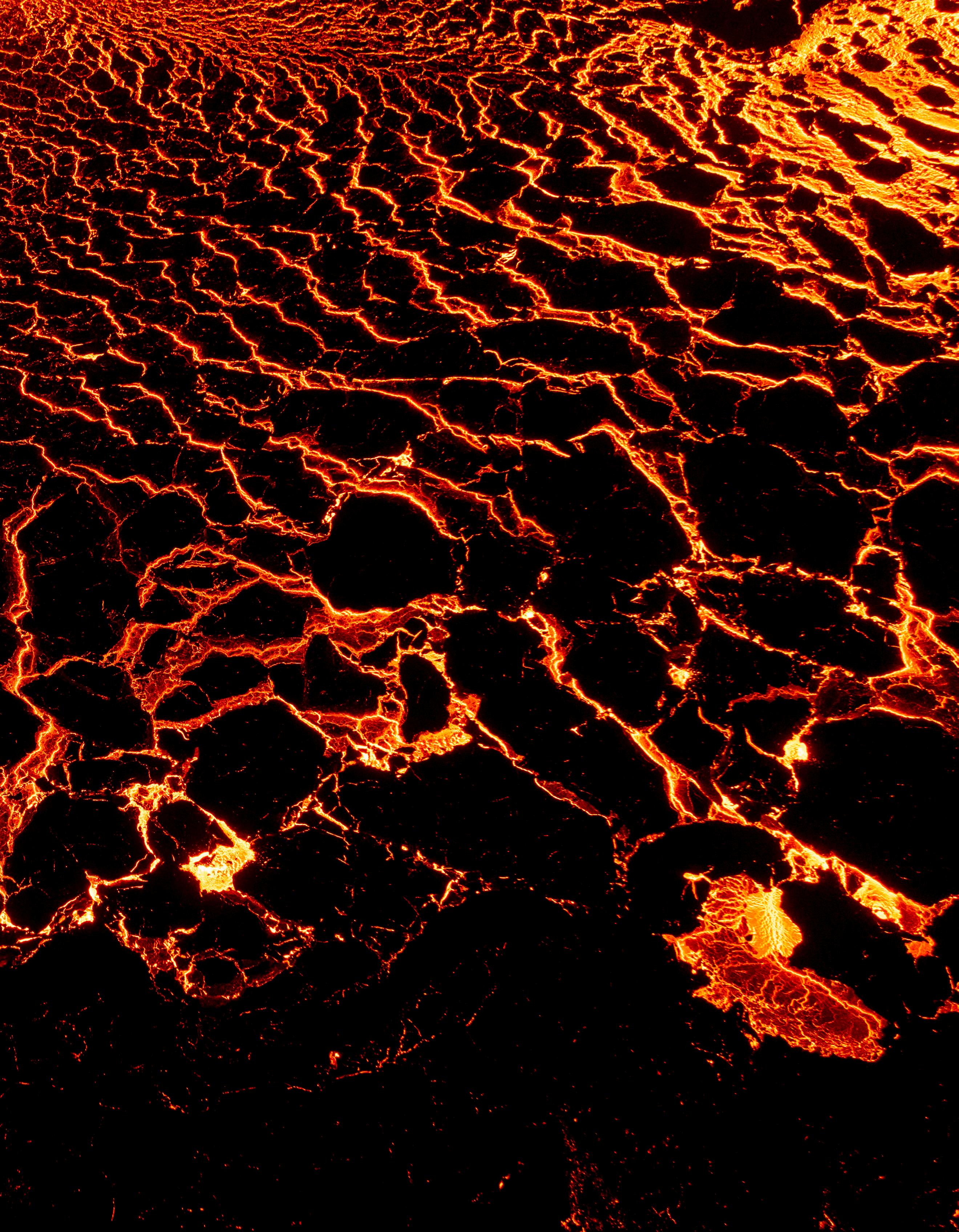
“YOU NEED A HUNDRED EYES. SINCE I’VE BEEN HERE, WE HAVE BEEN JUMPING FROM EYJAFJALLAJÖKULL TO ASKJA TO GRÍMSVÖTN TO REYKJANES TO HEKLA TO KATLA. IT IS JUST CONTINUOUS.”
in the country when I started out in the 1970s. My first job was to expand that network.” Together with colleagues at the university, Páll built and installed a network of about 50 seismographs. These large and heavy instruments recorded seismic activity onto paper rolls, which were collected by local non-scientists and posted back to the university every week.
Over five decades, Professor Páll has participated in several revolutions that have advanced our understanding of the Earth’s processes. As an undergraduate, he assisted an American scientist who brought the first geodimeter to Iceland. The optical device, now obsolete, replaced the centuries-old method of measurement using tape measures and angles, enabling the accurate measurement of the Earth’s crustal movements and determining that Iceland’s plates diverge by about 19mm annually. The seismicity arising from this spreading is now considered background noise. “All these measurements started to fit together into a general theory. And that came about in the early seventies. Most of my fellow students at Columbia were working on the seismicity of different patches of the Earth, and my part was Iceland. I was trying to fit Iceland into the puzzle.”

EXCEPTIONAL ISLAND
The theory, now universally accepted, is the basis for understanding volcanoes and earthquakes. It proposes that the earth’s surface is composed of continental plates floating on the mantle. These plates have been pulling apart and colliding for billions of years. Their motion is driven by the slow convection of the upper mantle. The constant movement means that the plates’ boundaries are dynamic. In subduction zones such as on the west coast of the US, where plates collide, one is forced beneath the other. Here we commonly find earthquake zones. Conversely, at spreading centres, the plates are pulled apart to create a gap in the crust. When enough magma squeezes through this gap to the surface, we get a volcano. This spreading generally happens on the seafloor. But Iceland, sitting smack bang on the divergent boundary of the North American and Eurasian Plates, is an exception.
 The lava erupting on the Reykjanes peninsula may be ancient, recycled seabed subducted beneath the crust, perhaps billions of years ago.
The lava erupting on the Reykjanes peninsula may be ancient, recycled seabed subducted beneath the crust, perhaps billions of years ago.
90 | ICELAND REVIEW
Another feature marks Iceland out as a special case. For most of its length, the mid-Atlantic plate boundary takes a sort of zigzagging, staircase-like path. As a rule, the horizontal, east-west sections (the flat parts of the staircase) are associated with earthquakes and the vertical, north-south sections with volcanoes. The southern half of Iceland’s plate boundary, including the Reykjanes peninsula, is, however, somewhere in between, at an awkward diagonal angle. Classified as an oblique transform fault, the boundary here is subject to greater, hyperbolic forces capable of creating exceptionally deep faults in the crust. Most volcanoes are fed from magma chambers at shallower depths in the crust, but chemical analysis of the lava from the recent eruptions on Reykjanes has shown that these vents were tapping into magma 20 km [12.4 mi] beneath the surface, where the mantle and crust meet. This affects the composition of lava and gases emitted by the eruption.
Analysis by Dr. Olgeir Sigmarsson and his team at the University of Iceland detected a large volume of halogen gases like chlorine and fluoride degassing from the lava following the eruption. These elements are released when salt is heated and suggest that the lava erupting on the peninsula may be ancient, recycled seabed subducted beneath the crust, perhaps billions of years ago. “These gases bring all the nasty stuff to the surface, chemicals like arsenic, cadmium, thorium, and other rare-earth elements. This is most likely part of what happened during the scatter fires at Laki.” Olgeir is referring to the Laki eruption of 1783, an enormous volcanic

event that caused a famine on the island and darkened the skies of Europe, North Africa, and parts of Asia, disrupting the global weather system.
THE NEW ERUPTIONS
Speaking specifically of Reykjanes, the 5.7 magnitude earthquake that occurred there on February 24, 2021 was a turning point. “We looked at each other and knew there was going to be an eruption,” Sara tells me. “Based on the previous activity, we considered the most likely scenario was an effusive eruption (i.e., lava flowing from a vent), as indeed happened. Though the Reykjanes Svartsengi system, it is worth saying, reaches the tip of the peninsula, where the fissure could open under the sea.” Eruptions in shallow water, known as Surtseyan eruptions, last occurred in the Reykjanes Svartsengi system in 1216. In the days following the earthquake, this represented the worst-case scenario. “Our international airport is nearby, it would be just a matter of minutes for the ash cloud to get there, and Keflavík and Reykjavík would be downwind of an eruption at the tip of the peninsula.”
When lava, at 1,500°C, meets sea water, the reaction is explosive. With a sufficient supply of lava, the steam, ash, and gases produced can form a column of ash and gas to altitudes where it disrupts aviation and can cause tephra fallout. A similar reaction between water and lava was responsible for the disruption to air travel caused by Eyjafjallajökull in 2010. In that case, the water source was a glacier, melting like a
“THIS IS NOT ENGINEERING, WHERE YOU KNOW THE PHYSICAL LAWS YOU ARE DEALING WITH. EVEN FORECASTING WEATHER IS EASY IN COMPARISON.”
waterfall into the erupting vent below. In the Reykjanes event, by the beginning of March, deformations in the hills and valleys around Fagradalsfjall captured by InSAR analysis confirmed the imminent eruption would be on land.
VOLCANIC FORTUNE-TELLING
The most recent eruptions on the peninsula were part of the Krýsuvík volcanic system, one of six systems on the peninsula. Four of these have shown signs of unrest in recent years. The last eruptions on the peninsula, recorded as the “Reykjavík Fires,” occurred in the 12th century and belonged to a period of effusive volcanic activity that lasted over 200 years. The Krýsuvík system stretches to the outskirts of Reykjavík, raising the billion-dollar question: Are we entering a prolonged period of activity and could the Reykjavík area itself witness renewed volcanic activity?

When I put the question to Olgeir he tells me I’ll need to visit the oracle at Delphi. “This is not engineering, where you know the physical laws you are dealing with. Even forecasting weather is easy in comparison. We can’t see the mantle. The only information we get is when the magma comes up. Of course, we would like to be able to make predictions. The only thing we can do is base our thinking on what we know from history. In that sense, our
prediction is based on what’s happened before. Is that the best way to predict the future? Maybe, maybe not. You wouldn’t predict someone’s behaviour in their forties based on how they acted at twenty years old. With some kinds of volcanoes, we can measure parameters that are indicative, and these we can predict quite well. For most, we cannot.” I’m learning that every opinion that could in any way be construed as a prediction comes with a caveat. Volcanoes are unpredictable, predictably so.
Less needful of supernatural divination, the ability to forecast volcanic ash clouds will help authorities in Iceland and abroad mitigate the consequences of largescale explosive eruptions. At the IMO, Sara shows me a live video feed of the Askja volcano. The screen is overlaid with a vertical and horizontal axis. There’s no ash plume today, but there is a lonely cloud wandering across the screen. By scrolling the horizontal line to the top of the cloud, a counter tells us the cloud is at an altitude of 2.6km [1.6mi]. Knowing an ash plume’s height enables the IMO’s simulation software to forecast the transport of the ash clouds in the atmosphere and calculate how much ash will fall in any given area.
In addition to disrupting aviation, ash can be highly disruptive to modern infrastructure. The Gosvá paper that modelled a repeat of the Öræfajökull eruption of 1326 found that up to 115km [71mi] of power lines would be at
We can’t see the mantle. The only information we get is when the magma comes up.”
92 | ICELAND REVIEW

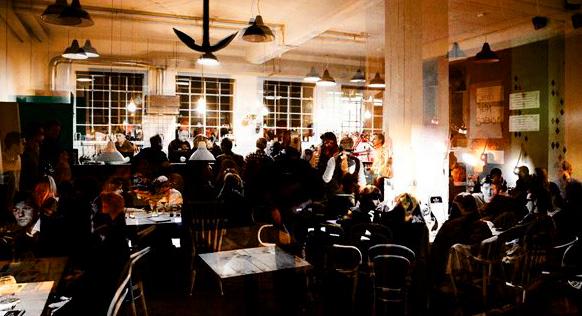
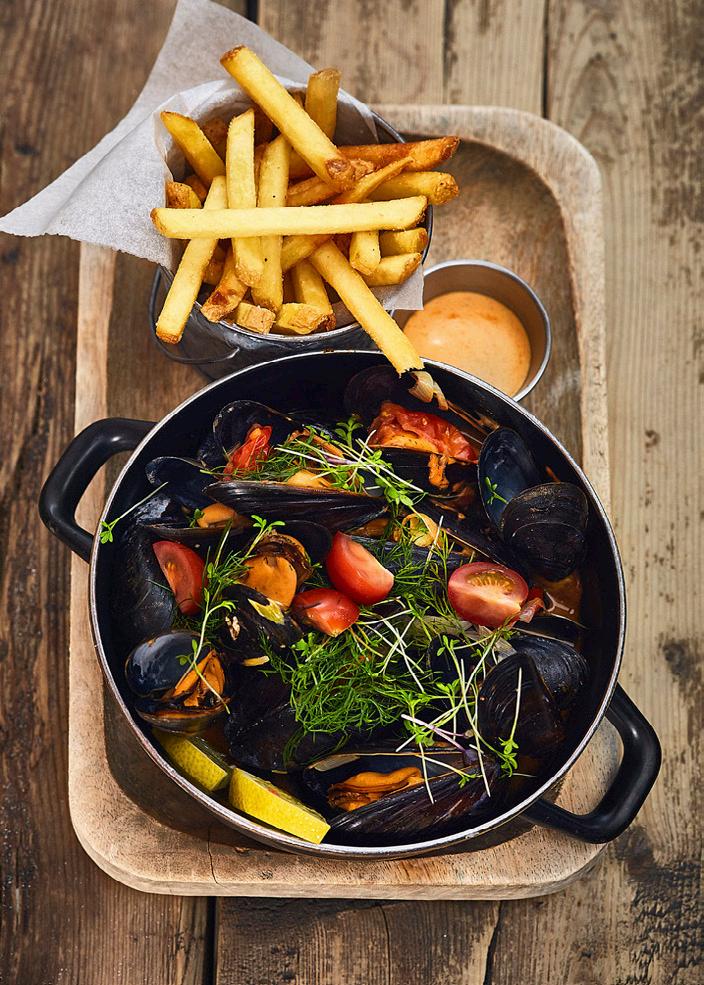


94 | ICELAND REVIEW HotelMarina ICELANDIC RESTAURANT & BAR Table Reservations: +354 517 1800 - forrettabarinn.is Tasty local cuisine by the old harbour Nýlendugata 14, 101 Reykjavik
risk from a phenomenon known as flashover, where the conductivity of the fallen ash causes power cables to short circuit. Transport would also be affected, with roads from Kirkjubæjarklaustur, Southeast Iceland to Seyðisfjörður, East Iceland having a 75-100% chance of receiving more than 3mm of ash, at which point visibility drops to almost zero and roads become impassable.
PREPARATION NATION
As I talk with Sara, I’m reminded of how, in every disaster movie I’ve ever seen, the volcanologist’s or scientist’s warnings are ignored. (“You’re crazy. We can’t close the beaches cause some drunk kids saw a shark!”) I ask Sara if she relates to the archetype. “No, no, no, I think most of the time we have a strong connection with stakeholders. Of course, any kind of mitigation action takes time. It’s something that needs to be planned and worked out. And that’s why we talk about long-term hazard assessment because it is, in a way, the first step to improving preparedness for events that might happen in the future.
“Of course, we also plan how to react to different events, and we try to get more and more organised.” The last caveat goes to Olgeir: “Iceland is a fishing nation, a hunting nation. We don’t predict too much. We are not an agricultural nation; you don’t plant your seeds in the spring
and anticipate you will have a harvest in the fall. Here you just go hunting. And if not today, then tomorrow. You have to face up to it. You have to get your bread.”
The eruptions on the peninsula led to a period of intense activity among Iceland’s small community of earth scientists, at the University of Iceland, and at the IMO. Many were pulled from their own research projects into an all-hands-on-deck effort that has led to two papers being published in the prestigious scientific journal Nature, an extraordinary achievement that reflects an exhaustive collective effort. Among the scientists I met, I felt a palpable sense of urgency as they talked about their research. It may be because, as I heard over and again, there is so much we don’t know about volcanoes and the processes that power them. It is something of a paradox that the science studying the processes that gave birth to the earth is itself such a young and exciting field, with so much left to discover. The key paper proposing the notion of plate tectonics, the foundation of the Earth sciences, was not published until 1965. Sara, Páll, Olgeir, and their colleagues at IMO and the university are adding to an incomplete understanding that contributes to the realworld need for quick answers. Hopefully, the consequences of the next eruption can be mitigated, the one thing we can be certain will happen.

ISSUE 05 – 2022 | 95
InSAR (Interferometric Synthetic Aperture Radar) is a powerful tool used for tracking magma intrusions by measuring how the surface of the ground deforms during episodes of volcanic unrest. The images are created by satellites orbiting over 500 km [310mi] above Earth. An image is taken of the target area, and then at a later point in time (hours, days, or even months later), the satellite captures the same terrain from precisely the same distance and position. By calculating the phase difference between the two images, a deformation map known as an interferogram is produced. The image, a psychedelic tie-dye-like map, visualises any changes in the topography between the two images. The
areas with the most coloured fringes correspond to the areas of terrain with the greatest movement. The images, accurate to a few millimetres, allow scientists to measure the inflation of potentially dangerous volcanoes and can also track the movement of dike intrusions (magma injections) by measuring deformation in the terrain above. Before an eruption, rising magma creates a telltale butterfly pattern that indicates the likely location of an impending eruption. For more information, check out icelandvolcanoes.is, where you will find the latest updates and information as well as the Gosvá reports.
This is a COSMO-SkyMed interferogram spanning from July 27, 2022 to August 4, 2022. Each coloured fringe represents 1.55cm of deformation in the satellite’s line of sight. The modelled dike location (prior to the August 2022 eruption) is displayed as the black line and the location of the eruption that commenced on August 3, 2022 as the red star. The larger lobe to the northwest of the dike shows about 25cm of deformation in the satellite’s line of sight. This butterfly pattern displayed here, showing an elongated subsidence signal and 2 lobes extending outwards perpendicular from this, is typical of a dike intrusion. The interferogram was processed by Dr. Michelle Parks (Icelandic Meteorological Office) using data acquired by COSMO-SkyMed satellites (Italian Space Agency, 2022) provided through the Iceland Volcanoes Supersite.

96 | ICELAND REVIEW
VOLCANO & EARTHQUAKE EXHIBITION
A world class exhibition on volcanoes and earthquakes surrounded by active volcanoes
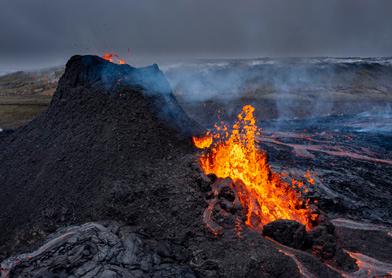

The Lava Centre is situated at Hvolsvöllur on the South Coast of Iceland, surrounded by active volcanoes. It truly acts as the gateway to Iceland’s most active volcanic area.
The Lava Centre just received two Red Dot Awards, which cement its position as a world class exhibition.
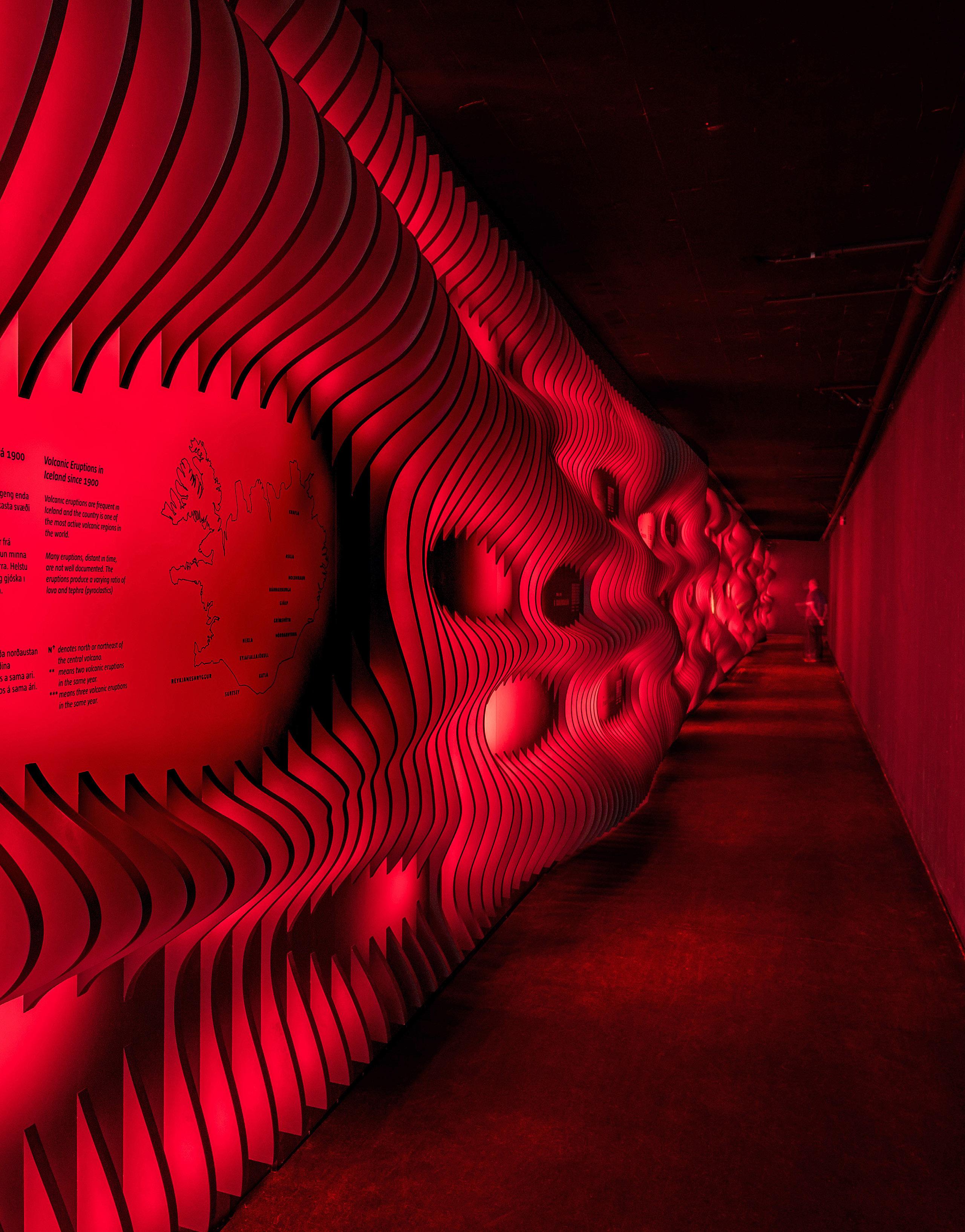
LAVA Centre is the best place to learn about the new Fagradalsfjall eruption, with new exhibits explaining the eruption and new film footage in the volcano cinema.
Hvolsvöllur
MORE INFO AND TICKETS AT www.lavacentre.is Open every day 9:00 - 16:00 Iceland Volcano & Earthquake Centre Austurvegur 14,
· South Iceland
ROUNDUP
At just before 6:00 AM on a Sunday morning, I drove north to the Svarfaðardalur valley – to attend a roundup.

This roundup had nothing to do with a certain carcinogenic pesticide, nor did it involve the hasty collection of suspects during a police raid. The word roundup, when translated from Icelandic, implies the gathering of sheep, who, having roamed free summer-long on the heath, have their souls “whisked away into eternity” in early fall (via the slaughterhouse).
During and especially after the roundups, it is customary to get very drunk.
Words by Ragnar Tómas Hallgrímsson Photography by Golli
GATHERING
98 | ICELAND REVIEW

ISSUE 05 – 2022 | 99
“Tomorrow, as well …”
I descended into the valley below a dark mattress of clouds at around 1:00 PM: stepping out of the car, I looked on as 30 locals – some of whom had been drinking intermittently since Friday – harmonised in a circle within the Tunguréttir fold:
“Utterly wasted, We’ll be tonight …
And probably, Tomorrow, as well,”
As the few remaining sheep bleated in the outer compartments of the fold, I paid special attention to a man wearing the most stylistically inharmonious ensemble that his wardrobe could offer: a brown sheepskin hat, a leather jacket, tall boots, riding pants, and a drinking horn as an accessory. Finally, he had added the most finishing of finishing touches: a can of pesticide, functioning as a makeshift drinking vessel slung around his body.
He had big, rough hands but a voice of padded silk. He seemed admirably drunk.
As the people sang, I walked over to a man standing in the corner of the fold – who vaguely resembled an old-school pimp in riding gear.
His name was Sigurhjörtur, and he responded to my request for an interview by offering me a sip of whatever
unholy swill he had stored away in his old, plastic bottle of Smirnoff. I partook as a matter of journalistic principle.
Risking my person for the sake of my profession, I drank and listened as Sigurhjörtur gestured abstractly towards the branches of his family tree, before rather earnestly opening up about his brother’s untimely death, some ten years ago, during the annual roundup.
“Not even the chopper could save him,” Hjörtur recalled, and I was deeply moved.
Casually backing away – for he kept offering me more swigs – I came across a horse, along with its owner, who, two decades ago had moved to the capital area to found a bakery, but always returned to take part in the roundup. This was something of a running theme among former valley residents: no matter their business or domicile, they always came back at this time of year.
Despite the ongoing and salient drunkenness, this baker observed how relatively tame an affair the roundup had become. “Back in the day,” he recalled, a much higher percentage of the participants were in a questionable state of mind – and there was more singing.
Hoping to document some foreign indignation at the local bacchanalia, I spoke briefly to two Scandinavians standing beside a nearby fence, overlooking the river. They were students in Akureyri and had been persuaded to come witness the roundup first-hand by a professor. Quite

100 | ICELAND REVIEW
“Many years ago, when scrapie hit the valley hard and we had to slaughter all the animals – there were no sheep in the valley for two years – we still attended the roundup and sang and did shots.”
misunderstanding the nature of my assignment, they began lauding the beauty of Icelandic nature. I took my leave: I had no interest in such things.
I was here expressly for sheep-related debauchery.
That old diesel engine
The coffee shed adjacent to the Tungurétt fold is a low, white building with touches of green, comprising a small assembly hall and an even smaller kitchen, powered by an old diesel engine – whose motive force is, however, not diverted into any kind of interior lighting.
Every year during the roundup, the women’s association Tilraun (Experiment) takes over the shed to sell coffee and pastries so as to finance their various charitable activities. Tilraun was established in 1915 and counts 45 ageing members (there were 60 members at its zenith); finding new recruits has proven difficult.
As all the seats inside the coffee shed were occupied, a small and disorderly line spilled out of the entrance. On the outside wall of the building, next to the queue, there hung a sign:
“The annual roundup ball will be held in Höfði community centre tonight, September 11. The ball will begin at 9:00 PM and conclude at 1:00 AM.
Landabandið [the Moonshine Band] will perform.
Price of admission: 2,500 kr. No debit or credit cards accepted. See you in roundup good cheer! Regards, Höfði Patrons.”
Excusing my way through the queue, I entered the dim assembly hall and briefly admired the cheerful assemblage of people who had gathered there underneath the low roof, stuffing their faces with pastries and confections, occasionally breaking into song. I popped into the kitchen to have a word with Hildigunnur, the Chair of Tilraun, who seemed to agree with the baker’s assessment that the roundup had become less obviously raucous through the years:
“Someone acting out is an exception. There are fewer badly drunk individuals.”
Surveying the tableau before me, I had to agree. These carousers seemed to be masters at their craft.
Hjörleifur
Writer, teacher, and artist Hjörleifur Hjartarson greeted us outside the shed and summed up the proceedings on the heath. Apparently, this year’s herding of sheep on the mountains took place under some of the most inauspicious conditions in recent memory.
“There was so much fog, you could barely see a few metres ahead of you,” Hjörleifur explained. “You’d bump into a sheep but then it would vanish into the mist again. I kept ho’ing at

ISSUE 05 – 2022 | 101
stones and boulders,” he recalled, estimating that he and his colleagues had left over 60 sheep on the mountains – which would have to be herded next weekend.
“The second weekend is different,” he continued. “We don’t round up the sheep into the fold, we just drive them down – and we’re even more drunk. We’re screaming drunk all the way down the valley. We bring jeeps to carry those who’ve fallen off their horses,” he explained.
“Would you agree that the drinking has become more moderate over the years?”
“No, no, not all,” he protested. “We try to stay the course. Being drunk, that’s essential.”
“And you own seven and a half sheep?” I inquired, having overheard him say something to that effect a few minutes ago. “Yes, I make sure to keep a few,” he laughed. “If only for the sake of honest participation.”
As our conversation drew to a close, Hjörleifur informed my colleague and me that everyone was headed to the farmstead Steindyr, whose owners always served generous portions of food and drink – alongside a roasted calf.

“Help yourselves to anything you’d like; make yourselves at home,” he added, epitomising the hospitality and generosity with which all of the Svarfaðardalur residents – or Svarfdælingar – appear to have been imbued.
Or maybe it was just the drink.
Steindyr
The residential building on the farmstead Steindyr is an oddly
modern affair: a single floor with a roomy kitchen that opens onto a large living room (I almost mistook the place for a bed and breakfast), accommodating a chaise-end sofa, occupied by an old man watching a rerun of the annual New Year’s comedy special from the eighties.
As the sheepherders arrived on horseback, a table was laden with the staples of traditional food: lamb, green peas, red cabbage, gravy. The man of the house, a Mr. Herbertsson, was teetering deliriously between benches and tables offering everyone bites from a leg of smoked goat – which he had impaled with a large knife.
His wife Gulla, wearing a wool sweater and a dress patterned with sheep, approached my colleague and me, concerned that the former was not eating. After some courteous protestation from my friend, Gulla returned with a platter of drinks, and again – I partook as a matter of principle.
As I drank, the valley people broke into Iceland’s national anthem.
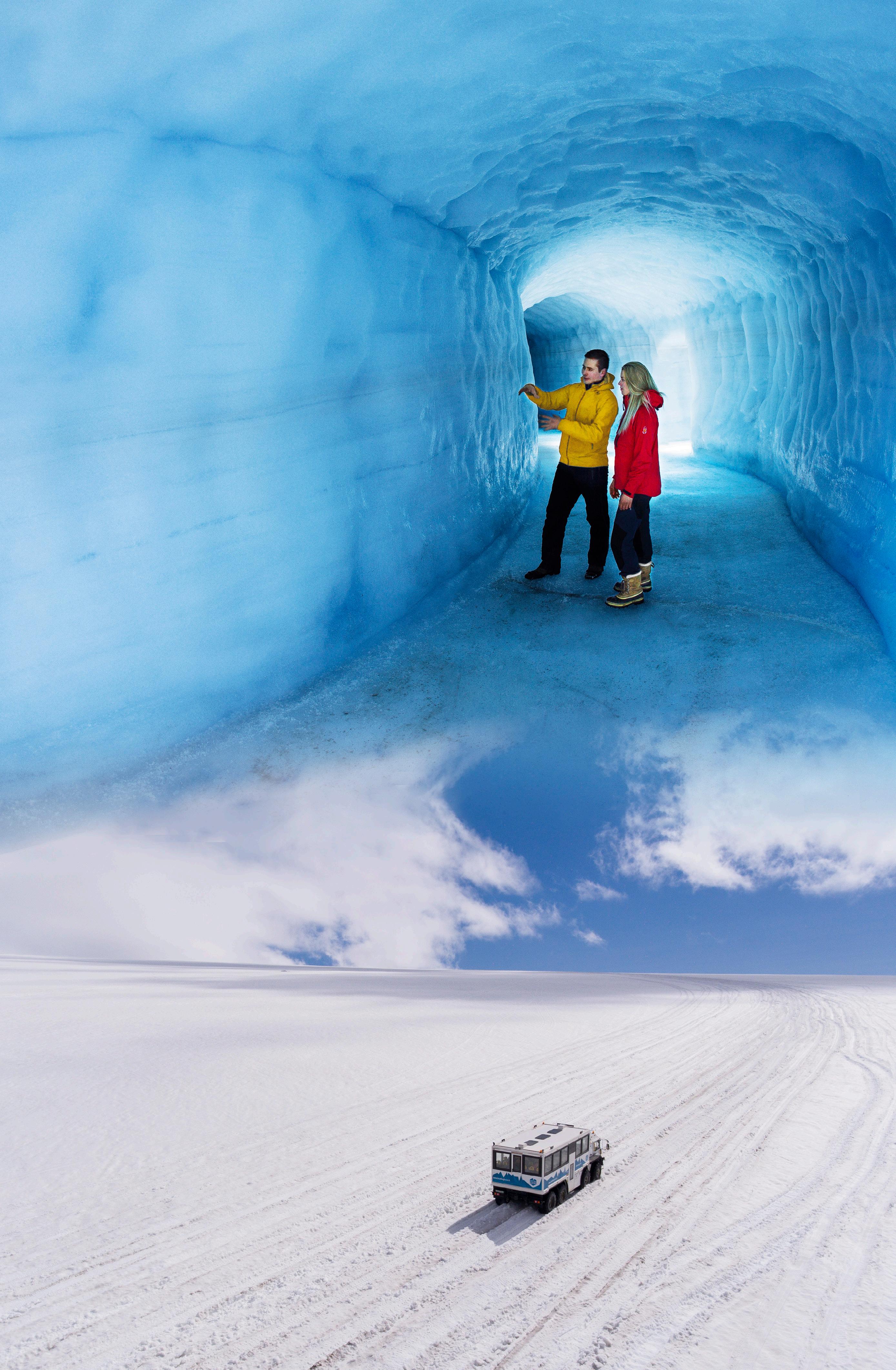
Ó guð vors land!
Ó lands vors guð Vér lofum þitt heilaga Heilaga nafn.
At the end of one of the tables sat a sallow old man with a bald head, who was singing along with what everyone agreed was a uniquely beautiful voice. I learned that this was, in all likelihood, the old man’s final roundup; he had shown up the year before as
102 | ICELAND REVIEW


Find us: #intotheglacier www.intotheglacier.is Daily departures from Húsafell and Reykjavík Experience the amazing Langjökull glacier tunnels Experience the amazing glacier tunnels
“We had a lot of fistfights back in the day, but now it’s like, ‘Don’t be an asshole.’”
if for the last time, but now, surely, his cancer would get the better of him. He seemed to savour every moment.
I spent a couple hours at Steindyr, eating, drinking, and smoking a single cigarillo, before wandering over to my colleague’s car, parked in front of the barn. I watched from the passenger seat as one of the sheepherders peed against the side of the house. A dog, having finagled a piece of meat from the banquet table, ran up to the public urinator, and the latter, pleased with the dog’s cleverness, laughed maniacally but shooed him away.
Þverá
At the farmstead Þverá, a bowl of meat soup was most kindly driven into my chest, and I brought it along to the livingroom table, where four women had taken their seats. Among the party were Ása and Steinborg, who were slightly less noticeably drunk than many of their male counterparts. It was a welcome lull from the exaggerated good cheer.
We discussed the 1980 film Land og Synir, one of the first Icelandic feature films – which is widely believed to have initiated the so-called “spring of Icelandic filmmaking.” It was shot right here in the valley, and Ása and Steinborg still have fond memories of the hullabaloo that accompanied its filming.
Land og Synir is based on a novel set during Iceland’s transition from a rural society to an urban one and relates the story of a farmer’s son who relocates to the city during the depression. I am the descendant of all those citybound farmers’ sons, with my roots buried somewhere
near Svarfaðardalur, according to an uncle who dabbles in genealogy.
Svarfaðardalur is currently undergoing a similar transition, with animal husbandry no longer a necessary nor profitable endeavour. But even with the dwindling number of farms and animals, the women observe that they’ve “managed to keep the area largely inhabited.” Life finds a way. For the time being.

Many of the people work in Dalvík, the nearest town, but live in Svarfaðardalur, and then there’s the ongoing mountain skiing craze, which attracts people to the valley in droves during winter. Acquiescing to another shot of alcohol, I inquired if the annual roundup, and the roundup ball, had changed.
“No,” a young bespectacled woman seated at the table explained. “There are fewer sheep and more people, but it’s like our national festival. Many years ago, when scrapie hit the valley hard and we had to slaughter all the animals – there were no sheep in the valley for two years – we still attended the roundup and sang and did shots.”
They laughed.
“The few sheep that happened to wander down from the highlands were tossed straight into the slaughter wagon,” someone added.
Given the tight-knit nature of the community, I wondered if the pandemic hadn’t proven an especially difficult time.
“Yes… But we were, of course, hosting smaller parties at the farmsteads,” Steinborg clarified, referencing an especially memorable shindig at Steindyr. The fourth woman
104 | ICELAND REVIEW


ISSUE 05 – 2022 | 105
at the table had been dancing in the barn when her kneecap unceremoniously jumped to some other region of her leg. When the ambulance arrived, everyone hid inside, because of the social restrictions.
“And you intend on dancing off your other kneecap tonight, I suppose?”
“Definitely.”
“Oh, and there’s no roundup ball without Höfði,” Steinborg added, “a building so tiny that whenever one person enters through the front – another one’s squeezed out the back.”
In the kitchen, the people broke out into song again. Outside, it seemed chilly and cloudy and there was fog creeping down the mountains.
Höfði
Deep in the Svarfaðardalur valley sits a small white building with burgundy windows and a blue, corrugated roof, which, it seems, a pair of workers had begun to paint white, starting on either side – prior to calling it quits long before meeting in the middle.

Stepping onto the parquet floor of the snug assembly hall, I counted nine wooden beams running across the inside of the gable roof and a single smoke detector on the ceiling. The walls were lined with bolstered church pews, and it seemed unlikely that the building could accommodate all the people whom I had met that day.
The frontman of the Moonshine Band – flanked by a
drummer and bass player to his right and a guitarist to his left – was standing on stage. He said “Hello” in a voice filled with eagerness and expectation. It was like a scene from some old Icelandic movie.
I took about six steps across the room before I was exiting Höfði through the back, bumping into Anna, who had just arrived from the farmstead Klaufabrekknakot (“Clumsy Hill Cottage,” she said by way of translation) –and whose family had long overseen the roundup ball. As commentary on Höfði’s tininess, Anna – who has short brown hair, glasses, and a great big smile – recalled the time when someone from Akureyri made the mistake of advertising the ball, which resulted, however indirectly, in two people plummeting from the roof. There’s a reason they host the ball on Sundays.
“The roundup ball helps finance necessary renovations,” Anna remarked. “When I was little, my parents always worked the balls, and my brother and I would come out on Mondays to clean up. We’d compete to see who could find underwear in the yard.”
One of the reasons why the roundup, and its subsequent ball, have become less raucous over the years has to do with the good sense of her parents.
“We had a lot of fistfights back in the day, but now it’s like, ‘Don’t be an asshole.’ My parents threatened to stop organising the event if people couldn’t behave. Ever since, the people have mostly been on their best behaviour.”
106 | ICELAND REVIEW
“Being drunk, that’s essential.”
Höfði’s kitchen is situated behind the ticket booth. Enjoying a cup of coffee before the ball began, I sat and listened to Anna, the fire marshall, the bouncer, and the singer reminisce about old times. They recalled the year that the men’s toilet broke – the year that “someone who hadn’t voided his bowels for the entire weekend,” chose this spot to do it.
“The plungers were powerless,” Anna recalled. “The hands of the staff had grown crippled working the plungers, so they approached Hlini – the man from the fold in the wonderful offbeat ensemble– who rolled up his sleeves, and plunged his arm into the toilet, loosening any unwieldy materials with his bare hands. Then he headed straight back to the dance floor: ‘For the love of God, no one shake Hlini’s hand!’” Anna remarked. (Hlini would later clarify that he had worn a plastic bag around his arm.)
The ball
At just past 9:00 PM, the first bus pulled up in front of Höfði, followed by a dozen or so vehicles. And then more vehicles, and another bus, the last of which was carrying a pair of tourists, who had been swept up with the crowd boarding the bus at the nearest gas station. The Moonshine Band took the stage at around 9:20 PM, and over the next hour or so, the dance floor grew gradually more crowded, although never exactly cramped. I was initially disappointed by how relatively domesticated the whole
thing turned out to be – the drinking and the manufactured wildness paled in comparison to the warmth and openness of a community whose noses were rarely angled downwards at their phones.

I watched a 65-year-old widow with short grey hair and long dangling arms – like a stout Theresa May – tear off her wool sweater and begin engaging in a soulful two-step. She wore bright blue sneakers and black jeans, and before long, she and her friend were spinning each other in wild circles. When she regained her equilibrium, she continued to dance and glanced over in my direction, noticing that me and my colleague were leaning awkwardly against the wall. She walked over in protest:
“How the hell have you two been standing here all this time without dancing!?”
It was exactly the kind of sentiment that summed up the charm of the Svarfdælingar. They make you feel included.
The band performed SS Sól’s Rigning – and chased it with Ja Ja Ding Dong.
The crowd went wild.
ISSUE 05 – 2022 | 107









 WORDS BY ERIK POMRENKE
PHOTOGRAPHY BY GOLLI
WORDS BY ERIK POMRENKE
PHOTOGRAPHY BY GOLLI
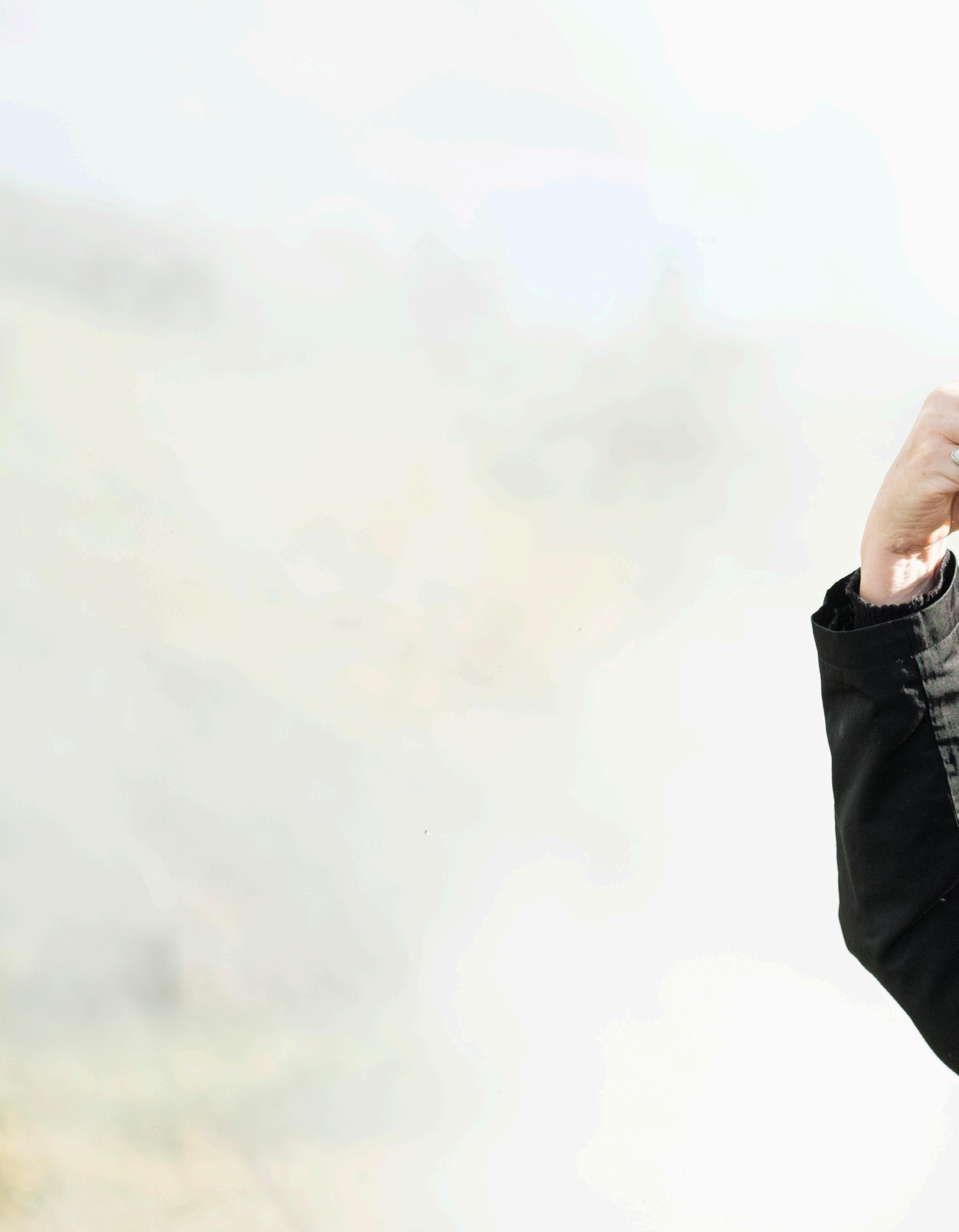
AGAIN I DANCE WILL

THE HOUSE IN HVERAGERÐI
Elísabet is already waiting for me as I pull into the parking space of her row house in Hveragerði.
As I enter her new home, I offer to take off my shoes. But Elísabet instead ushers me to her kitchen table and shows me her most recent acrylic paintings in lieu of an introduction. In colourful abstraction, they deal with isolation. Large blocks of colour stand fenced apart in tessellated rows, not unlike the development of row houses she now calls home.
Elísabet has recently moved here from Vesturbær, Reykjavík’s west side. The house she left there she had called home for some thirty years, or as she cosmically describes it, for one orbit of Saturn. She bought that house with the profits from one of her first ever works, Dans í lokuðu herbergi, a collection of poetry dealing with childhood, mythology, and, of course, dancing. This was also when she started her own publishing house, Viti menn, where she published most of her work. Having sold her first 500 books, she was able to get together a down payment. “I was always writing more and more so I could pay off my house,” she tells me.
The house in Vesturbær, with all of its memories, provides as succinct as any curriculum vitae of Elísabet’s life. As she puts it, “everything happened there. I wrote all my books, raised my children, I went insane, I got sober, I ran for president, and so on and on.” But Elísabet had to sell the house in Vesturbær in 2020 in favour of this one-story house in Hveragerði. For the past several years, her health has been declining, and she needs a living space better suited to her needs.
As she sits down on the sofa, she asks, “so, you’re here to talk about my kidneys?”
ON KIDNEYS AND OTHER MATTERS
Like so many other writers, Elísabet has lived with mental health problems for much of her life. Since she was diagnosed with Bipolar I, she has taken lithium, one of the most common, and safe, mood stabilisers.
Prior to her lithium treatment, Elísabet struggled to maintain balance in her life. Her first son was taken away from her by the state, but when she became pregnant again at 26, she began to take treatment much more seriously. When she started attending therapy for bipolar disorder and taking lithium between 1999 and 2000, she noticed a change. “Before,” she says, “everything in my career was a mess. You see it in my books, how I started publishing a book every year. It was like a superpower.” Among the many works to emerge from this period are Vængjahurðin [The Winged Door], a collection of love poems, and Íslands þúsund tár [Iceland’s Thousand Tears], a drama written for the student theatre. Laufey also originates from this period. The titular character, Laufey, lives in the slums of Reykjavík, trying to care for her younger sister, who dies. It is also a love story, albeit one in which the beloved is also a rapist. These themes of love and abuse, care and neglect run through many of Elísabet’s works, and their narrative prevalence suggests a knowledge of these sides of life gained through experience.
However, in 2017, something began to change for Elísabet. She grew thirsty – incredibly thirsty – at night. Sometimes she
simply couldn’t drink enough to slake her thirst and would wake up in the middle of the night to drink litres of juice and water. She was also tired, often needing to sleep 12 or more hours a day. Clearly, something was wrong.
Long-term exposure to lithium can cause damage to the kidneys and thyroid, and it is common practice in the medical field to perform blood tests regularly during lithium treatments. None of this was done for Elísabet, and she was never warned of the potential complications of lithium.

“I THOUGHT I WAS MOTHER MARY, I THOUGHT I COULD SAVE THE WORLD. IT WAS TERRIBLE.”
112 | ICELAND REVIEW
In fact, when she initially brought some of her symptoms before a doctor, she had even been told that the fatigue and thirst were in her head, a part of her bipolar disorder. Now, several years after the malpractice came to light, Elísabet’s kidneys function at 15%.
“I was very angry with the doctors. Of course, I hated them,” she says. “But I was so powerless, I didn’t have any tools. I was told I couldn’t do anything. The lawyers couldn’t do anything. I was shocked – everything crashed. I was hopeless,
disappointed, angry. I thought I would die.”
Recently, however, things have begun to turn around for Elísabet. She has been placed on a waitlist in both Sweden and Iceland for a kidney, and she relishes the notion of having a Swedish aristocrat’s organ. Whether she knows the class of her future donor, or whether all Swedes are fatcats to her, I do not ask.
Previously an outsider to the academic-professional literary scene in Iceland, Elísabet's work has also been

ISSUE 05 – 2022 | 113
increasingly recognised in recent years. Elísabet has been awarded both the Icelandic Literary Prize, the Icelandic Literary Prize for Women, and her most recent novel, Aprílsólarkuldi [Cold April Sun] was a well-received bestseller.
She has also recently found a lawyer who has helped her open a lawsuit for malpractice against the state. Elísabet, with the help of her new lawyer, has already won some money. But the battle isn’t over, and it’s unclear when exactly she can expect her life-saving donation.
SICKNESS AND HEALTH
As one of the last true bohemians of Old Reykjavík, Elísabet has had quite a varied career. At various points in her life, Elísabet has worked in journalism, housekeeping, teaching, restaurants, and Kleppsspítali, the psychiatric department of Landsspítali.

Health, both mental and bodily, has played a central role in Elísabet’s life. “I was working in this clinic, but I felt so sorry for all the people,” she tells me. “I was reading the journals, and I found out that something had happened to them. Their way of thinking had changed. That was an awakening to me, how their feelings changed. How sad they were, extremely sad.”
Already when she was 21, Elísabet was animated by a deep concern for those around her. She tells me how when she worked at Kleppsspítali, she found out that the staff were served a better breakfast than the patients: “All they had was

súrmjólk. I didn’t like that. I thought that maybe if we were better to each other, we could be more sane.”
She didn’t then dare to confront the hospital staff. “Not then,” she says. “I was so young.” One of her first published articles in a newspaper was about this small injustice. “Later, I wrote an article about this. So all the doctors, they would know that I know.”
TWO SELVES
As a child, she tried to help her mother as much as possible. She would help with cooking and cleaning the house, and help to take care of her siblings Illugi and Hrafn. When she was doing everything she was supposed to, Elísabet felt like a hero. But there was another archetype she acted out as well – the bad girl, sometimes tormenting her siblings, seeking attention, causing trouble. These archetypes were not fully-fledged versions of Elísabet, and she often felt caught between them, suspended in anxiety. “There are no feelings in those roles,” she explains. “The anxiety, you hide it. There is no space for it.”
This anxiety, this gap between our two selves, has a name. For Elísabet, it is her inner critic, the nagging voice that always finds something wrong, that wonders if she’s good enough, if she writes well, if she’s beautiful enough.
Bipolar I, sometimes referred to as manic depression, is often characterised by long periods of lows interspersed with bouts of unusually elevated mood, irritability, and also
“I WROTE ALL MY BOOKS, RAISED MY CHILDREN, I WENT INSANE, I GOT SOBER, I RAN FOR PRESIDENT, AND SO ON AND ON.”
114 | ICELAND REVIEW





ISSUE 05 – 2022 | 115
Meet some of

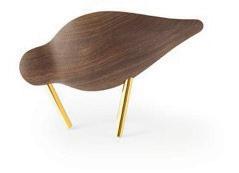
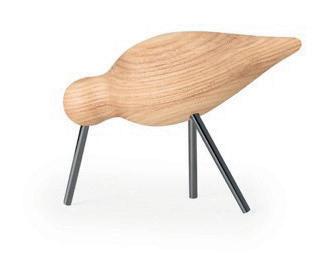

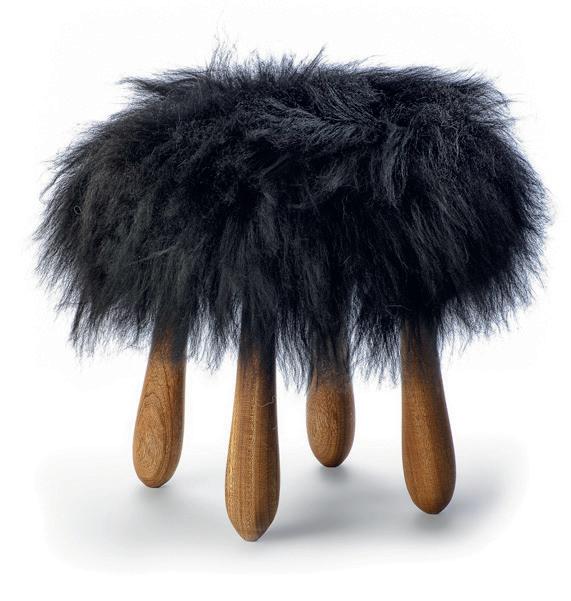
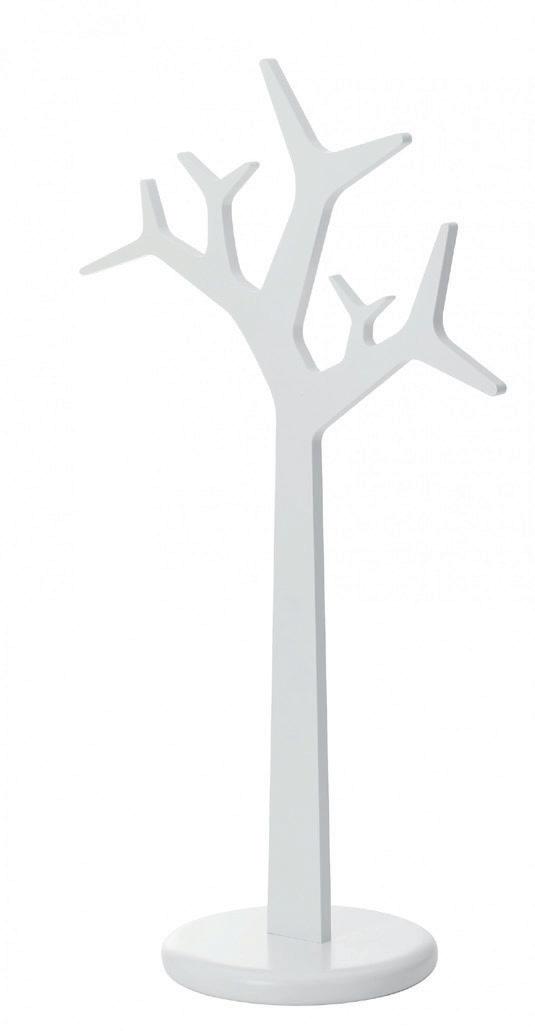
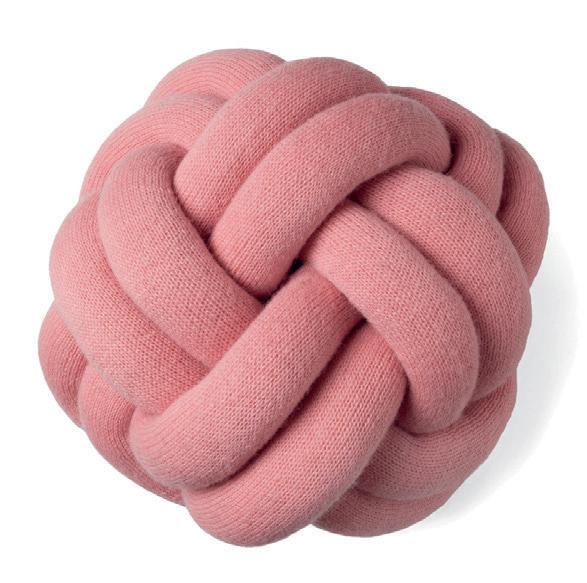

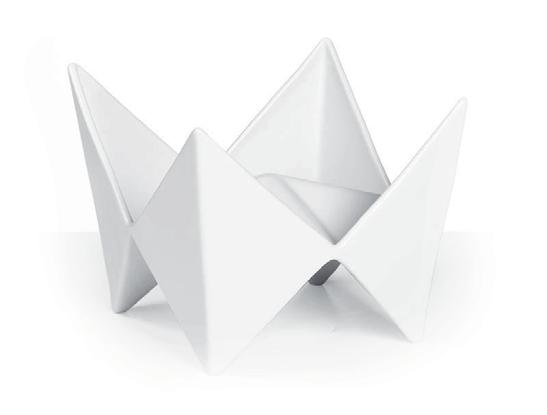
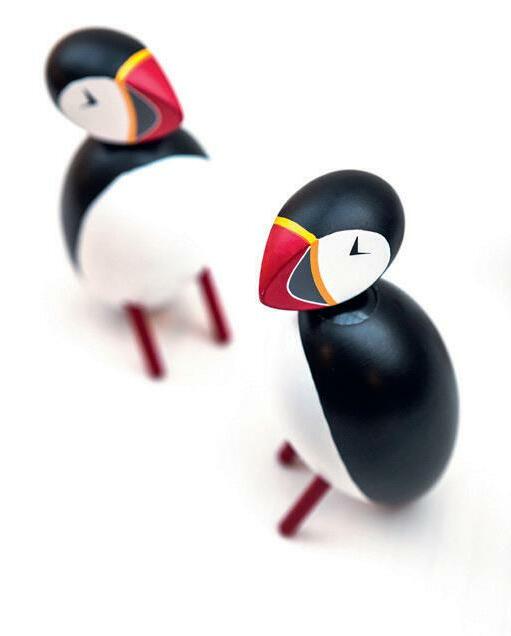
 Ep
Ep
116 | ICELAND REVIEW
Iceland’s finest designers
al Skeifan 6 / Ep al De si gn Kringlan / Ep al I cel andic De sig n Laugavegi 70 www. epal.is
productivity. Her bipolar disorder emerged only later into her 20’s, but I find it striking how even from a young age, she felt this split, not between mania and depression, but these two childhood archetypes of hero and villain.
And yet, there is a way of looking at Elísbabet’s life that brings these sides of her together, the hero, the critic, and the bad girl.
In addition to her writing, Elísabet has also been an outspoken environmental activist. She famously opposed the Kárahnjúkar hydroelectric dam, a power plant in the Vatnajökull highlands that required some 440,000 acres of wilderness to be flooded to power an aluminium smelting facility. On a domestic flight over the area of the thenproposed dam, Elísabet seized the intercom system of the plane, delivering a speech on the damages caused by this megastructure in the wilderness.


Who stood up that day to briefly hijack the intercom? Was this the bad girl, acting out for attention? The critic, always looking for the negative in the world, the ugliness, the things that don’t add up? Or was it the hero, driven to sacrifice herself to care for those around her? In a sense, it was all of these.
As Elísabet has gotten older, she has learned to live with these characters. “Now I know about them,” she tells me. “I try to tame them. Most of the time, I try to be the hero and take care of everything. But the hero never shows her feelings, so I never cry. But I’m not so tough. I’m actually very sensitive.”
KING BOREDOM
Elísabet’s health has also meant that she has had to be especially careful during COVID. I ask whether isolation has been difficult for her, and how she has managed to deal with this great personal crisis alongside the pandemic. “I’m used to working alone,” she says. “I started to call people, I was checking up with friends all the time. My phone has always been busy these last years.”
Nevertheless, there has been boredom as well. “I never get bored. I’m never boring,” she explains. “But during COVID, I was almost dying of boredom. Still, I love my boredom. I get my finest ideas then. I call him King Boredom.”
Boredom and silence are an essential part of Elísabet’s creative process. Not wanting to sound too stuffy, I suggest that this is maybe something that is changing, that social
ISSUE 05 – 2022 | 117
media and mass entertainment are taking away our ability to be bored. What do we lose when we are perpetually entertained? Elísabet muses about some of the ideas that have come to her in boredom, explaining how boring, terribly boring, it was to stand in front of audiences, reading from her books.
“Once, I set fire to my book as I read it. When I put fire to that book, that came to me out of boredom,” she says, as if it’s quite natural. “Standing there in front of everyone is so terribly boring, I came up with this idea to fight the boredom.”
Still, boredom and emptiness pose dangers for Elísabet, and she has learned to keep herself busy to ward off the darker side of things.
“I always have to take care of myself,” Elísabet says. “Because I know the mania and anxiety are always there, and they will take me if I’m not talking to people. If I’m not taking my medicine, not exercising.”
And yet, behind this lurking darkness lies a deep love of life: “I love life so much. I love the details in life so much. I love the everyday and the ordinary things and the higher meaning and everything.” She pauses, continuing: “I’m not responsible for this sickness, but I’m responsible for my cure.”
NEW AUDIENCES
Elísabet has already published nearly 30 works, and been translated into Swedish, Danish, French, Polish, which have even Armenian. She is especially proud of this last translation, and we flip through the pages of her copy together, its alphabet as obscure to both of us as hieroglyphs.

Some authors, I imagine, feel rather dizzy at the thought of being so widely read and translated. Translation always
involves some loss of control, and sometimes stories take on a life of their own, separate from the original text. Elísabet, after all, started her own publishing company to have more control over her books, and she talks fondly of going to the print shop to pick out paper, designing covers, and immersing herself not just in her literary work, but also in the materiality of it.
Elísabet, however, is giddy at the thought of being so widely read and isn’t too concerned about what her international readership may think, whether they have the “right” image of her or not. “I can’t control what image people will have of me,” she says. “I don’t know what image they have, and no one has told me yet!”
Despite everything, things are going well for Elísabet, and she feels that, except for her kidneys, she’s never been healthier.
Still, sometimes the mania and anxiety threaten to surface. She remembers one of her worst episodes: “I thought I was Mother Mary, I thought I could save the world. It was terrible. I danced naked in front of parliament.”
“Do you miss it at all, the dancing?” I ask.
“I think I will dance again when the time comes,” she says, and smiles Elísabet’s latest work, Saknaðarilmur, is being published this fall. Concerning the relationships between mothers and daughters, she calls it an exploration of bad memories, and the surprising ways in which we miss the bad as much as the good.
118 | ICELAND REVIEW

“I THINK I WILL DANCE AGAIN WHEN THE TIME COMES.”
ISSUE 05 – 2022 | 119

120 | ICELAND REVIEW
The Aliens and the Child
by Elísabet Jökulsdóttir
Once upon a time, some aliens flew to earth from an unknown star and stole a child who’d run away from home because her parents didn’t notice her. When, many lightyears later, the child was returned to earth, she was not a day older than when she’d vanished, but her parents were old and wizened by the fireplace. And when they saw the child lollygagging in the living room, they asked each other who that child was and concluded it was probably one of the bloody grandchildren.
Translated by Larisssa Kyzer
Illustrations by Elín Elísabet Einarsdóttir
ISSUE 05 – 2022 | 121
The Little Girl Who Lived on Fish Hearts
by Elísabet Jökulsdóttir
I once knew a little girl who lived on nothing but fish hearts. She had a bowl of goldfish and spent every day at home alone with her fish. Her dad and mom were always buying her more new fish because whenever they came home from work at night, she told them that this fish had died today, and those three yesterday. When they asked the girl what she’d done with the dead fish, she said she’d buried them or thrown them in the trash. So they were always buying her new fish because she was home by herself so much. But one time, when her mom was replanting all the flowers, she found a fish corpse in every last pot. After a rigorous interrogation, it came to light that the girl had killed the fish by cutting out their hearts and eating one heart a day. But when they asked her why on earth she’d do that, she didn’t know why on earth she had eaten fish hearts. And so they put her in a children’s psychiatric ward because she didn’t have a reason.
Translated by Larisssa Kyzer Illustrations by Elín Elísabet Einarsdóttir
122 | ICELAND REVIEW

ISSUE 05 – 2022 | 123
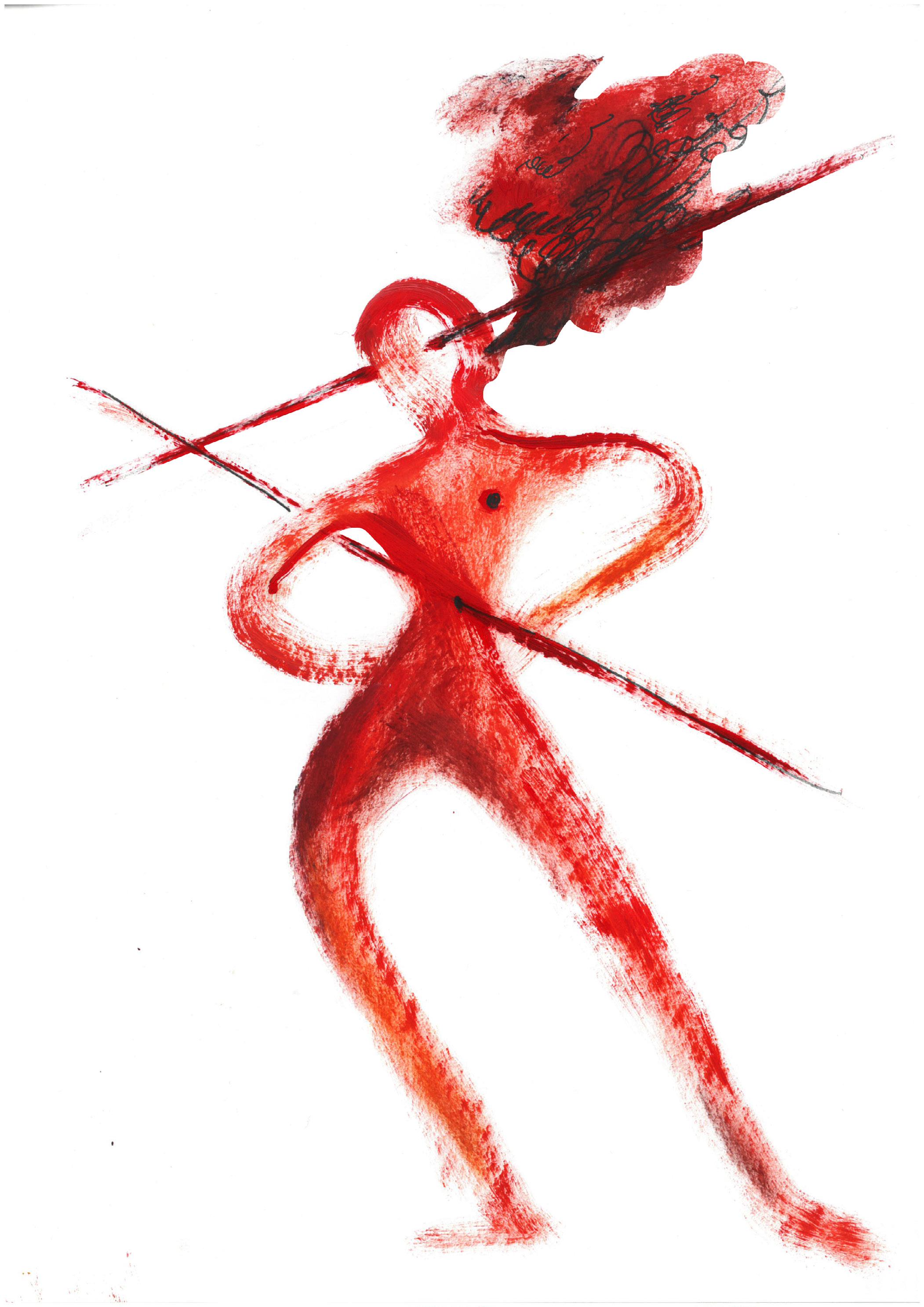
124 | ICELAND REVIEW
The Cigarette Girl
A story for Linda Vilhjálmsdóttir
by Elísabet Jökulsdóttir
This is a story about a cigarette girl. Whenever she got an arrow to the eye, a bullet to the heart, or a spear to the side, she pulled a crumpled pack of cigarettes from her back pocket, carefully shook one out, and lit it. Then she stood on the corner with a cigarette dangling from her lips, an arrow in her eye, a bullet in her heart, and a spear in her side, and smoked with a dreadfully cunning expression on her face. In the end, her face got stuck like that because she was always smoking.
Translated by Larisssa Kyzer Illustrations by Elín Elísabet Einarsdóttir
ISSUE 05 – 2022 | 125
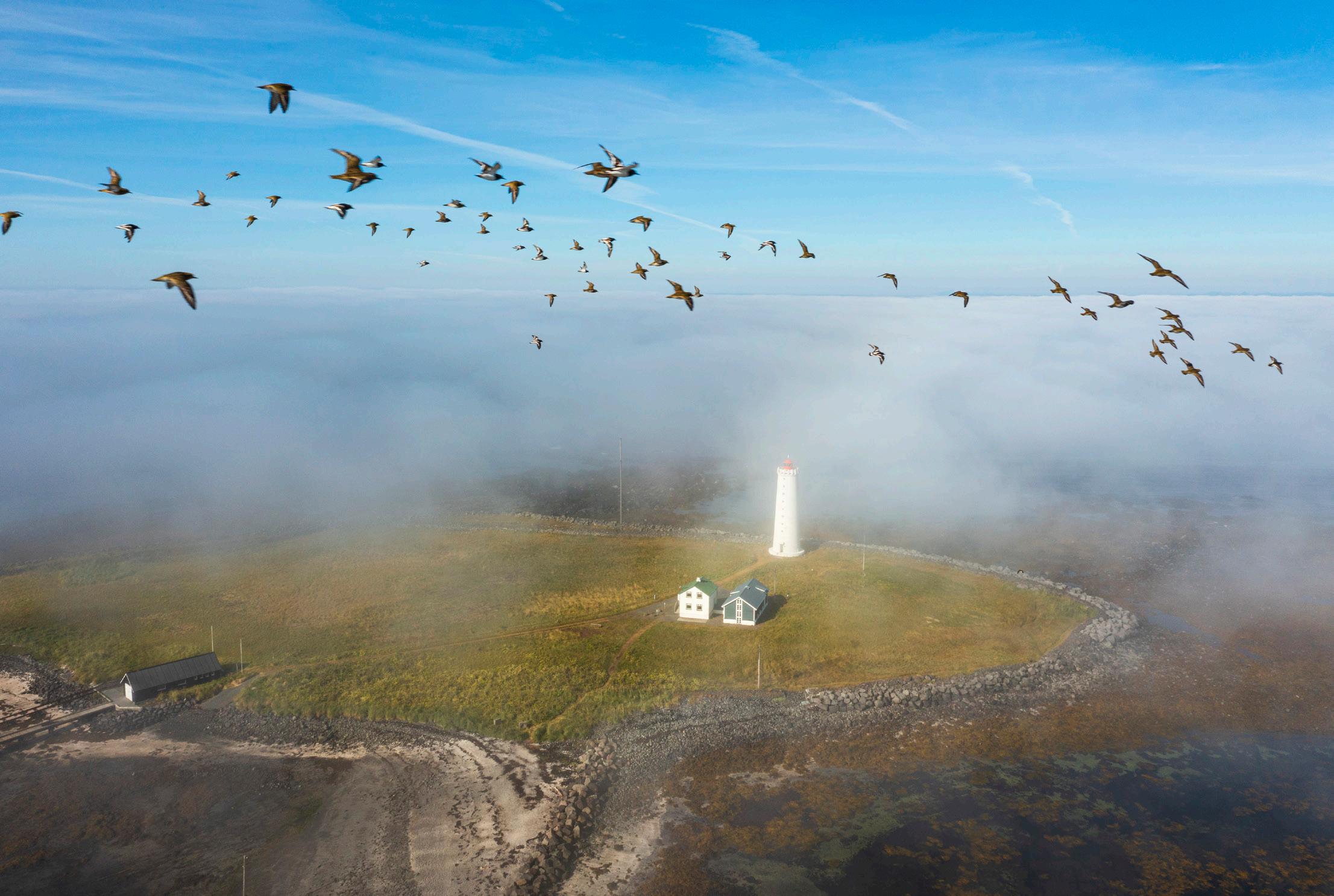 Photography by Golli Words by Jelena Ćirić
Photography by Golli Words by Jelena Ćirić
126 | ICELAND REVIEW
As the summer fades and birds leave for greener shores, the autumn sky rewards those who stay with some green of its own.

ISSUE 05 – 2022 | 127



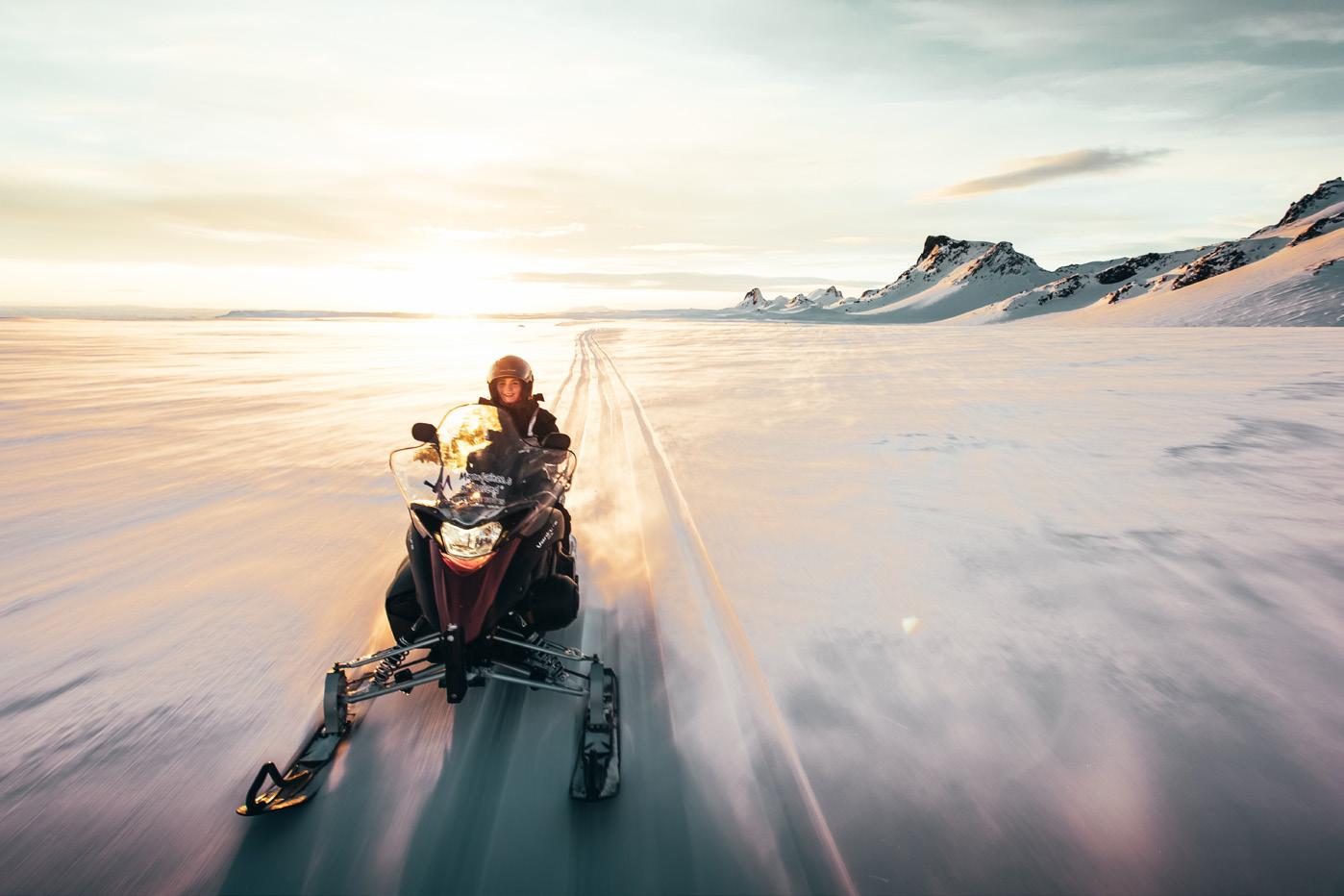

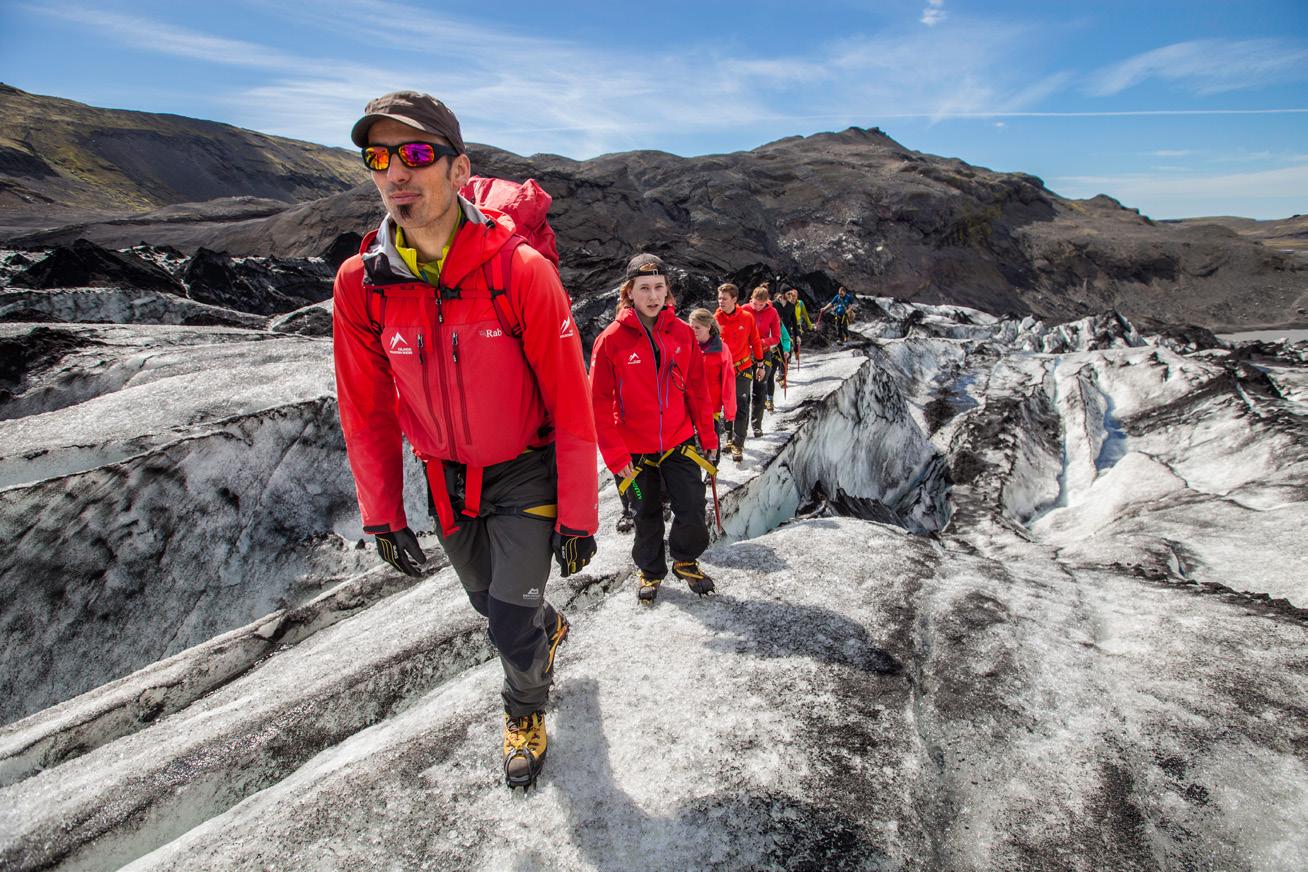



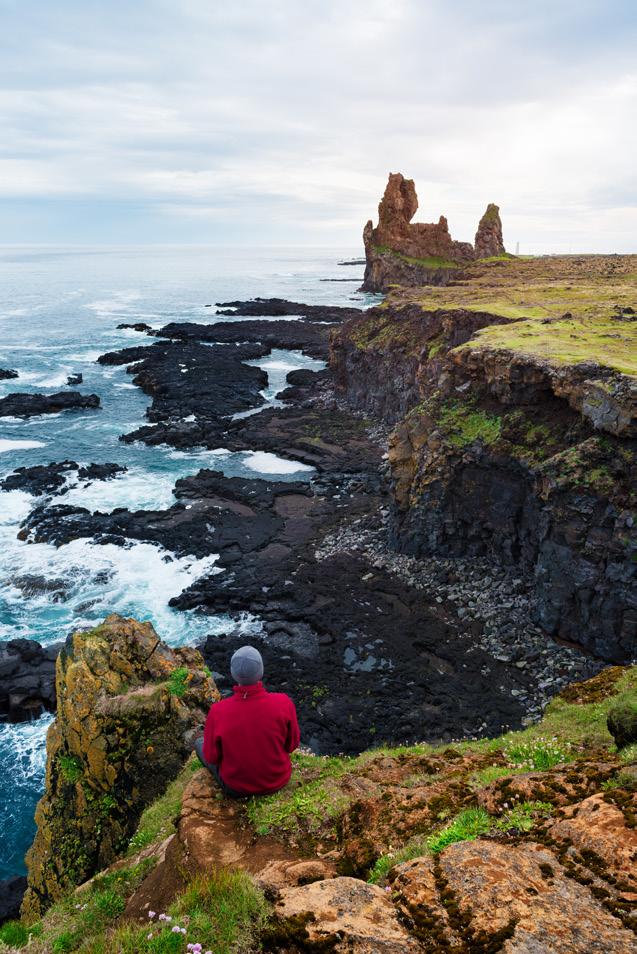
128 | ICELAND REVIEW Volcanic Wonders of Reykjanes Geopark Golden Circle & Glacier Snowmobiling Book on re.is29.999 ISK Blue Lagoon Admission & Transfer Book on re.is16.989 ISK South Coast & Glacier Hiking Book on re.is19.999 ISK Book on re.is9.499 ISK Book on re.is12.999 ISK SOUTH SHORE ADVENTURE A full day of awe-inspiring sights! Our most popular tour includes a visit to Friðheimar greenhouse THE GOLDEN CIRCLE & FRIÐHEIMAR Book on re.is9.499 ISK Get to know the world’s most northerly capital! CITY SIGHTSEEING Book on re.is4.500 ISK Wonders of Snæfellsnes National Park Book on re.is18.999 ISK Prices & availability are subject to change without notice.
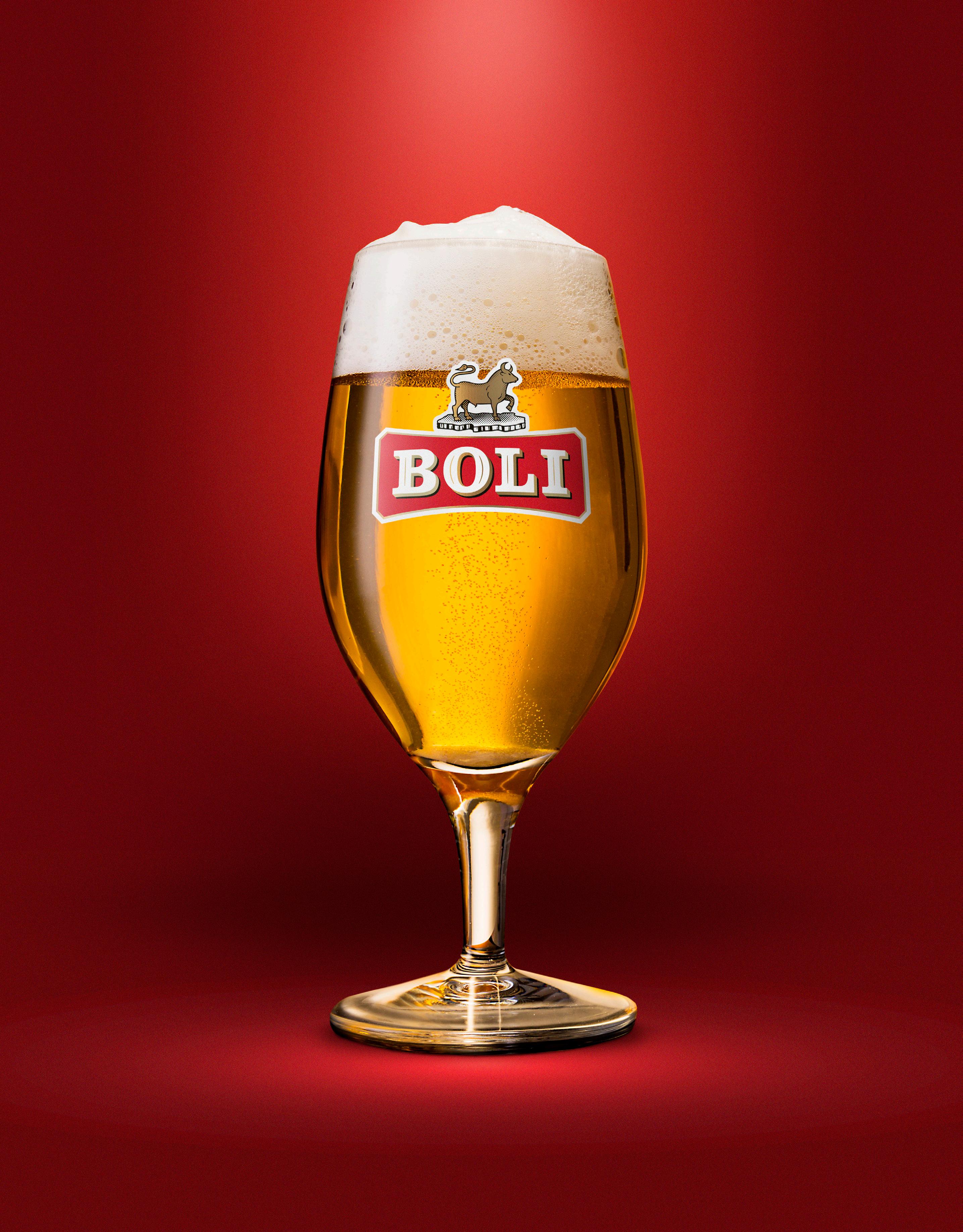
ICELANDIC PREMIUM LAGERCRAFTED WITH PATIENCE
The wonder of our water
Thirty years ago, we began researching Blue Lagoon Water. Today, we have unlocked its secrets. Harnessed its powers. Explored its possibilities. We have created a universe of radiant wellbeing.














